1. INTRODUCTION AND SAFETY PRECAUTIONS
1.1 Introduction
Dear Customer,
Congratulations on purchasing Mahindra KUV100. Your vehicle has been designed to provide years of safe and dependable service, as long as it is used and maintained in accordance with the instructions provided in this manual.
All persons who will use and/or maintain this vehicle must read, understand and follow all warnings and instructions provided in this manual. This Owner's Manual should be considered an integral part of the vehicle and should remain with the vehicle. However, nothing in this manual, and none of the safety devices installed in the vehicle, are a substitute for careful operation and common sense. Always make sure that your vehicle is in optimum working order, and take note of the road and weather conditions under which you are using your vehicle.
If you have any questions concerning the proper use or maintenance of your vehicle, please call your Authorized Mahindra Dealer. A list of dealers can be found in the Dealer Directory Supplement.
Alternatively you can contact Mahindra at,
- 1800-209-6006 (Toll free)
- customercare@mahindra.com
We extend our best wishes for safe and pleasurable motoring.
Sincerely,
MAHINDRA & MAHINDRA LTD.
Servicing and Summary Data
- For all issues concerning the vehicle and for any need of spare parts, contact only the Authorized Mahindra network
- We recommend you always use genuine Mahindra spare parts when performing repairs on the vehicle
- We suggest that you record the vehicle data in the Warranty Information & Maintenance Guide for future references
1.2 Safety Symbols
Carefully read, understand and follow the safety symbols/ instructions given in this manual.
To emphasize information and procedures regarding safety, use, maintenance, etc., the following symbols are used throughout the manual.
1.3 General Safety Information and Instructions
Failure to follow the warnings and instructions provided in this manual could result in failure of the vehicle, an accident and/or serious personal injury.
- Carefully read, understand and follow the warnings and instructions given in this manual. This manual is an essential part of the product. Keep it in the vehicles glove box for future reference
- Spare bulb and first aid kit are placed in the glove box of the vehicle. Ensure that they are not taken out of the vehicle at any point of time.
- Please note that throughout this manual, reference is made that “an accident” could occur. An accident could cause you or a bystander to sustain personal injury, or result in property damage
- Never use a mobile phone or any device with headphone while driving. This may take your focus off the road and lead to accidents
- Please be advised that many service and repair tasks require specialized knowledge, tools and experience. General mechanical aptitude may not be sufficient to properly service or repair your vehicle. If you have any doubt whatsoever regarding the ability to properly service or repair your vehicle, please contact your Authorized Mahindra Dealer or a qualified technician
- Inspect the seat belt system periodically, checking for cuts, frays or wear in the seat belt webbing, or loose buckles, retractors, anchors or other loose parts. Damaged parts must be replaced immediately
- Always start and operate the engine in a well-ventilated area. If in an enclosed area, vent the exhaust to the outside. Do not modify or tamper with the exhaust system
- Examine tyres for excessive tread wear and uneven wear patterns. Check for stones, nails, glass, or other objects lodged in the tread and check sidewalls for any cuts, cracks, or other signs of wear. Replace as necessary
- Always maintain the safety labels affixed to your vehicle in a good legible condition
- All signal lamps, buzzers, shields, guards and other protective safety devices must always remain in place and in good, proper working condition
- The life span of Mahindra products depend on many factors. Improper use, abuse or harsh use in general may compromise the integrity of the vehicle and significantly reduce its life span. The vehicle is also subject to wear over a period of time. Please have your vehicle regularly inspected by an Authorized Mahindra Dealer or a qualified mechanic. If the inspection reveals any damage or excessive wear, immediately replace or have the component serviced
- We recommend that you use only genuine parts supplied by Mahindra. The use of non-Mahindra parts will not be covered by warranty
- Never crawl under or be in close proximity to the vehicle when it is lifted off the ground (by a jack), unless the vehicle is properly supported with jack stands, wheel chocks and other appropriate safety devices
- Never attempt any repairs or adjustments to any component while the vehicle is in motion. Always switch off the engine, and wait for the engine to come to a complete stop before performing any repairs or adjustments
- The vehicle identification plates are the only legal identification reference, hence it is necessary to keep them in good condition. Never modify data on the plates or remove them. The customer is responsible for any possible tampering with the plates, which will immediately void the warranty
- Do not attempt sharp turns, abrupt maneuvers, or other unsafe driving actions that can cause loss of vehicle control. When the vehicle is fully loaded, drive at a slow speed, especially when turning. Note that the centre of gravity of the vehicle changes when the vehicle is fully loaded , and also if luggage is mounted on the roof carrier
1.4 To Owner’s of a Mahindra Vehicle
When first driving the vehicle after long periods of non-use, you may experience a temporary drive disturbance. This is a characteristic of the tyres and should be no reason for concern. The condition should correct itself within 5-15 kms. of driving. If the disturbance persists, have the tyres checked by an Authorized Mahindra Dealer.
Your driving ability can be seriously impaired by alcohol even if the blood alcohol level is far below the legal minimum. Drunken driving is one of the most frequent causes of accidents.
Never drink and drive. Drinking and driving will lead to an accident resulting in serious personal injury.
Your driving ability can be seriously impaired through the use of prescription or non-prescription drugs or medication (even cough syrup). If you are taking any sort of drug or medication, be sure that it will not affect your driving ability.
Use of electrical devices such as mobile phones, computers, portable radios or other by the driver while driving is dangerous. In exceptional condition if use of a mobile phone is necessary despite this warning, use a hands-free system to ensure that the hands are free to drive the vehicle. Even hands-free do not ensure that due to distraction an accident will not happen
Please comply with the legal regulations concerning the use of communication equipment in vehicles in your country.
When you are driving over long distances, follow these tips so that you have a safe journey;
- Lack of sleep or fatigue will impact your ability to drive safely.
- Exercise your eyes by shifting the focus of your eyes to different parts of the road.
- Use stimulating beverages such as coffee or tea.
- Relax and stay calm.
- Take breaks at regular intervals
All of us should play our part in protecting our environment. Judicious vehicle usage and ensuring hazardous waste disposal (including cleaning and lubrication fluids) are important steps towards this initiative.
Mahindra vehicles confirm to existing emission norms (standards). Adhering to the periodical maintenance schedule and using Mahindra genuine parts will help retain emission performance of the vehicle and is a pre-requisite for emissions warranty coverage.
If you have any questions concerning the proper use or maintenance of your vehicle, please call your Authorized Mahindra Dealer. A list of dealers can be found in the Dealer Directory Supplement or on the Internet.
Alternatively you can contact us on 1800-209-6006/ customercare@mahindra.com.
Driving smoothly during first 1000 kms. will help to prevent abnormal and premature system wear . Proper running in will improving the life of drivetrain and vehicle components.
A new engine may consume more oil during the first 1000 kms. of running. This should be considered as a normal part of break-in and not interpreted as any problem with the engine.
Mahindra uses high quality parts for building the vehicles.
In the event that any parts need replacement, we recommend that you use only Mahindra genuine parts.
Non-Mahindra parts may harm vehicle performance and will not be covered by your Mahindra warranty.
To avoid counterfeit parts and to protect our brand image, Mahindra genuine parts are packed in a branded carton. Look for the “Mahindra Genuine Parts” logo.
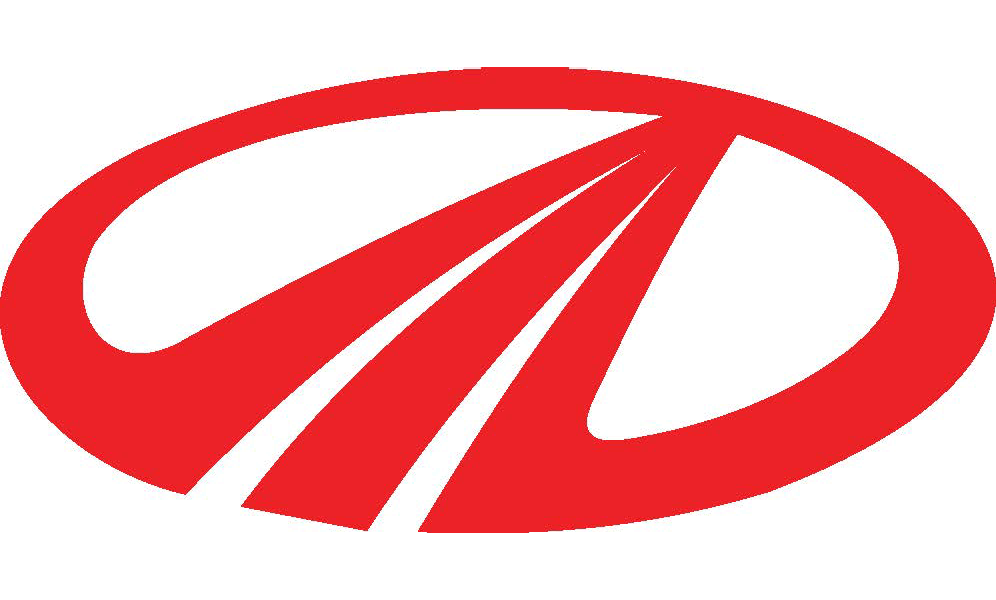
Any unauthorized modifications or alterations to this vehicle or failure to use appropriate specification and quality spare parts could seriously affect vehicle road worthiness and safety leading to an accident, resulting in serious injury
A wide selection of quality accessories is available through your authorized Mahindra dealership. These accessories have been specifically engineered to allow you to personalize your vehicle to suit your requirements and compliment its style and aerodynamic appearance.
Each accessory is made from high quality materials and meets Mahindra's rigid engineering and safety specifications. Every Mahindra accessory installed according to the Mahindra installation provisions comes with the respective accessory warranty.
Consult your Mahindra authorized dealer for detailed information about accessories available for your specific model variant.
For maximum vehicle performance and safety considerations always keep the following information in mind.
- When adding accessories, equipment, passengers and luggage to your vehicle, do not exceed the total weight capacity of the vehicle or of the front and rear axle. Consult Mahindra authorized dealer for specific weight information.
- Bull bars and nudge guards are not recommended for variants with an airbag.
- Accessories causing any change in vehicle specifications like wheel rims, bull bars, etc., may affect the performance of safety systems.
- Mobile communication systems such as two way radios, telephones and theft alarms that are equipped with radio transmitters and installed in your vehicle should comply with the local regulations and should be installed only by a your Authorized Mahindra Dealer
When leaving your vehicle unoccupied;
- Always remove the ignition key when you park the vehicle
- Close all the windows completely and lock all the doors
- Do not leave any valuables in your vehicle. If you must leave something in your vehicle, hide them and securely lock all the doors
2 GENERAL
2.1 Feature Matrix
In view of our policy of continuously improving our products, we reserve the right to alter specifications, designs or features without prior notice and without liability.
We recommend that you contact the nearest Authorised Mahindra Dealer for the latest features applicable to your vehicle.
| Feature | TRIP |
|---|---|
| Collapsible Steering Column | ✓ |
| ABS with Electronic Brake Force Distribution | ✓ |
| STEEL RIM WHEELS (14") | ✓ |
| REAR SPOILER | ✓ |
| TILT STEERING ADJUSTMENT | ✓ |
| ELECTRIC POWER STEERING | ✓ |
| GEAR SHIFT INDICATOR* | ✓ |
| HEATING, VENTILATION AND AIR CONDITIONING (HVAC) | ✓ |
| ADJUSTABLE SEAT BACK RECLINER | ✓ |
| ADJUSTABLE FRONT ROW HEADRESTS* | ✓ |
| LED INTERIOR LAMPS | ✓ |
| STORAGE SPACE UNDER CO-DRIVER SEAT* | IN 6-SEATER MODEL ONLY |
| 12V POWER OUTLET | ✓ |
| ORVM ADJUSTMENT | INTERNALLY ADJUSTABLE |
| *If equipped | |
2.2 Lubricants and Capacities
| System | Lubricant | Capacity | Specification | Remarks |
|---|---|---|---|---|
| ENGINE mFalcon D75(Diesel) | MAHINDRA “MAXIMILE FEO” New Technology Genuine Engine Fluid | 3.5 liters | Special Engine Fluid | Always use "MAXIMILE FEO" new generation Mahindra genuine engine oil. This is specially developed for your engine’s optimum performance and fuel efficiency. In extreme cases of emergency and non-availability of above oil, we suggest Engine Oil meeting minimum API CH-4 SAE 15W-40 specification can be used and replaced at 5000 km. This alternate oil or other Brand will not provide equivalent performance of above Genuine oil |
| ENGINE mFalcon G80(Petrol) | MAHINDRA “MAXIMILE FEO V2” New Technology Genuine Engine Fluid | 3.5 liters | Special Engine Fluid | Always use "MAXIMILE FEO V2" new generation Mahindra genuine engine oil. This is specially developed for your engine’s optimum performance and fuel efficiency. In extreme cases of emergency and nonavailability of above oil, we suggest Engine Oil meeting minimum API SL SAE 15W-40 specification to be used and replaced at 5000 km. This alternate oil or other Brand will not provide equivalent performance of above Genuine oil. |
| ENGINE (Bi-Fuel) | MAHINDRA “MAXIMILE CNG” New Technology Genuine Engine Fluid | 3.5 liters | Special Engine Fluid | Always use "MAXIMILE" new generation Mahindra genuine engine oil. This is specially developed for your engine’s optimum performance and fuel efficiency. In extreme cases of emergency and non-availability of above oil, we suggest Engine Oil meeting minimum API SL SAE 15W-40 specification to be used and replaced at 5000 km. This alternate oil or other Brand will not provide equivalent performance of above Genuine oil |
| Transaxle | MAHINDRA “MAXIMILE SYNTEC F2” New Generation Genuine Transmission Fluid | 1.5 liters | Special Transmission Fluid | For other than Maximile brand, the subsequent oil change interval has to be reduced to 50,000 kms if the oil meets minimum of Manual Transmission Fluid, SAE 75W-90 specification. Other Brands may not provide equivalent performance of recommended genuine oil |
| Brake and Clutch | MAHINDRA “MAXIMILE DOT 4” Genuine Brake fluid | 0.75 liters | If Maximile DOT 4 brake fluid is not used and in emergency conditions, use Brake Fluid Meeting SAE J1703 FMVSS NO.116 DOT 4 OR IS 8654 TYPE2 Specification and change it at 30,000 km or 2 years whichever earlier | |
| Engine Cooling | MAHINDRA “MAXIMILE ULTRA COOL” GENUINE LONG LIFE COOLANT (READY TO USE COOLANT. NO NEED TO MIX WATER) | 4.0 +/- 0.2 (Diesel) | Brand Specific. Don't use other Coolants / Water for top up. In case of emergency, use Coolant meeting JIS K2234 Specification should be used (30% Concentration Diluted with Distilled water) and reduce the change interval to 30,000 KM. | |
| Engine Cooling | MAHINDRA “MAXIMILE ULTRA COOL” GENUINE LONG LIFE COOLANT (READY TO USE COOLANT. NO NEED TO MIX WATER) | 2.5 +/- 0.2 (Petrol) | Brand Specific. Don't use other Coolants / Water for top up. In case of emergency, use Coolant meeting JIS K2234 Specification should be used (30% Concentration Diluted with Distilled water) and reduce the change interval to 30,000 KM. | |
2.3 Dimensions
2.3.1 Front View
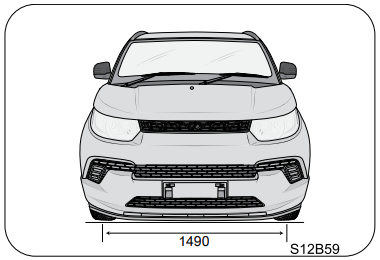
2.3.2 Rear View
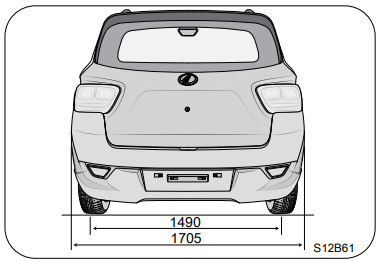
2.3.3 Side View
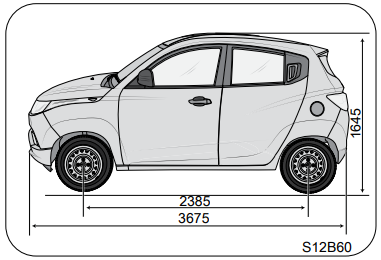
| DIMENSION & WEIGHTS | mm |
|---|---|
| Wheel Base | 2385 mm |
| Overall Length | 3675 mm |
| Overall Width | 1705 mm |
| Overall Height | 1645 mm |
| Track Width (Front) | 1490 mm |
| Track Width (Rear) | 1490 mm |
| The specifications are for reference only. Subject to change without prior notice | |
2.4 Bulb Specification
| Lamp Bulb | Wattage | No. of Bulbs per Vehicle |
|---|---|---|
| Head Lamp - Low Beam | 55W | 2 |
| Head Lamp - High Beam | 60W | 2 |
| Front Parking Lamp | 4.5W | 2 |
| Rear Parking Lamp | 5W | 4 |
| Front Turn Signal Lamp | 21W | 2 |
| Side Turn Signal Lamp (Fender) | 5W | 2 |
| High Mount Stop Lamp | 21W | 1 |
| Brake Lamp | 21W | 2 |
| Rear Turn Signal Lamp | 21W | 2 |
| Reversing Lamp | 32W | 2 |
| Rear License Plate Lamp | 5W | 2 |
| Roof Lamp Bulb | LED | 1 |
2.5 Fuses and Relays
A fuse is electric protection device. The fuse is placed in the electrical circuit, so that when current flow exceeds the rating of the circuit/fuse, it blows off. The element in the fuse melts, opening the circuit and preventing other components of the circuit from getting damaged by the over current. The size of the metal fuse element determines the rating. Once a fuse blows off, it must be replaced with a new one, of the same rating.
Switch the ignition and all electrical equipment OFF before touching or attempting to change a fuse.
Replacement fuse must be with the same rating as the one you have removed.
You can identify a blown fuse by a break in the filament. All fuses except high current fuses are press fit.
Never touch fuses with bare hands. Always use a fuse puller to remove and refit the fuses.
Be careful while removing the relay, do not shake or apply excessive force to avoid damage to relay terminal.
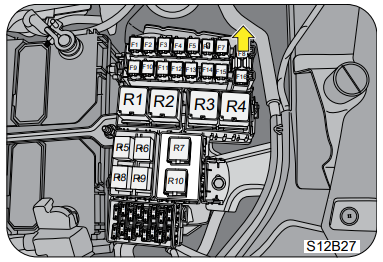
- Engine Compartment Fuse Box
- Instrument Panel Fuse Box
- Battery Mounted Fuse Box
2.5.1 Engine Compartment Fuse Box
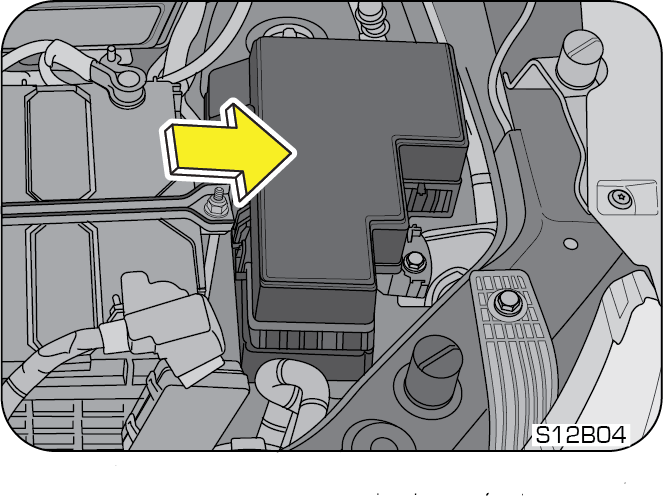
- Slightly press/nudge the fuse cover towards the vehicle LHS and remove the left snap lock
- Further, push top cover towards vehicle RHS and remove/pull the cover completely
Fuse puller is available in this fuse box location.
Petrol/Bi-Fuel
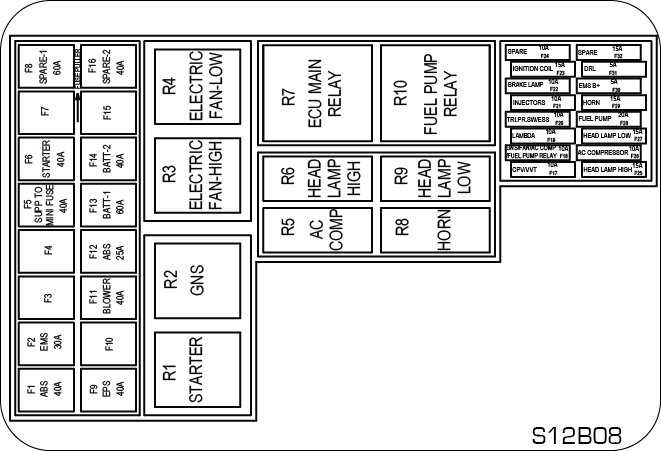
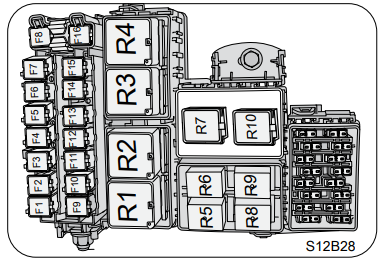
| Fuse No | Fuse Rating | Circuit |
|---|---|---|
| F1 | 40A | ABS |
| F2 | 30A | EMS |
| F3 | BLANK | |
| F4 | BLANK | |
| F5 | 40A | SUPPLY TO MINI FUSE |
| F6 | 40A | STARTER |
| F7 | BLANK | |
| F8 | 60A | SPARE -1 |
| F9 | 40A | EPS |
| F10 | BLANK | |
| F11 | 40A | BLOWER |
| F12 | 25A | ABS |
| F13 | 60A | BATT-1 |
| F14 | 40A | BATT-2 |
| F15 | BLANK | |
| F16 | 40A | SPARE -2 |
| F17 | 10A | CPV/VVT |
| F18 | 10A | FAN/AC COMP/FUEL PUMP RELAY |
| F19 | 10A | LAMBDA SENSOR |
| F20 | 10A | TRI.PR.SW/ESS |
| F21 | 10A | INJECTORS |
| F22 | 10A | BRAKE LAMP |
| F23 | 15A | IGNITION COIL |
| F24 | 10A | SPARE |
| F25 | 15A | HEAD LAMP HIGH |
| F26 | 10A | AC COMPRESSOR |
| F27 | 15A | HEAD LAMP LOW |
| F28 | 20A | FUEL PUMP |
| F29 | 15A | HORN |
| F30 | 5A | EMS B+ |
| F31 | DRL | |
| F32 | 15A | CNG ECU# |
| # Applicable only for Bi-Fuel | ||
| Relay No | Circuit |
|---|---|
| R1 | STARTER |
| R2 | |
| R3 | ELECTRIC FAN-HIGH |
| R4 | ELECTRIC FAN-LOW |
| R5 | AC COMPRESSOR |
| R6 | HEAD LAMP HIGH |
| R7 | ECU MAIN RELAY |
| R8 | HORN |
| R9 | HEAD LAMP LOW |
| R10 | FUEL PUMP RELAY |
Diesel
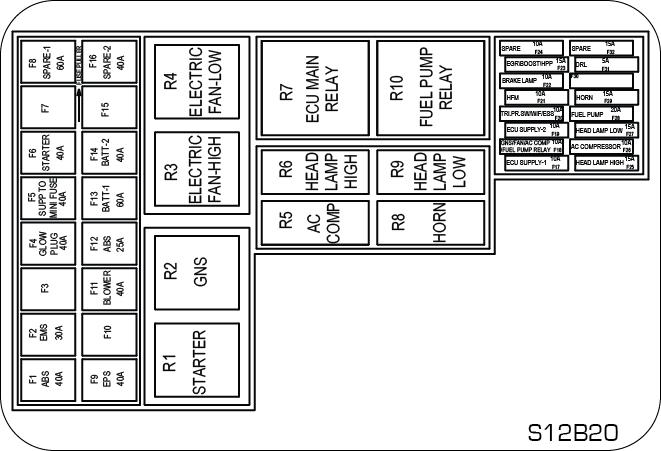

| Fuse No | Fuse Rating | Circuit |
|---|---|---|
| F1 | 40A | ABS |
| F2 | 30A | EMS |
| F3 | BLANK | |
| F4 | 40A | GLOW PLUG |
| F5 | 40A | SUPPLY TO MINI FUSE |
| F6 | 40A | STARTER |
| F7 | BLANK | |
| F8 | 60A | SPARE - 1 |
| F9 | 40A | EPS |
| F10 | BLANK | |
| F11 | 40A | BLOWER |
| F12 | 25A | ABS |
| F13 | 60A | BATT- 1 |
| F14 | 40A | BATT- 2 |
| F15 | BLANK | |
| F16 | 40A | SPARE - 2 |
| F17 | 10A | ECU SUPPLY- 1 |
| F18 | 10A | FAN/AC COMP/ FUEL PUMP RELAY |
| F19 | 10A | ECU SUPPLY- 2 |
| F20 | 10A | TRI.PR.SW/ ESS |
| F21 | 10A | HFM |
| F22 | 10A | BRAKE LAMP |
| F23 | 15A | EGR\ BOOST\ HPP |
| F24 | 10A | SPARE |
| F25 | 15A | HEAD LAMP HIGH |
| F26 | 10A | AC COMPRESSOR |
| F27 | 15A | HEAD LAMP LOW |
| F28 | 20A | FUEL PUMP |
| F29 | 15A | HORN |
| F30 | BLANK | |
| F31 | 5A | BLANK |
| F32 | 15A | SPARE |
| Relay No | Circuit |
|---|---|
| R1 | STARTER |
| R2 | GLOW PLUG |
| R3 | ELECTRIC FAN-HIGH< |
| R4 | ELECTRIC FAN-LOW |
| R5 | AC COMPRESSOR |
| R6 | HEAD LAMP HIGH |
| R7 | ECU MAIN RELAY |
| R8 | HORN |
| R9 | HEAD LAMP LOW |
| R10 | FUEL PUMP RELAY |
2.5.2 Instrument Panel Fuse Box
Open the shroud outward to access the instrument panel fuse box
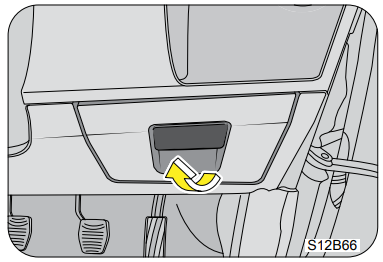
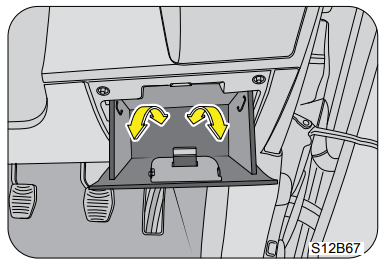
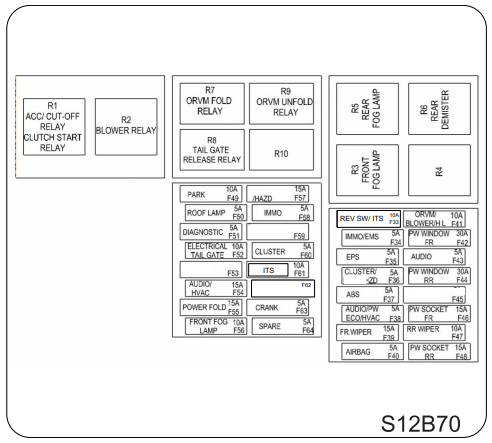
| Fuse No | Fuse Rating | Circuit |
|---|---|---|
| F33 | 10A | REV SW/ ITS |
| F34 | 5A | IMMO/ EMS |
| F35 | 5A | EPS |
| F36 | 5A | CLUSTER/ HAZD |
| F37 | 5A | ABS |
| F38 | 5A | AUDIO/ PW ECO/ HVAC |
| F39 | 15A | FR.WIPER |
| F40 | 5A | AIRBAG |
| F41 | 10A | ORVM/ BLOWER/ H L |
| F42 | BLANK | |
| F43 | 5A | AUDIO |
| F44 | BLANK | |
| F45 | 5A | BLANK |
| F46 | 15A | PW SOCKET FR |
| F47 | 10A | RR WIPER |
| F48 | BLANK | |
| F49 | 10A | PARK |
| F50 | 5A | ROOF LAMP |
| F51 | 5A | DIAGNOSTIC |
| F52 | 5A | KEY IN |
| F53 | 15A | |
| F54 | 15A | AUDIO/ HVAC |
| F55 | BLANK | |
| F56 | BLANK | |
| F57 | 15A | HAZD |
| F58 | 5A | IMMO |
| F59 | BLANK | |
| F60 | 5A | CLUSTER |
| F61 | 5A | ITS |
| F62 | BLANK | |
| F63 | 5A | CRANK |
| F64 | 5A | EMS CNG# |
| # Applicable only for Bi-Fuel | ||
| Relay No | Circuit |
|---|---|
| R1 | ACC/ CUT- OFF/ CLUTCH START RELAY |
| R2 | BLOWER RELAY |
| R3 | BLANK |
| R4 | BLANK |
| R5 | BLANK |
| R10 | BLANK |
2.5.3 Battery Mounted Fuse Box
The battery mounted fuse box is connected to the positive terminal of the battery. The battery mounted fuse box provide short circuit protection for Battery to Main engine compartment fuse box & Electric cooling fan.
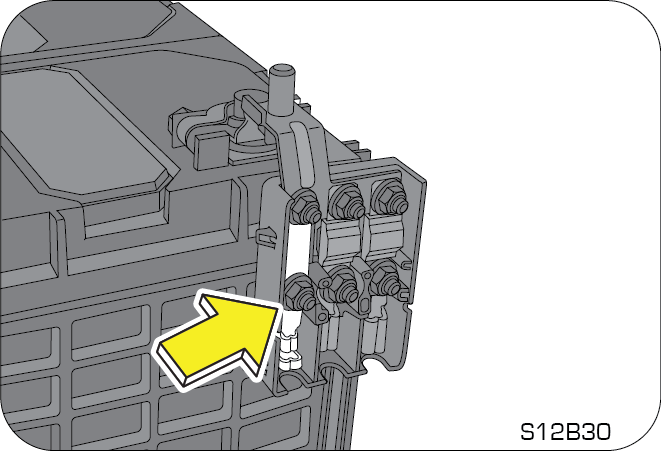
- Brass fuse link
- Bus bar fuse - 80 A
- Cooling fan fuse – 60 A
Do not connect battery terminals with opposite polarity, it will lead to alternator failure
2.6 Flat tyre
Reduce your speed gradually, keeping a straight line. Move cautiously off the road to a safe place well away from traffic. Park on a level spot with firm ground. Stop the engine and turn ON your hazard warning flashers.
Firmly apply the parking brake. Have everyone come out of the vehicle, on the side away from traffic.
Never stop your vehicle in a traffic lane to change a tyre. Keep driving until you reach a safe location.
The jack provided along with the vehicle is to be used only for changing a spare tyre. It is never to be used to perform any other maintenance or repair on the vehicle.
Never place any part of your body under any portion of the vehicle when it is supported only by the jack. You could be crushed by the vehicle if it falls off a jack. Keep bystander’s away from the vehicle.
Find level, solid ground that is clear of oncoming traffic. If you cannot find a safe place to stop, it is better to drive on a flat tyre and damage the rim than take the risk of being hit by oncoming traffic.
After changing a flat tyre, never store the tyre or other equipment in the passenger compartment of the vehicle. This loose equipment could strike an occupant in the event of a sudden stop or collision. Store all of these items in the proper place.
The following sections outline the procedure for changing a flat tyre;
2.6.1 Jack/Wheel Spanner (Gasoline & Diesel)
The jack, wheel spanner, tow hook and jack handle are placed in the tool kit organiser above the spare wheel. It is held in place by a securing nut. Remove the nut, jack handle, wheel spanner and tow hook to access the Jack.
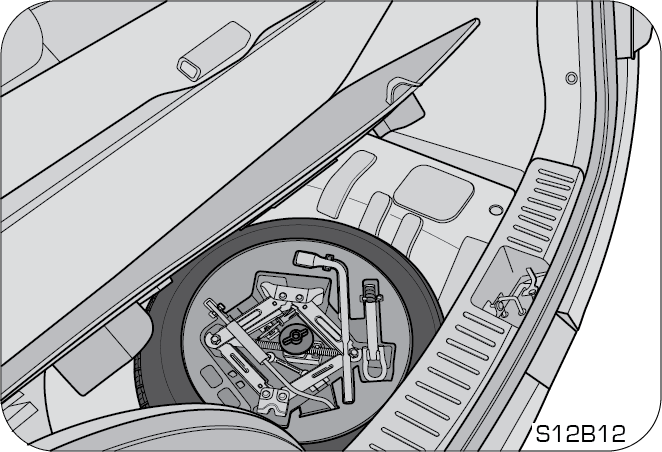
Screwdriver and Double end spanner are not applicable to Domestic.
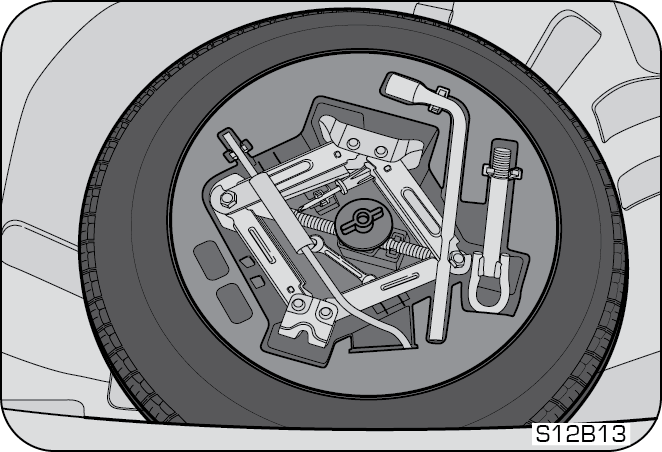
2.6.2 Spare Wheel Removal (Gasoline & Diesel)
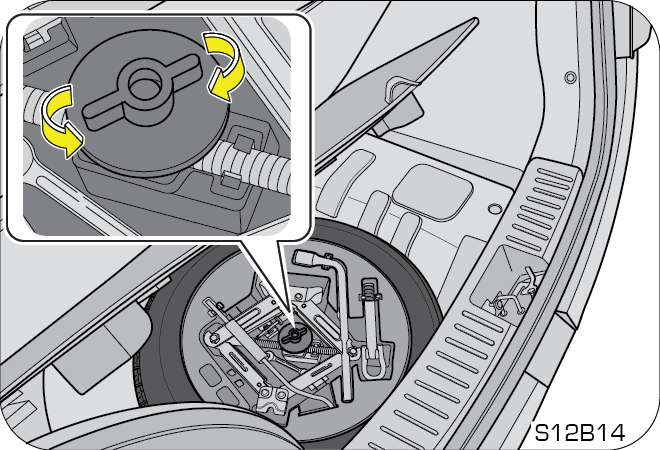
The spare wheel is mounted below the luggage compartment at the rear end of the vehicle. It is held in place by a lock stud with tool kit organiser.
- Rotate the lock stud by hand in anti-clockwise direction and take the complete tool kit organiser out.
- Slowly lift the spare wheel up and take out.
2.6.3 Jack/Wheel Spanner (Bi-Fuel)
In Bi-Fuel variant jack, wheel spanner, tow hook and jack handle are placed behind the RH side of the second row seat.
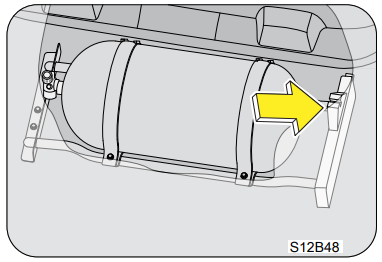
2.6.4 Spare Wheel Removal (Bi-Fuel)
In Bi-Fuel variant jack, wheel spanner, tow hook and jack handle are placed behind the RH side of the second row seat.
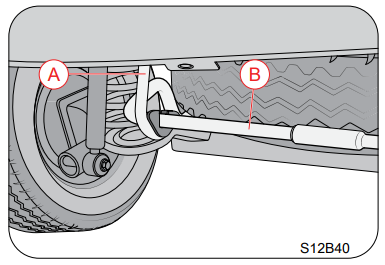
| Item No | Description |
|---|---|
| A | Hook Bolt |
| B | Wheel Carrier |
The spare wheel is mounted below the rear floor on the spare wheel carrier. It is held in place by a Hook bolt.
- Open the spare wheel removal bolt cover in tail door latch trim
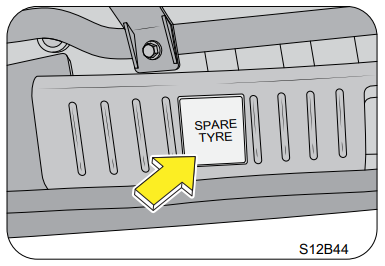
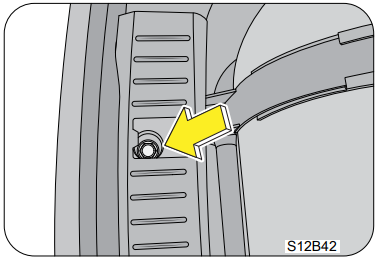
- Insert the wheel spanner and rotate anti clockwise .
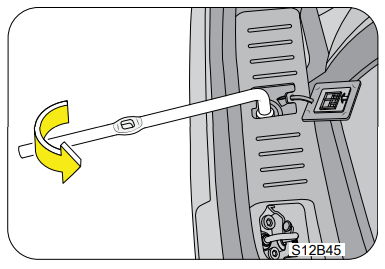
- Lift the carrier assembly slightly with right hand and pull the Jhook off from the carrier.
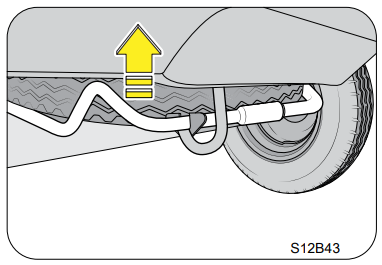
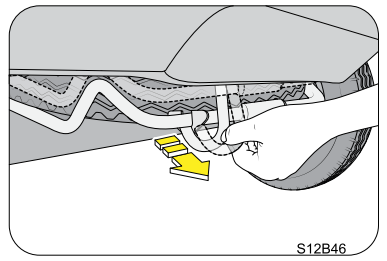
- Slowly drop the spare wheel carrier to the ground and remove the spare wheel.
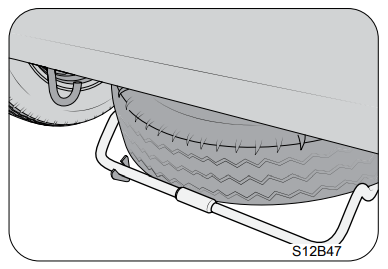
2.6.5 Wheel bolt Loosening
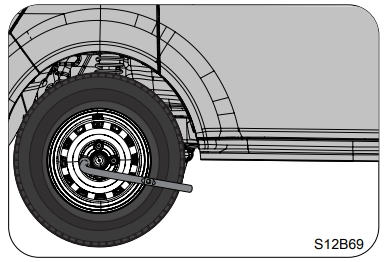
Always loosen the wheel bolts before raising the vehicle. Turn the wheel bolts counter clockwise to loosen as per the crisscross sequence shown. To get maximum leverage, fit the spanner to the bolt so that the handle is on the left side. Grab the spanner near the end of the handle and push down on the handle. Be careful that the spanner does not slip off the bolt. Do not remove the bolts, but loosen them by one or two turns.
Do not apply force with your legs (or stand) on the wheel spanner while loosening/tightening the wheel bolts.
Wrap the tip of a screw driver with cloth, insert it near the lugs of the wheel cap (if equipped) and pry the cap away from the wheel.
Do not try to pry off the wheel cap by hand alone. Take due care in handling the wheel cap to avoid unexpected personal injury.
2.7 Jack Points
Front jack up point -On the side sill in between the groove just behind the front wheels.
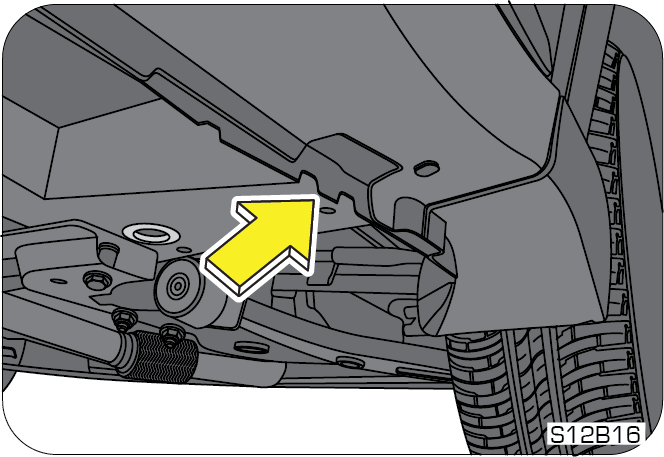
Rear jack up point -On the Side sill in between the groove just in front of the rear wheels.
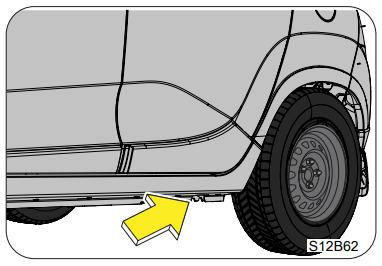
2.7.1 Jacking
Position the jack at the correct jacking point. Make sure the jack is positioned on a level and solid ground. Ensure no one is in the vehicle.
Block the wheel diagonally opposite the flat tyre to keep the vehicle from rolling when it is jacked up. When blocking the wheel, place a wheel block in front of one of the front wheels or behind one of the rear wheels.
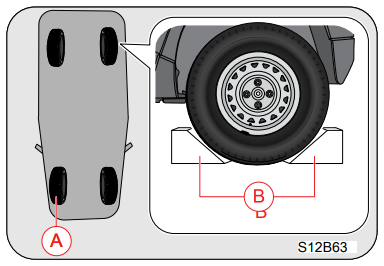
| A | Flat Tyre | B | Chock Blocks |
To raise the vehicle, insert the jack handle end along with the wheel spanner into the jack and turn it clockwise with the jack handle. As the jack touches the vehicle and begins to lift, check that it is properly positioned. Raise it high enough so that the spare tyre can be installed. Remember you will need more ground clearance when putting on the spare tyre than when removing the flat tyre.
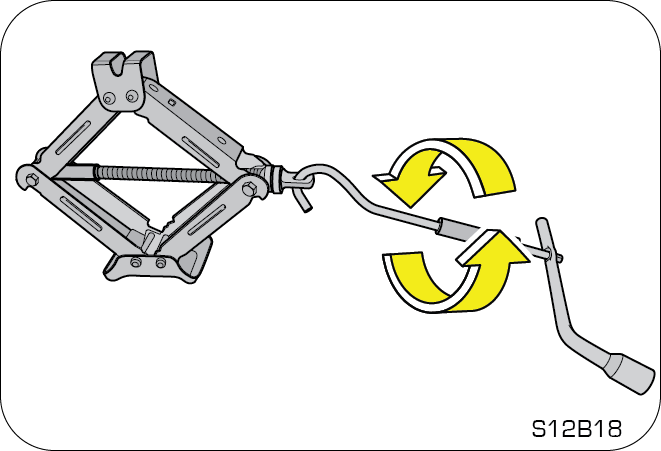
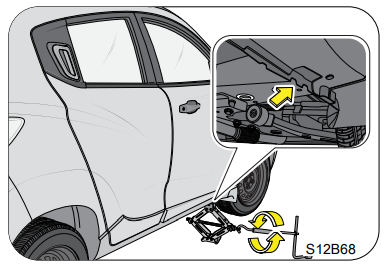
Make sure to set the jack properly in the jacking point. Raising the vehicle with an improperly positioned jack will damage the underbody of the vehicle or may allow the vehicle to fall off the jack and cause personal injury.
- Use the jack only for lifting your vehicle during wheel changing
- Do not raise the jack with someone in the vehicle
- When raising the vehicle, do not place any objects on top of or underneath the jack
- Raise the vehicle only high enough to remove and change the wheel
- Usable extended height of jack is up to the yellow line/mark. Do not raise the jack above the yellow line.
- Follow jacking instructions
- Do not start or run the engine while your vehicle is supported by the jack
Never get under the vehicle when the vehicle is supported by the jack alone.
Remove the wheel bolts. Lift the flat tyre straight off and place it aside. Roll the spare wheel into position and align the holes in the wheel with the holes on the hub. Lift up the wheel and get at least the top bolt aligned through its hole. Wiggle the wheel and fix the other bolts.
Re-install the wheel bolts inward and tighten by hand. Press the wheel inward and tighten the wheel bolts further.
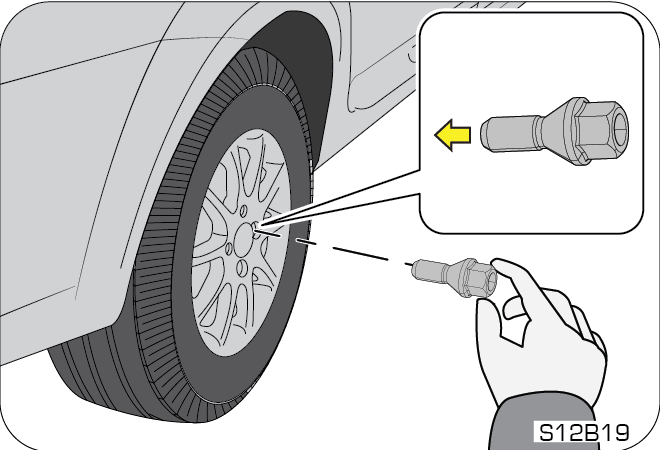
Never use oil or grease on the bolts . Doing so may lead to over tightening of the bolts, wheel nut spanner slip, damage the bolts and also may cause personal injuries. Also, bolts may loosen and the wheels may fall off, which could cause a serious accident. If there is oil or grease on any bolt , clean before installing.
Lower the vehicle completely and tighten the diagonally opposite wheel bolts using the wheel nut spanner. Turn the jack handle extension counter clockwise using the jack handle to lower the vehicle, making sure the handle remains firmly fitted onto the jack handle extension. Make sure the wheel spanner is securely engaged over the bolt. Tighten each bolt a little at a time in the diagonally opposite order as shown. Repeat the process until all the bolts are tight. Do not use other tools or any additional leverage other than your hands, such as a hammer, pipe or your foot.

Improperly or loosely tightened wheel bolts are dangerous. The wheel could wobble or come off. This could result in loss of vehicle control and cause a serious accident. Always make sure all the wheel bolts are properly/securely tightened to the specified torque.
When lowering the vehicle, make sure all portions of your body are clear off the vehicle as it is lowered to the ground. Have the wheel bolts tightened with the torque spanner to 120 Nm, as soon as possible after changing wheels.
If you have rotated, repaired, changed your tyres or changed the wheel rims, check the wheel bolts are still tight after driving about 1,000 kms (Torque 120 Nm).
Put the wheel cap (if equipped) into position aligning the nozzle on the wheel to the nozzle clearance on the wheel cover. Tap it firmly on the sides with your hand to snap it into place.
Check the air pressure of the replaced tyre. If the pressure is lower than recommended, drive slowly to the nearest service station and inflate to the correct pressure. If it is too high, adjust it until it is correct. Always reinstall the valve cap after checking or adjusting tyre pressure. If the cap is not replaced, dirt and moisture could get into the valve core and cause air leakage. If you lose a valve cap, buy another and install it as soon as possible.
2.7.2 Restore the Tools, Jack and Flat Tyre Securely
Restore the tools and jack back to their respective locations. Mount the flat tyre to the spare wheel bracket at the luggage compartment. Put the tool kit organiser back and firmly tighten the securing bolts.
It is recommended to fix the flat tyre at the nearest tyre shop and swap the spare wheel back. The wheel balance and alignment differ from wheel to wheel which may lead to difference in steering and braking.
2.8 Vehicle Identification Number (VIN)
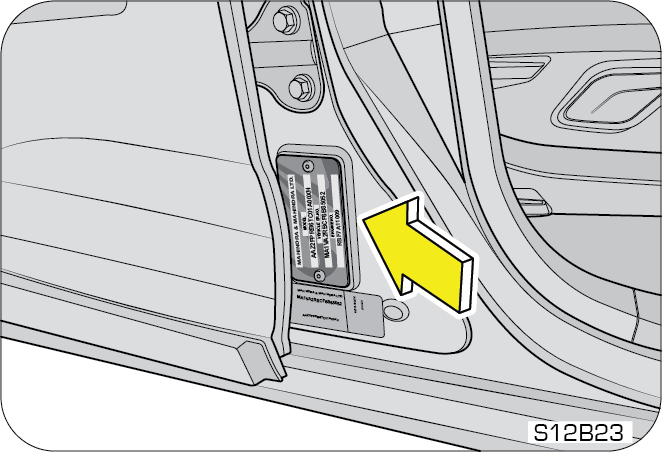
Vehicle Identification Number (VIN) is the legal identity of your vehicle. The vehicle identification number is stamped on the VIN plate riveted on the driver side B pillar of the vehicle. The engine number is also stamped on the same plate.
2.9 Engine Number
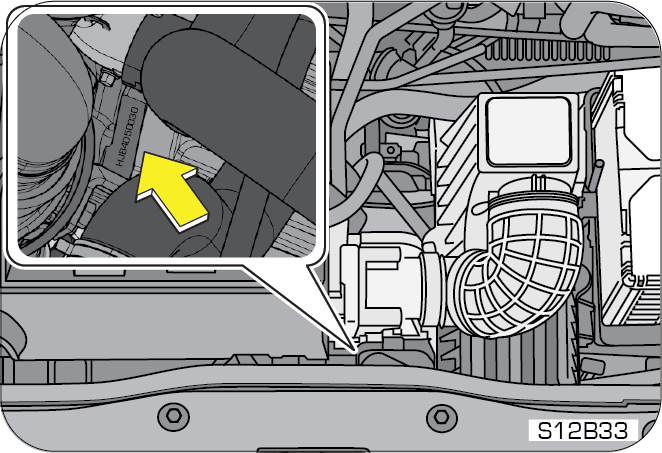
Engine Number is punched on the engine crank case adjacent to transaxle on the front side. The engine number is also stamped on the same plate.
2.10 Technical Specifications
| Technical Specifications | |||
|---|---|---|---|
| DIESEL | PETROL | BI-FUEL (Petrol and CNG) | |
| ENGINE | mFalcon D75 | mFalcon G80 | mFalcon G80 |
| Displacement/Cubic Capacity | 1198 cc | 1198 CC | 1198 CC |
| Type | 4 Stroke Turbocharged Compression Ignition | 4 Stroke Spark Ignition | 4 Stroke Spark Ignition |
| Bore x Stroke | 76 X 88 mm | 76 X 88 mm | 76 X 88 mm |
| No of Cylinders | 3 | 3 | 3 |
| Max. Engine Output (kW @ rpm) | 57.4 kW @ 3750 rpm | 61 KW @ 5500 rpm | Petrol - 61 kW @ 5500 rpm CNG - 52kW @ 5500 rpm |
| Max. Torque (Nm @ rpm) | 190 Nm @ 1750 to 2250 rpm | 115 Nm @ 3500 to 3600 rpm | Petrol - 115 Nm @ 3500 to 3600 rpm CNG - 97Nm @ 3500 to 3600 rpm |
| CLUTCH | |||
| Type | Single plate Dry Diaphragm Type | ||
| TRANSMISSION | |||
| Type | Manual Transaxle | ||
| No. of Gears | 5 Forward + 1 Reverse | ||
| GEAR RATIOS | |||
| I | 3.909: 1 | ||
| II | 2.100: 1 | ||
| III | 1.481: 1 | ||
| IV | 1.094: 1 | ||
| V | 0.838: 1 | ||
| Reverse | 3.769 : 1 | ||
| AXLES | |||
| Front | 3.611: 1 | 4.235: 1 | |
| Rear | N/A | ||
| WHEELS & TYRES | |||
| Rim | 5.5 J x 14" | ||
| Tyres | 185/65 R14 | ||
| STEERING | |||
| Type/Description | Power Assisted- Electric | ||
| SUSPENSION | |||
| Front | Independent McPherson type, Coil Springs with Stabilizer Bar-IFS (FWD) | ||
| Rear | Semi-independent Twist Beam, coil springs | ||
| Anti-rollbar | In front only | ||
| Shock Absorber | Double Acting Telescopic Hydraulic Shock Absorber | ||
| BRAKES | |||
| Service Brake | Hydraulic & Vacuum assisted with optional ABS | ||
| Front | Ventilated Disc | ||
| Rear | Drum type | ||
| Parking Brake | Conventional Parking Brake – Pull Type [IP Mounted] | ||
| FUEL | |||
| Fuel Capacity | 35 liters | CNG Tank – 60 liters Petrol Tank – 35 liters |
|
| ELECTRICAL SYSTEM | |||
| System Voltage | 12V | ||
| Battery Rating | 50Ah | ||
| SEATING | |||
| Seating capacity | 5 & 6 Seater | 6 Seater | 5 & 6 Seater |
3 VEHICLE OVERVIEW
3.1 Front Overview
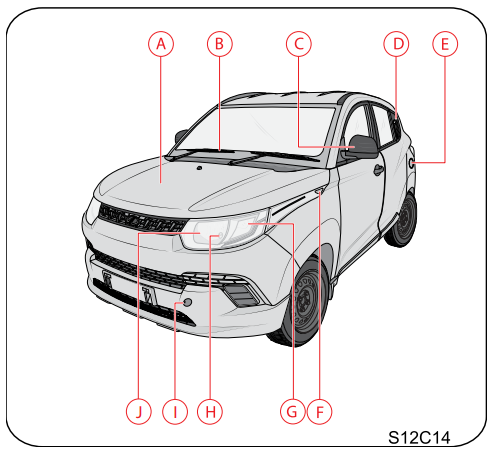
| A | Hood |
| B | Front Wiper |
| C | Outside Rear View Mirror (ORVM) |
| D | Rear Door Outer Handle |
| E | Fuel Lid |
| F | Side Repeater |
| G | Front Turn Signal Lamp |
| H | Front Park Lamp |
| I | Front Tow Hook |
| J | Head lamp |
3.2 Rear Overview
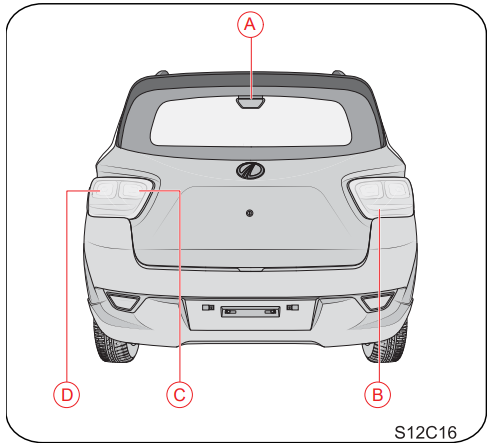
| A | High Mounted Stop Lamp |
| B | Rear Turn Signal Lamp |
| C | Reversing Lamp |
| D | Rear Park Lamp/Brake Lamp |
3.3 Instrument Panel Overview
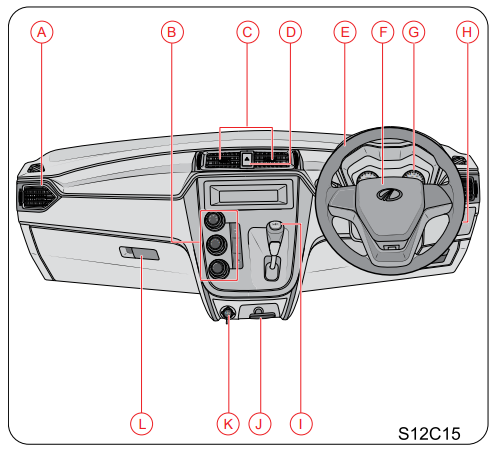
| A | Side Vents |
| B | HVAC Controls |
| C | Center Vents |
| D | Hazard Warning Switch |
| E | Steering Wheel |
| F | Horn Pad |
| G | Instrument Cluster |
| H | Head Lamp Leveling |
| I | Transmission Lever |
| J | Parking Brake |
| K | 12V Power Socket |
| L | Glove Box |
4 INSTRUMENT CLUSTER OVERVIEW
4.1 Instrument Cluster
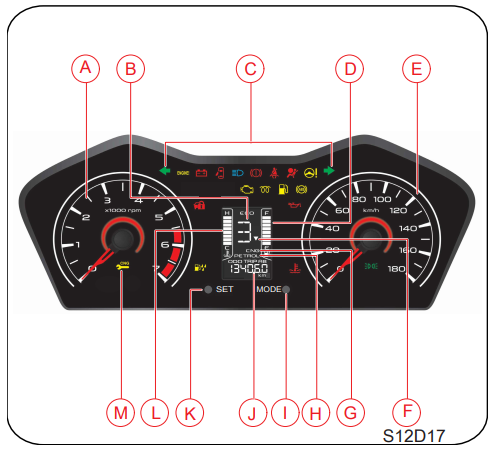
| A | Tachometer / RPM Gauge | F | Gear Shift Indicator* |
| B | Gear Display | G | CNG Mode Display* |
| C | Warning/Tell tale Lamps | H | Petrol Mode Display* |
| D | Fuel Gauge | I | Mode Button |
| E | Speedometer | J | Odometer/Tripmeter |
| K | Set Button | L | Temperature Gauge |
| M | CNG Warning Lamp* |
4.2 Warning Lamps Overview
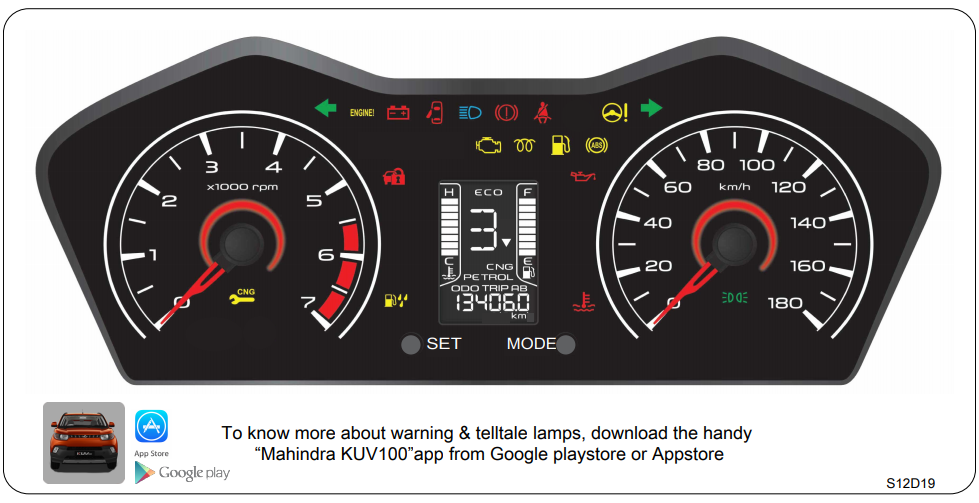
| Park Brake/ Low Brake fluid / EBD malfunction Lamp | EPS Malfunction Lamp | Low Oil pressure Lamp | Battery Charge Lamp | ||||
| Left indicator | Head Lamp High Beam | Glow plug warning Lamp | Seat Belt warning Lamp | ||||
| Right indicator | Check Engine Lamp | Low fuel warning Lamp | Water in fuel warning Lamp | ||||
| ABS warning Lamp | High Temperature Lamp | Park Lamp | Security Lamp | ||||
| CNG Warning Lamp# | Malfunction Lamp | Door Ajar Lamp | |||||
| * Applicable only for Diesel Variant | |||||||
| # Applicable only for Bi-Fuel Variant | |||||||
4.3 Warning Lamps
The phenomenon of warning lamps flashing momentarily when ignition is turned ON is called self-check. This self check is done by the cluster at every ignition ON.
| Symbol | Warning Lamp/Tell Tale | Lamp Pre-check | Lamp Status | Action/Remarks |
|---|---|---|---|---|
|
|
Parking Brake ON/Brake Fluid Low Warning Lamp/ EBD Malfunction | No | Continuously ON | Either one of below conditions:-
1) Park brake might be engaged 2) Brake fluid level might be low 3) EBD Malfunction detected Contact Authorized Mahindra Dealer immediately for assistance if the lamp is not turning OFF even after checking the above conditions |
|
|
Left Turn Indicators | No | Slow or Fast Blinking | Indicates left turn lamp is blinking Slow Blinking: Normal operation Fast Blinking:One /more left turn lamp bulb has fused. Have the bulb replaced |
| Water in Fuel Filter Warning Lamp * | Yes | Continuously ON | Indicates water in fuel filter. Drain the water from filter or contact an Authorized Mahindra Dealer for assistance | |
|
|
Park Lamp | No | Continuously ON | Indicates when Park lamp is switched ON through combination switch |
|
|
Security Lamp | No | Slow or Fast Blinking |
Slow Blinking: Vehicle armed and Immobilizer system active Fast Blinking: Once the ignition is turned OFF, security lamp will blink at fast rate frequency indicating vehicle is secured against unauthorized start of engine |
|
|
Check Engine Lamp | Yes | Continuously ON or Blinking | There is a potential malfunction in the engine system, contact an Authorized Mahindra Dealer immediately |
|
|
High Coolant Temperature Warning Lamp | No | Continuously ON or Blinking | Engine temperature very high. Contact an Authorized Mahindra Dealer immediately |
|
|
Right Turn Indicators | No | Slow or Fast Blinking | Indicates right turn lamp is blinking Slow Blinking: Normal operation Fast Blinking: One /more turn signal lamp bulb has fused. Have the bulb replaced |
|
|
Head Lamp High Beam Indicator | No | Continuously ON | Indicates head lamp high beam is ON |
|
|
ABS Warning Lamp * | Yes | Continuously ON | Indicates malfunction of the ABS system. Contact an Authorized Mahindra Dealer immediately |
|
|
Door Ajar Warning Lamp | No | Continuously ON | Indicates one or more doors are open including bonnet |
|
|
Seat Belt Warning Lamp | No | Blinking | Indicates driver seat belt not fastened. If tell tale is not turning OFF even after fastening the driver seat belt, contact an Authorized Mahindra Dealer for assistance |
|
|
Low Fuel Warning Lamp | No | Continuously ON or Blinking | Lamp Continuously ON and 1 Bar displayed in fuel gauge - The fuel level in the fuel tank is in reserve state.
|
|
|
Malfunction Lamp (OBD) | Continuously ON till Engine Starts | Continuously ON | There is a potential malfunction related to emission control system, contact an Authorized Mahindra Dealer immediately |
|
|
Battery Charging Warning Lamp | Continuously ON till Engine Starts | Continuously ON | Indicates malfunction in the charging system. Contact an Authorized Mahindra Dealer for assistance |
|
|
Low Engine Oil Pressure Warning Lamp | After Pre-check Continuously ON till Engine Starts | Continuously ON | Indicates engine oil pressure is low. Check oil level and top-up or contact an Authorized Mahindra Dealer for assistance |
|
|
EPS Warning Lamp | After Pre-check Continuously ON till Engine Starts | Continuously ON | Indicates malfunction on Electronic Power steering system. Contact an Authorized Mahindra dealer immediately. |
|
|
Glow Plug Indicator * | No | Continuously ON | Indicates a malfunction in the starting system. Contact an Authorized Mahindra Dealer immediately |
|
|
CNG Warning Lamp* | For about 3 seconds | Continuously ON | Indicates a malfunction in the CNG system. Contact an Authorized Mahindra Dealer immediately |
| * If applicable | ||||
5 SEATS AND SEAT BELTS
5.1 Driver seat
5.1.1 Sitting in the Correct Position
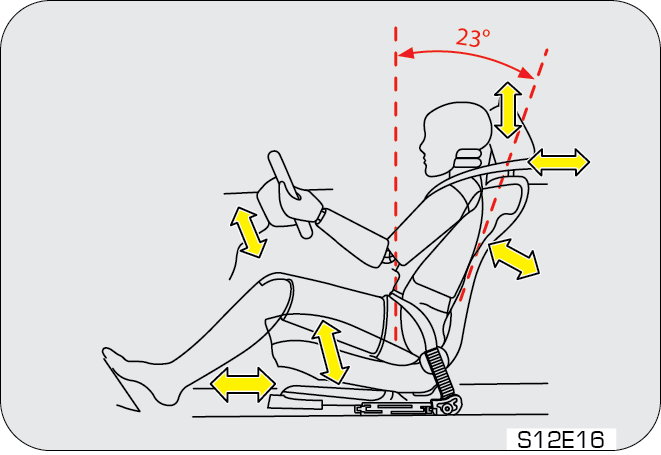
Follow the tips below for a comfortable and safe journey;
- Sit in an upright position with the base of your spine pressed against the seat back
- Adjust the head restraint (if applicable) as close as possible to the above specified position, with the top of the head restraint even with the top of your head
- Maintain sufficient distance between yourself and the steering wheel. Maintain at least a ten inch (10") distance from the centre of the steering wheel to your chest
- The top curve of the steering wheel should align with your chin for ideal road visibility
- Adjust your seat and seat back angle such that your wrists rest on top of the steering wheel freely
- Ensure your legs are in a bent position while fully depressing the clutch pedal
The seat should be adjusted while still maintaining control of the foot pedals, steering wheel and your view of the instrument panel controls.
Never adjust the driver's seat while the vehicle is in motion. The seat may unexpectedly move and cause the driver to unintentionally operate the accelerator or brake, or turn the steering wheel, causing loss of control of the vehicle, an accident or serious personal injury. Adjust the driver's seat only when the vehicle is not in motion.
Never put objects under the seats. They may interfere with the seat-lock mechanism or unexpectedly activate the seat position adjusting lever, causing the seat to suddenly move, resulting in loss of control of the vehicle, an accident or serious personal injury.
While adjusting the seat, do not put your hands under the seat or near the moving parts. This may lead to injuries.
If the back rest is inclined too much, then under severe deaccelration the person can slide under the belt, and negating the safety of the seat belt
5.1.2 Front Seat Slide
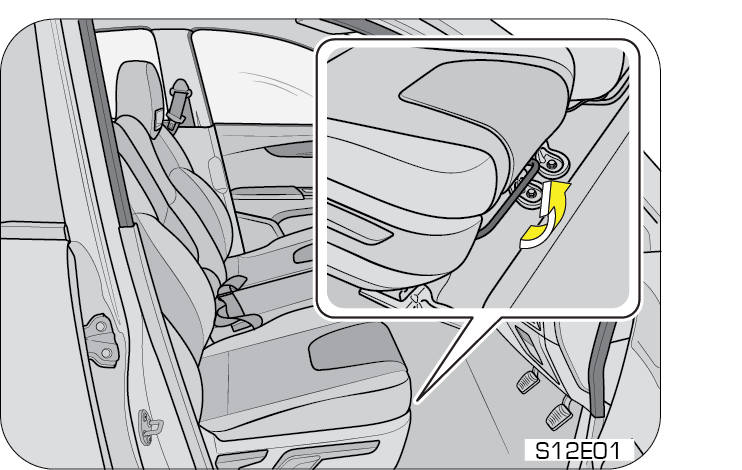
Move the seat forward or backward by lifting the adjustment lever located under the seat front and release once the desired position is reached.
While adjusting the seat, make sure the latch engages fully and the seat is locked firmly in the desired position. An unlocked seat may move in a sudden stop or collision, causing injury to the person in that seat. Push and pull on the seat to be sure it is locked.
5.1.3 Front Seat Recline
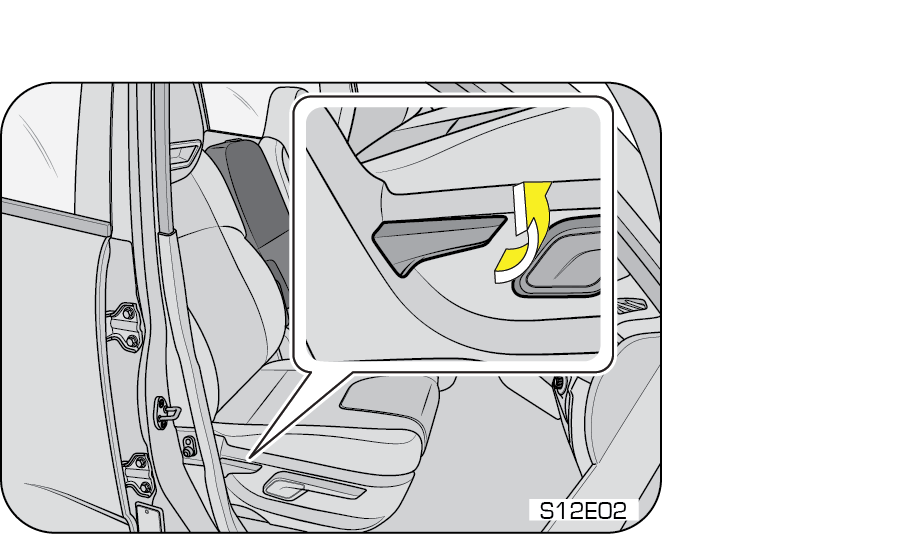
To adjust the seat back, lift the recline lever located on the outboard side of the seat, lean back and release the lever at the desired position. To return the seat back, lift the lever, lean forward, and release the lever.
The seat belts provide maximum protection in a frontal or rear collision when the occupants are sitting up straight and well back in the seats. If you are reclined, the lap belt may slide past your hips and apply restraint forces directly to the abdomen, or the shoulder strap may contact your neck. The more the seat is reclined, the greater the risk of serious injury.
When returning a extremely reclined seat back to its upright position, make sure you support the seat back while operating the lever.
5.2 Head Restraint
5.2.1 Fixed Head Restraint (If applicable)
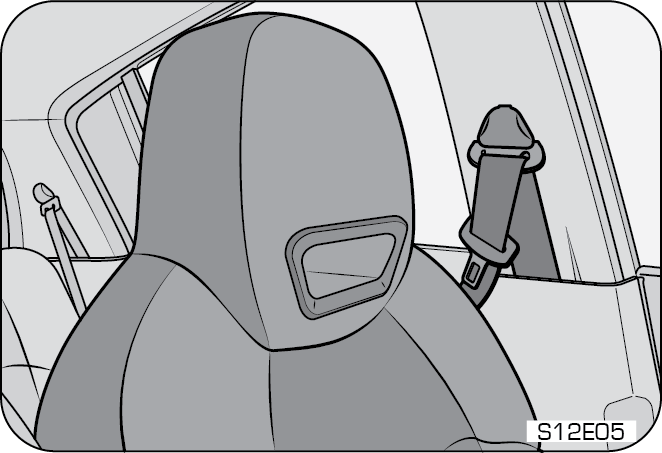
Your vehicle front seats are equipped with fixed head restraints. The head restraint help to avoid the whiplash injury on the neck in the event of rear collision.
The Fixed head restraint comprises of the padded portion which contacts your head and the seat back.
5.2.2 Adjustable Head Restraint(If applicable)
The head restraint comprises of the padded portion which contacts your head . It is inserted/locked in receptacles on the top of the seat back.
Your vehicle front & rear seats are equipped with head restraints which are vertically adjustable. The head restraint help to avoid the whiplash injury on the neck in the event of rear collision.
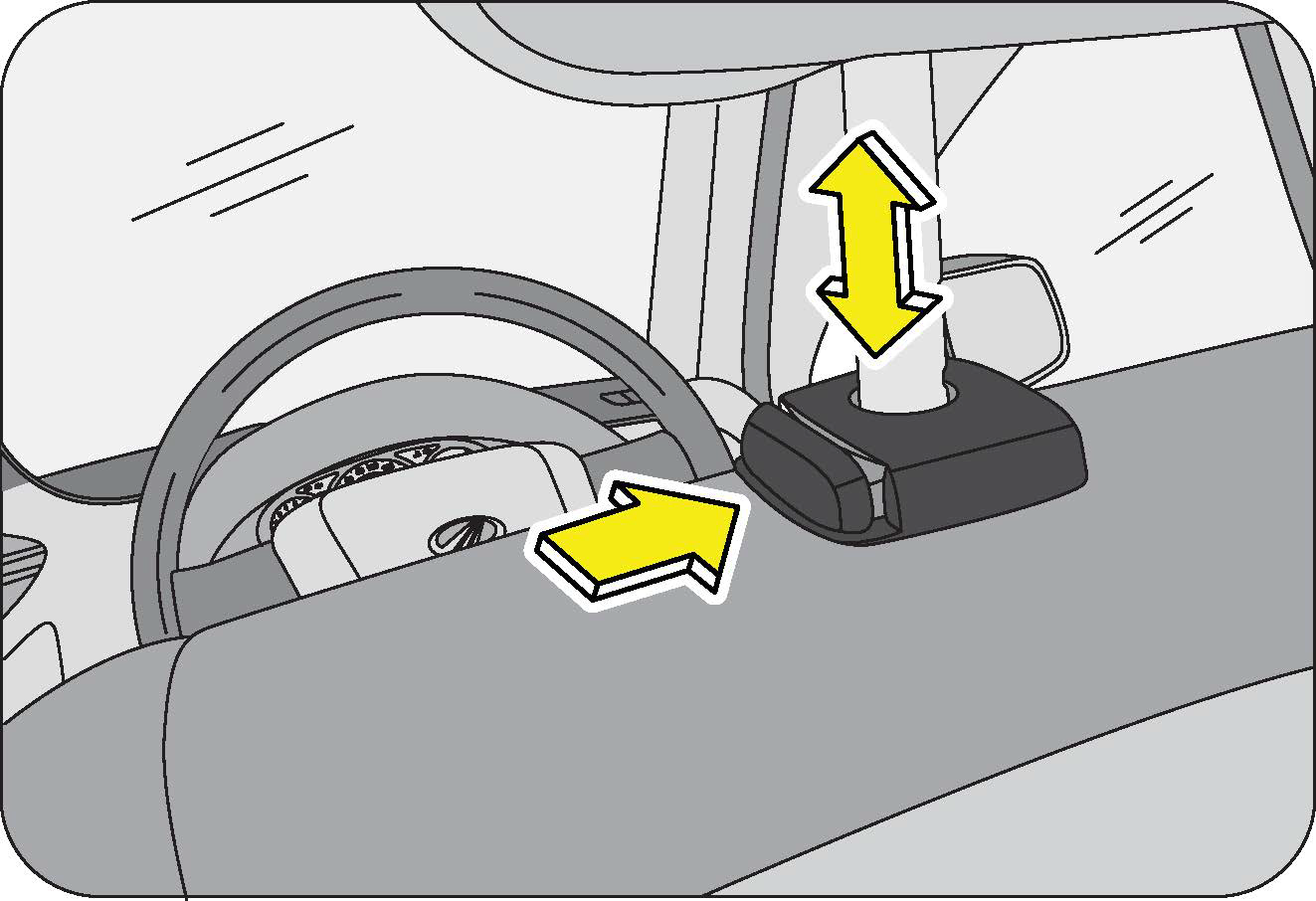
Always align top of the head restraint with the top of your head or as close to it as possible. To raise the head restraint, press the lock knob and pull the restraint up. To lower the head restraint, press the lock knob and push the head restraint down.
5.2.3 Removing Seat Head Restraint
The head restraint can be pulled out completely by depressing the locking button while pulling the restraint out.
5.2.4 Installing Seat Head Restraint
Align the head restraint shafts over the holes on the seat top and push the restraint straight down till you hear the lock click.
Keep the seat back as upright as possible so the headrest is behind, not beneath, and almost touching your head.
Never drive with the head restraints not properly adjusted, head restraints removed or inserted in a flipped condition. With no support behind your head, your neck could be seriously injured in a collision.
Head restraints are provided for the front row and second row outboard occupants.
5.3 Second Row Bench Seat
Loading cargo on the seats is dangerous. The cargo becomes a projectile that could hit and injure passengers in a sudden stop or collision. Cargo should always be kept on the floor.
The second row seat back is fixed and cushion is foldable
5.4 General Warnings and Instructions- Seat Belts
At least once each month, inspect the seat belt webbing for any cuts, tears, or other signs of wear (such as fraying along the edges). Also inspect the anchors, retractors, and buckles to be sure they are tight and operational.
- All occupants, including the driver, should always wear their seat belt no matter how short the trip in order to minimize the risk of severe injury in the event of a crash. In an accident, an un-belted passenger becomes a projectile, and can cause serious injury to himself or another passenger.
- In a rollover crash, an un-belted person is significantly more likely prone to Injury than a person wearing a seat belt
- In order to be properly buckled, you must always sit up straight and keep your feet on the floor in front of you. The lap part must be worn low and tight across your hips, just touching the top of your thighs. While fastening the seat belt, the shoulder strap of the seat belt must pass over your chest and top of your shoulder. It must never touch your neck, face, the side of your shoulder, arm, or pass under your arm. The belt must always be flat against your body and not twisted in any way. Nothing, such as an arm rest, a pocketbook, or any external objects should be between you and the seat belt. Improper wearing of a seat belt will reduce the protection in an accident.
- Seat belts should be adjusted as tightly as possible, consistent with comfort to properly secure the wearer in the seat.
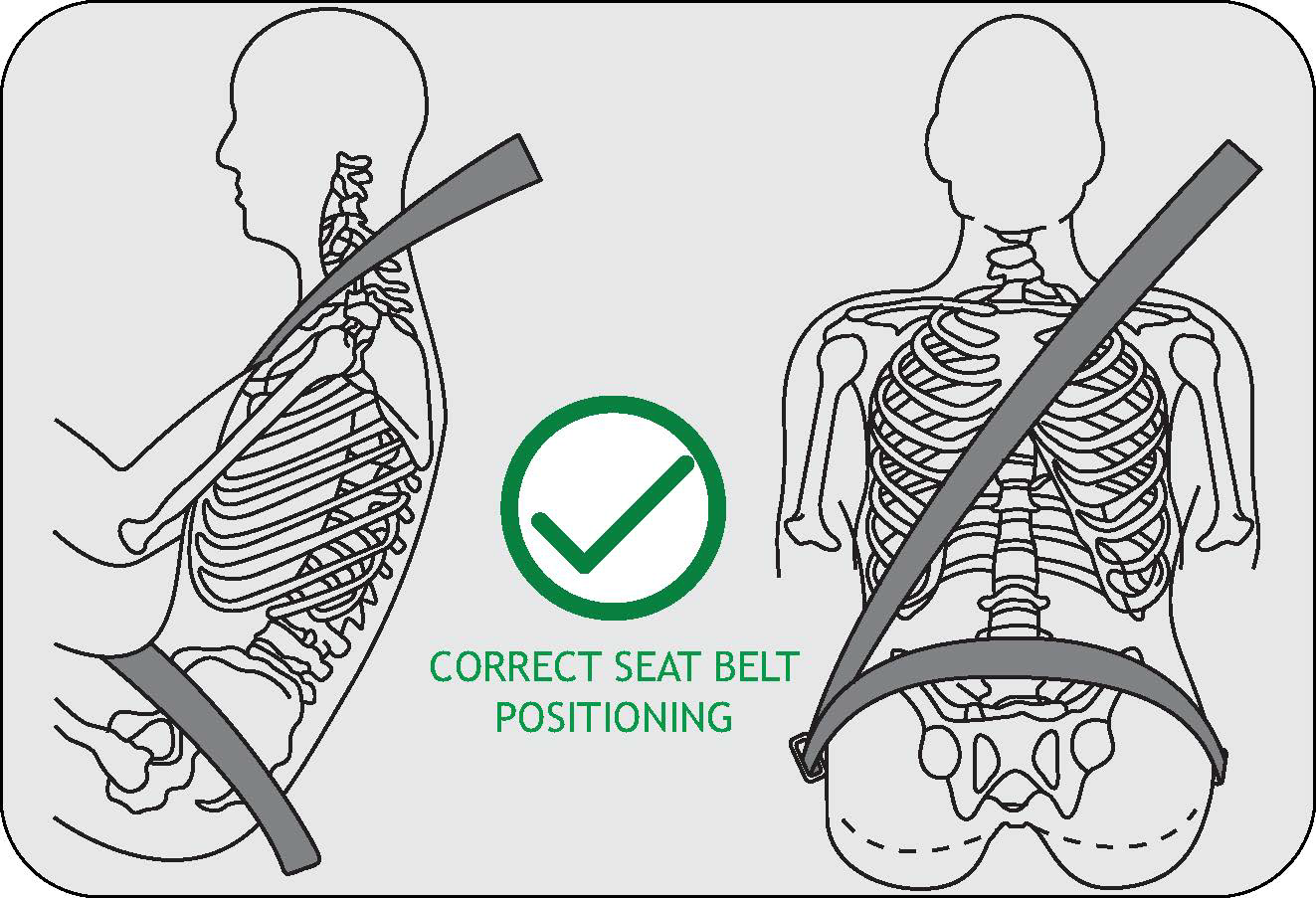
- The seat belts provided for your vehicle are designed for people of adult size, must be properly used and maintained.
- For usage of adult seat belt to secure children refer to section on manual for child seat positions and use of child restraint systems
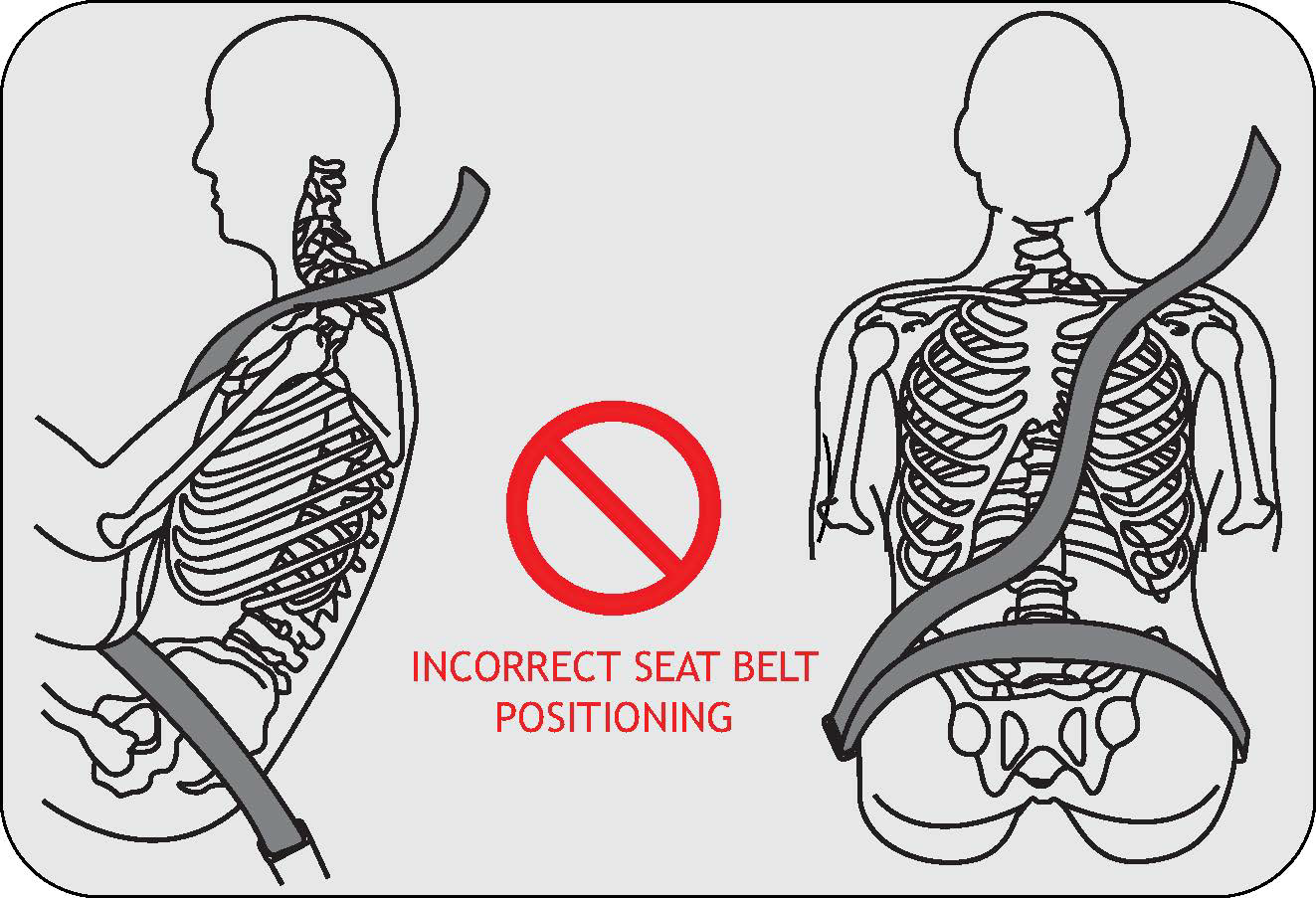
- Passengers should not move out of or change seats while the vehicle is moving. A passenger who is not wearing a seat belt can be thrown against the inside of the vehicle, against other occupants, or out of the vehicle during a crash or emergency stop
- Do not use any accessories on seat belts or modify in any way the seat belt system. Devices claiming to improve occupant comfort or reposition the seat belt can reduce the protection provided by the seat belt and increase the chance of serious injury in a crash
- An accident or emergency stop, can damage your seat belt system, even if the accident is “minor”. Please have your Authorized Mahindra Dealer inspect the seat belt system after an accident
- Please be aware that any unsecured item in your vehicle, such as your pet, unsecured child restraint system, or a laptop, can become a projectile in the event of an accident or sudden stop, causing injuries to occupants in the vehicle
Never use a damaged seat belt system. A damaged seat belt will not provide protection in an accident, resulting in serious injury.
- Seat belt systems can be prone to abuse. They are not indestructible. They must be handled with care to avoid damage
- Keep the belts clean and dry. Belt retraction may become difficult if the belts and webbing are soiled. If they need cleaning, use a mild soap solution or lukewarm water. Never use bleach, dye, or abrasive cleaners. These chemicals will severely weaken the belts
- Retractors in a 3 point type seat belts retract the seat belts when not in use. The inertia lock and coil spring allow the belts to remain comfortable on users during normal driving. During accidents or abrupt stops, inertia locks restrict the forward movement of the wearer
Persons with serious medical conditions should also wear a seat belt. Consult your doctor for specific recommendations before travel.
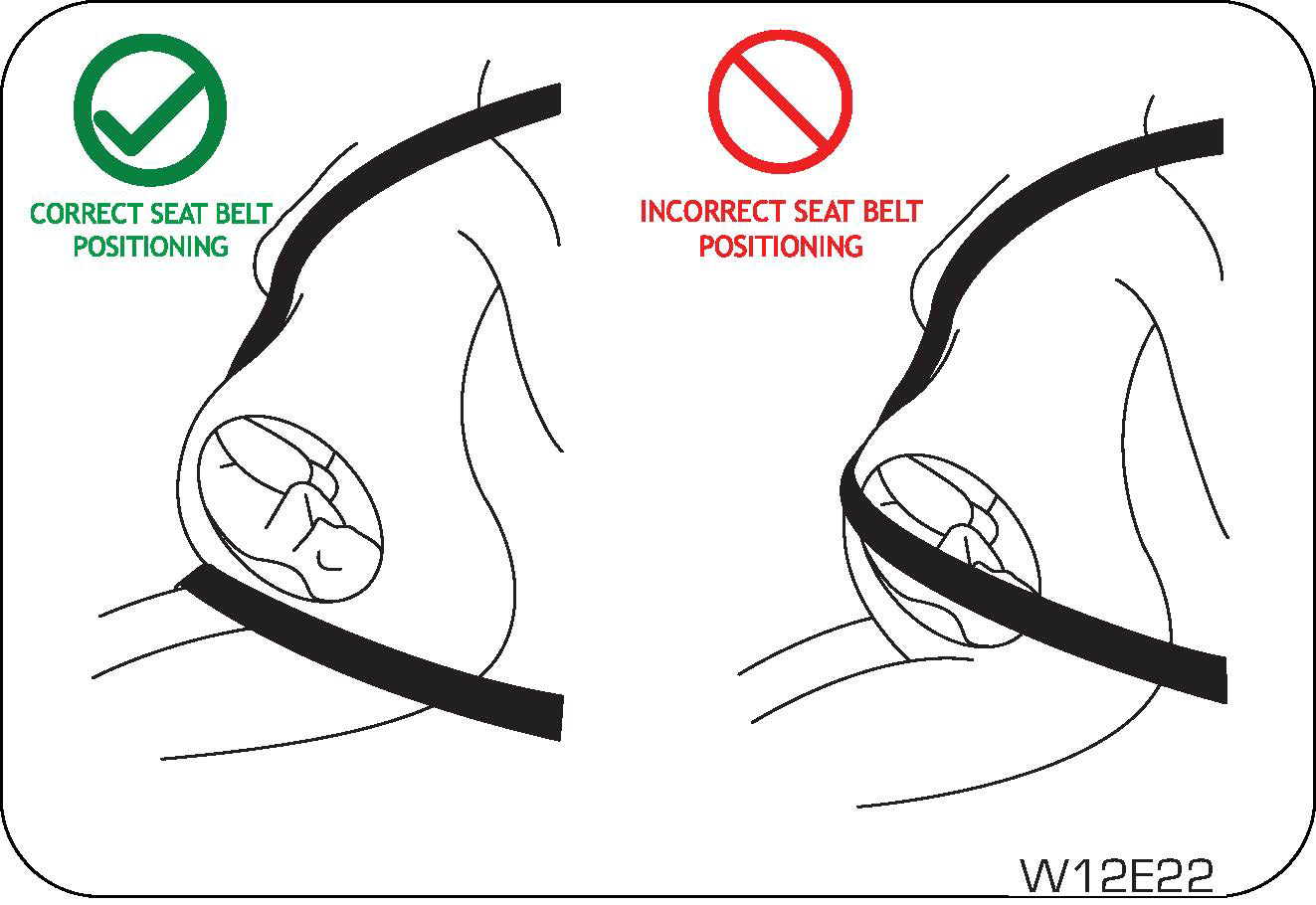
Pregnant women must also wear seat belts. Consult your doctor for specific recommendations.
The lap belt should be worn snugly and as low as possible over the hips. The shoulder belt should be worn across your shoulder, but never across the stomach area. When worn properly, the seat belt will protect both the mother and the foetus in an accident or emergency stop.
A pregnant woman should never wear the seat belt across the stomach area. This could lead to serious injuries to the foetus and/or the pregnant mother.
Never wear twisted seat belts. Excessive forces will be transferred from the belt to the wearer, in a collision, resulting in serious personal injury.
Each seat belt is meant for use by one person only. Using one seat belt for more than one person at a time is dangerous. The seat belt will not be able to spread the impact forces properly leading to serious injuries.
Never put a belt around a child being carried on the occupant's lap. This could lead to serious injuries.
- Reduce the possibility of being thrown from your vehicle
- Reduce the possibility of injuries to lower body and legs during an accident
- Hold the driver in a position which allows better control of the vehicle
Children who are too large for child restraint systems should always occupy the rear seat and use the vehicle seat belts. The lap portion should be fastened snug on the hips and as low as possible and the shoulder strap should be across the child's shoulder, not the neck or face. If you are unable to position the strap across the child's shoulder, the child should remain in a booster seat. Frequently check the seat belt to be sure it remains snug and in position. A squirming child could cause the seat belt to come out of position.
5.5 Fastening the Seat Belt
5.5.1 3-Point type (if equipped)
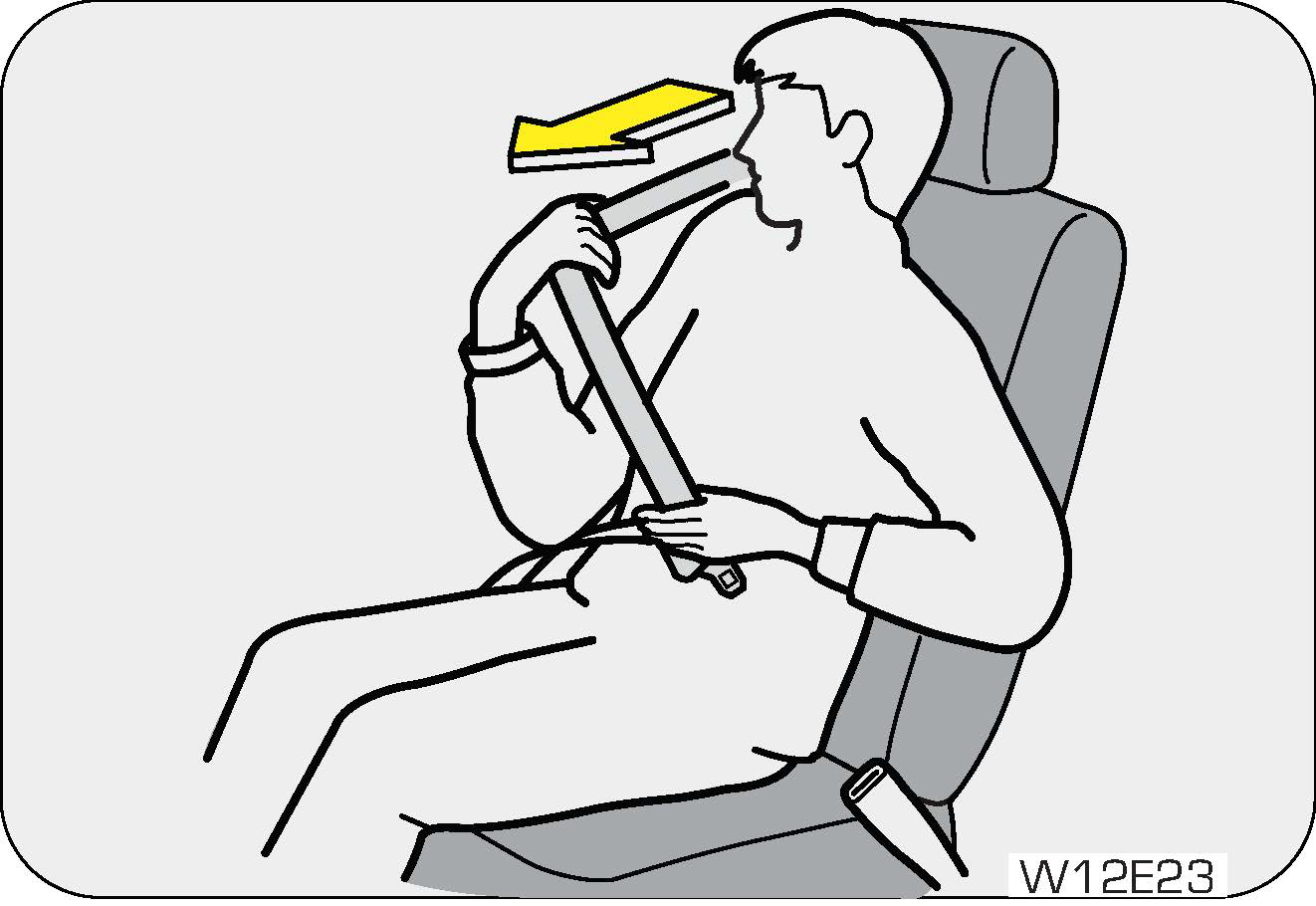
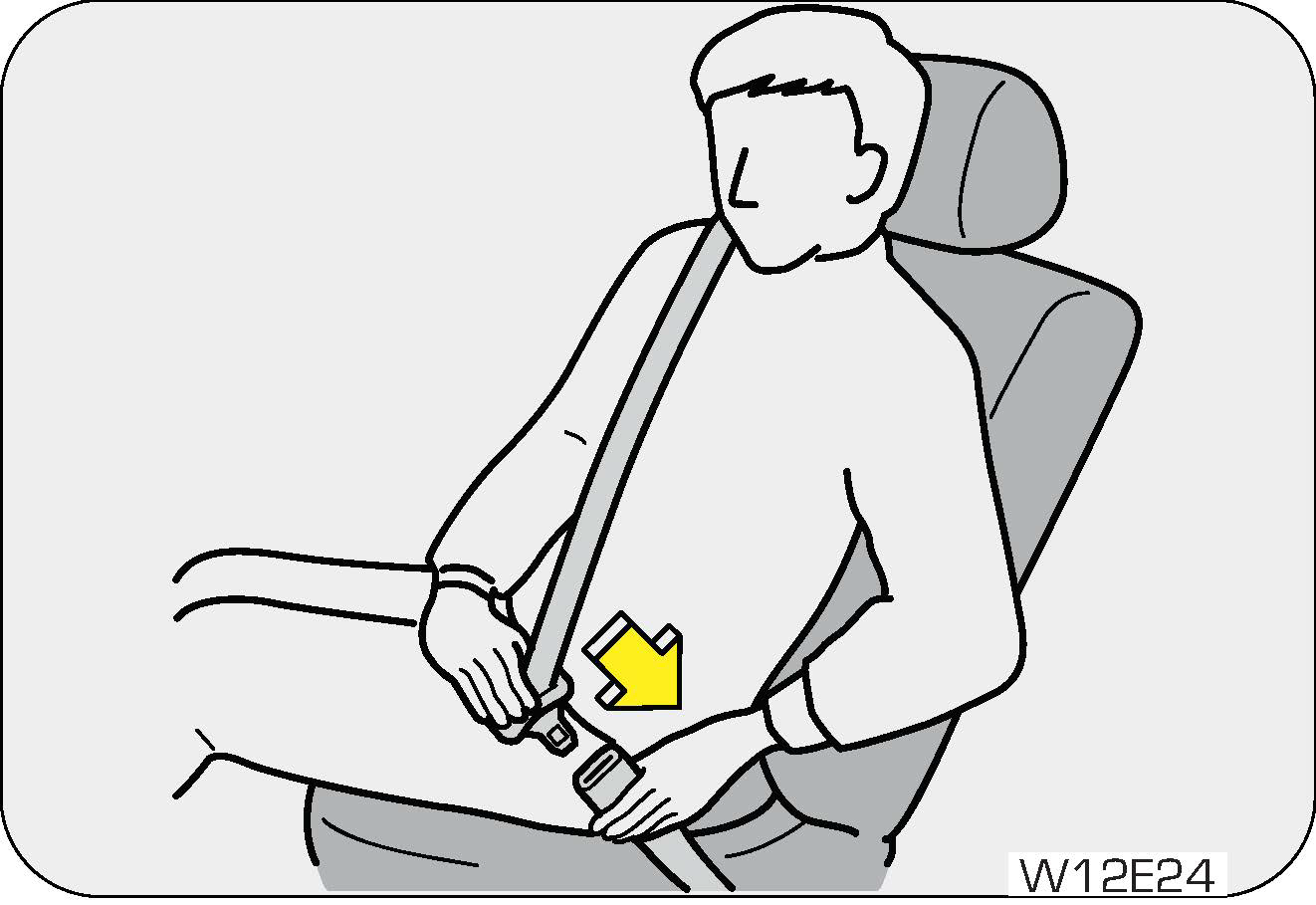
Adjust the seat as needed and sit up straight and well back in the seat. To fasten your seat belt, pull the webbing out of the retractor and insert the metal tab into the buckle. There will be an audible “click” when the tab locks into the buckle. Pull up on the shoulder strap to tighten the lap belt across your hips. The seat belt retractor will pull in any slack in the shoulder strap. A slow and easy motion will allow the belt to extend and let you move your body around freely.
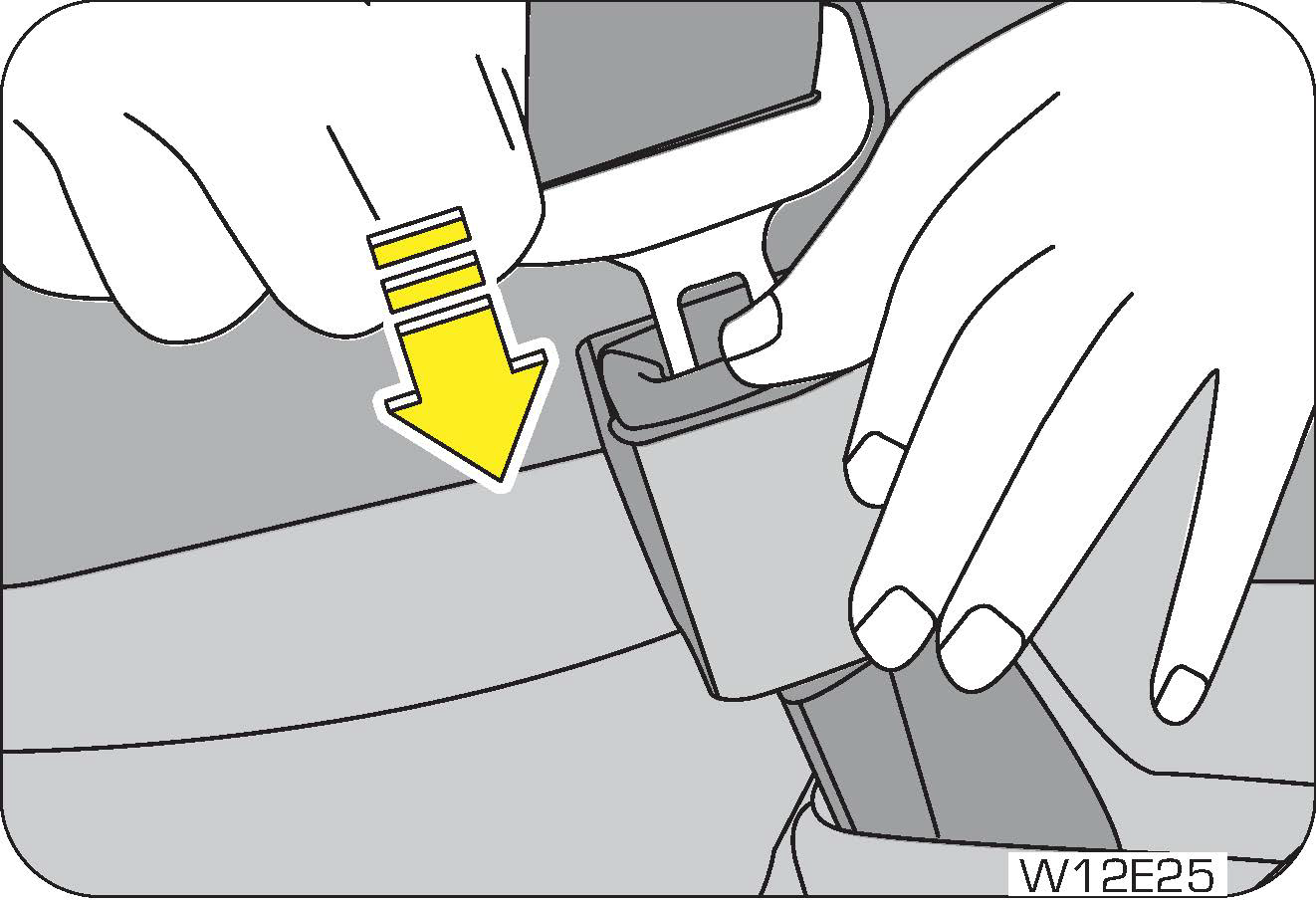
Periodically check the seat belt as you ride to be sure it remains snug and in position. If there is a sudden stop or impact, the belt will lock into position. It will also lock (restrict) if you try to lean forward too quickly.
If the driver’s seat belt is not fastened when the ignition is switched ON, the seat belt warning lamp illuminates. Refer to ‘Warning Lamps’ in the ‘Features and Control’ chapter for further details.
5.5.2 2-Point Lap type (if equipped)
This seat belt is applicable in some seating positions in some variants as applicable. Insert the metal tab into the buckle until it snaps. Position the lap belt on the hips as low as possible.
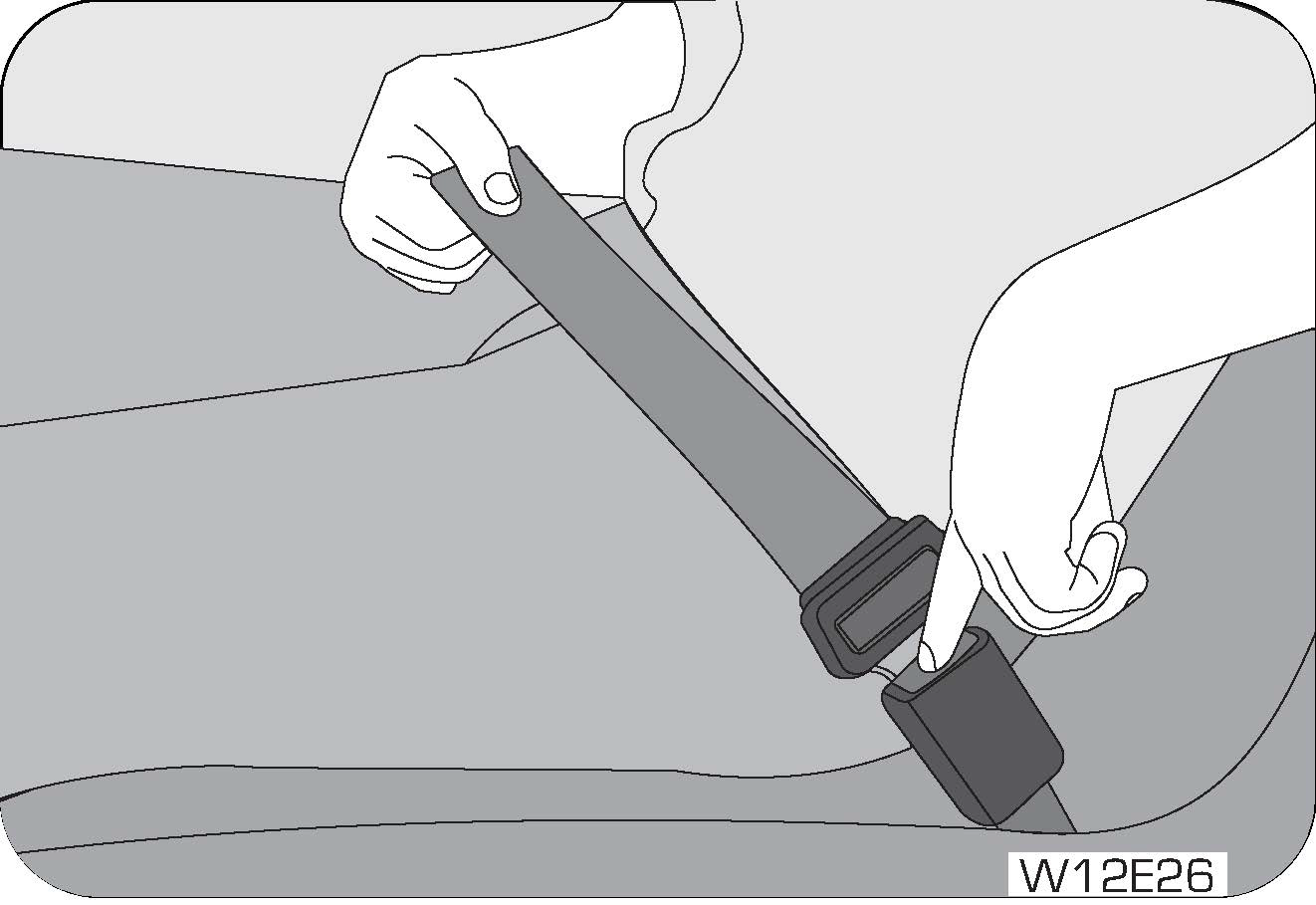
5.5.3 Unfastening the Seat Belt (both 3-Point & 2-Point)
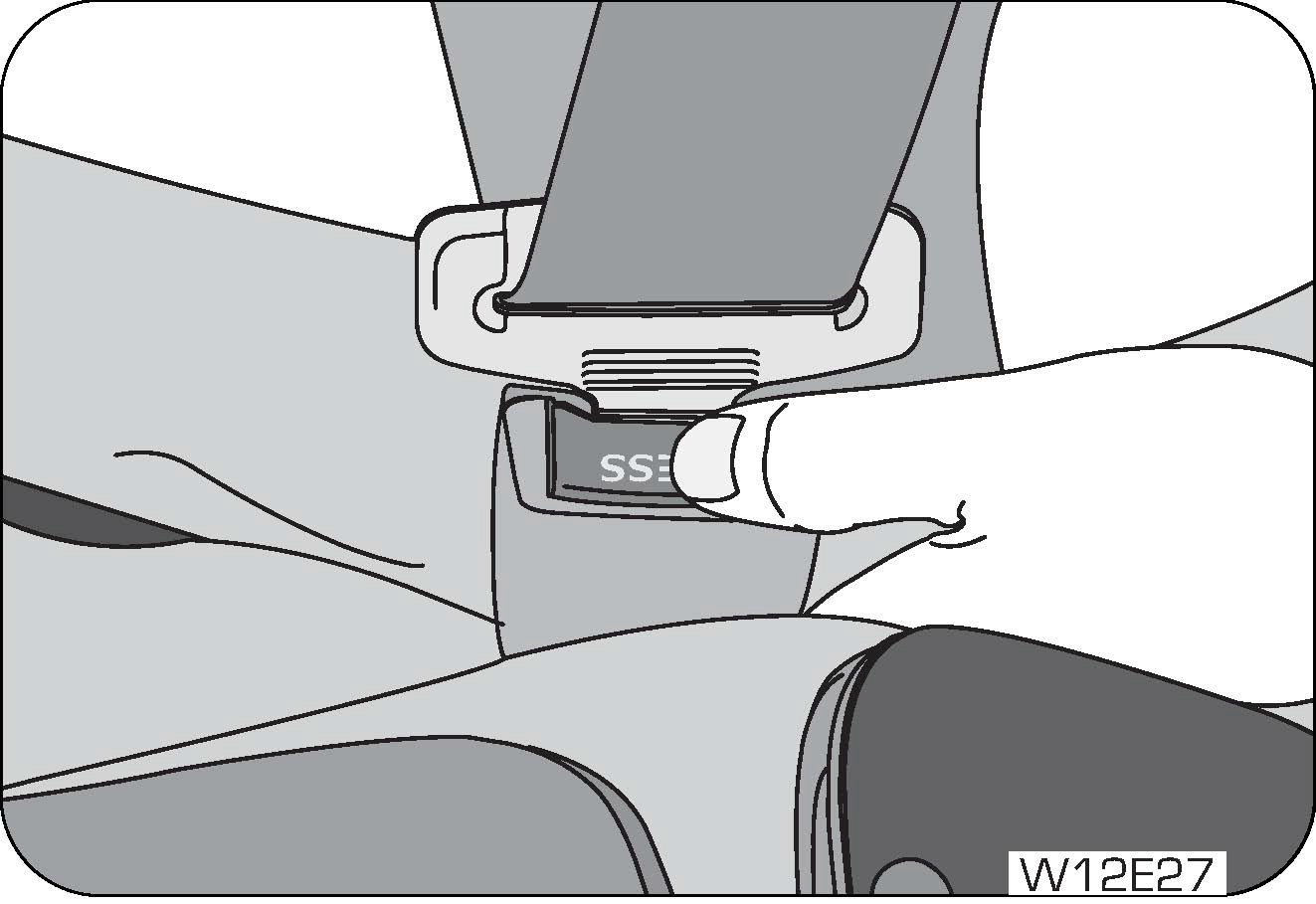
To release the belt, press the buckle release button and allow the belt to retract. If the belt does not retract smoothly, pull it out and check for kinks or twists. Then make sure it remains untwisted as it retracts.
Never insert coins, clips, etc. in the buckle as it may prevent you from properly latching the tab and may cause damage to the buckle mechanism, thereby making the seat belt ineffective in an accident, resulting in serious personal injury.
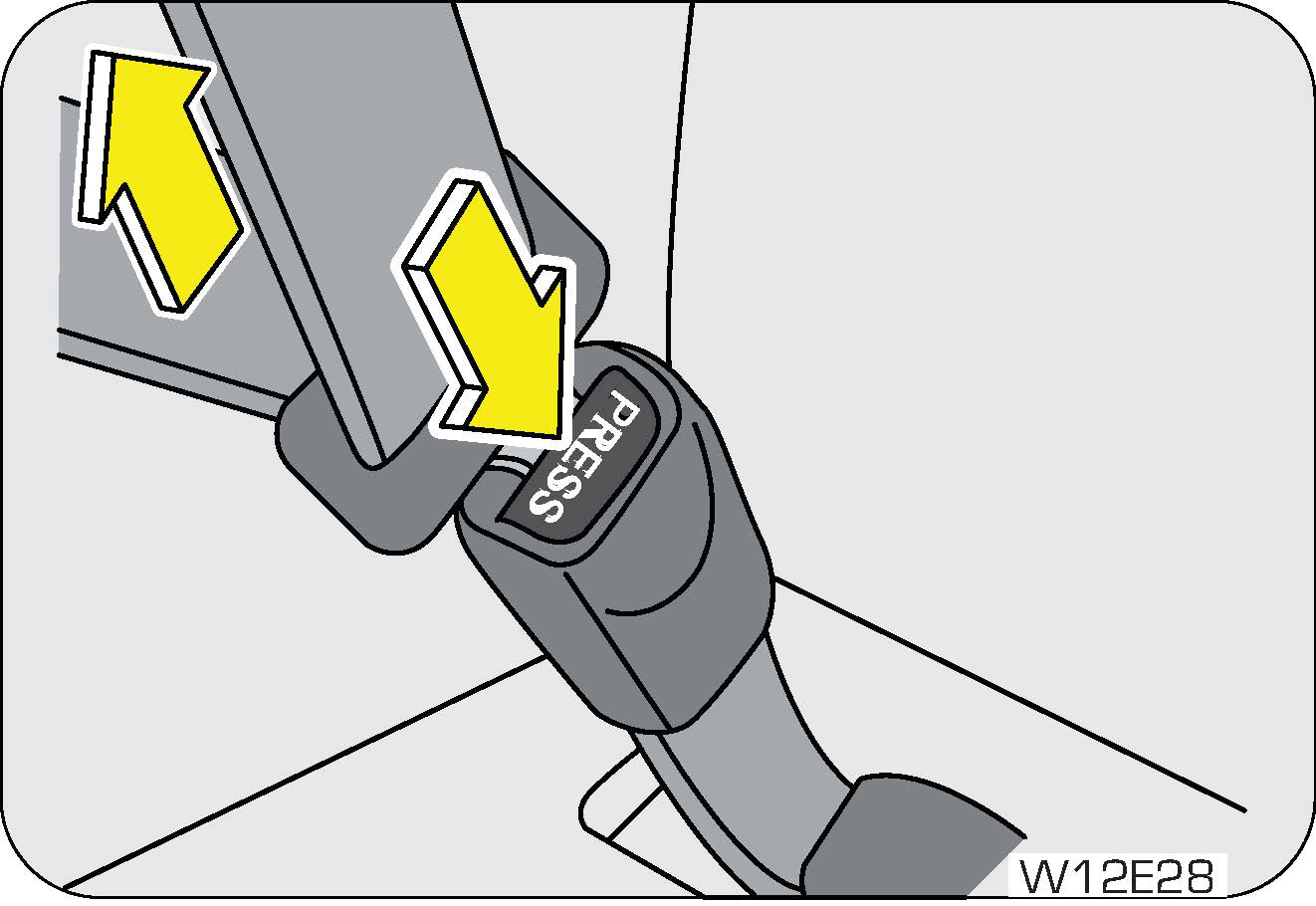
5.6 Child Restraint System (CRS) Using Seat Belts
Always secure a child in a proper Child Restraints System in accordance with age and size of the child as recommended by the child restraint system manufacturer. Be sure to follow the Child Restraint System (Child seat) manufacturer’s instructions for seat belt routing.
Do not allow children to stand up or kneel on either the rear or the front seats. An unrestrained child could suffer serious injuries during emergency braking or collision.
Driver + 5 Seater (If equipped)
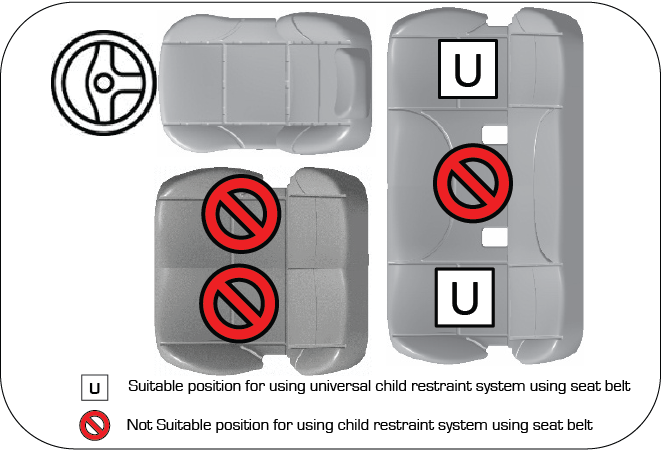
Driver + 4 Seater (If equipped)
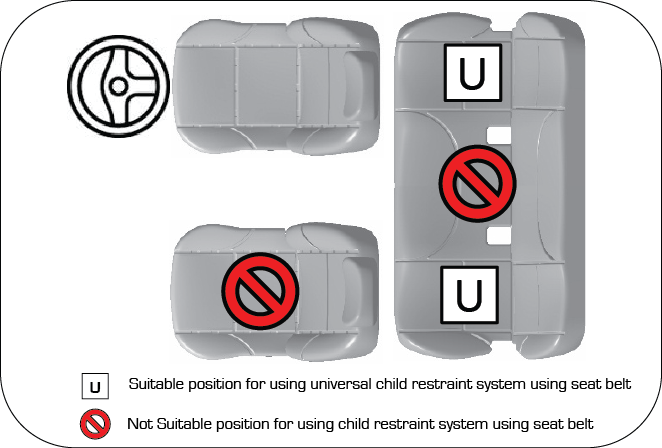
Legend:
U — Suitable position for using universal child restraint system using seat belt and buckles marked with ‘ C R S ’.
Ø — Not Suitable position for using child restraint system using seat belt.
| Mass Group | Weight of Child (kg) | Fitting the child restraints system using seat belt |
| Group 0 | 0-10 | Rear-facing child restraints system on the outboard rear seats using seat belt. |
| Group 0+ | up to 13 | Rear-facing child restraints system on the outboard rear seats using seat belt. |
| Group 1 | 9-18 | Forward facing child restraints system on the outboard rear seat using seat belt. |
| Group 2 | 15-25 | Forward facing child restraints system on the outboard rear seat using seat belt. |
| Group 3 | 22-36 | Forward facing child restraints system on the outboard rear seat using seat belt. |
6 LOCKS AND KEYS
6.1 Locks and Keys
Your vehicle comes with Conventional key;
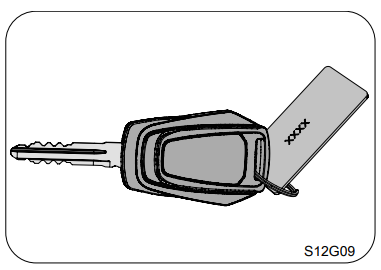
Your key number is shown on the plastic tag attached to the key. It is recommended that you record the key number and store in a safe place. The keys operate all locks in your vehicle including those of the doors and ignition with steering lock. We advise you to keep one of these keys in a safe place for emergency use, but not in the vehicle. Should you lose your keys or if you need replacement keys, they can be ordered through an Authorized Mahindra Dealer.
There is a limitation (max 2 keys at a time) to the number of keys that can be programmed. The minimum time frame required to supply the duplicate keys is 20 days after all the formalities are completed. Please contact the dealer to understand the formalities involved.
Never leave the key in the ignition switch with children in the vehicle. A child could switch on the ignition, start the engine, operate power windows and other controls, or move the vehicle, resulting in personal injuries to bystanders and/or children seated inside.
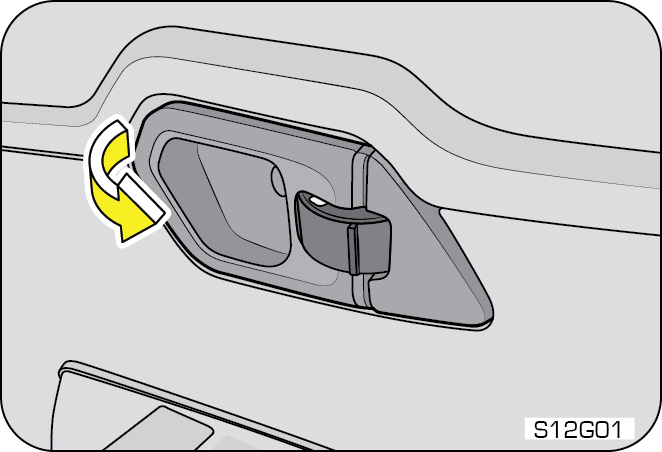
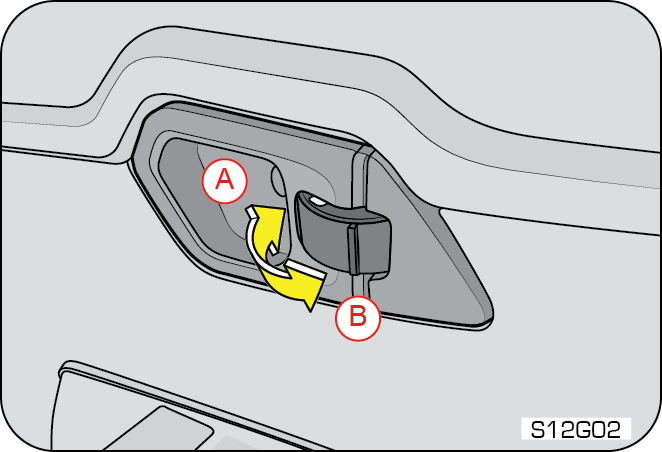
| A | Lock | B | Unlock |
Locking the driver door from inside activates the central locking system (if equipped), thereby locking ALL the doors of the vehicle. Refer to the ‘Central Locking’ section for further details.
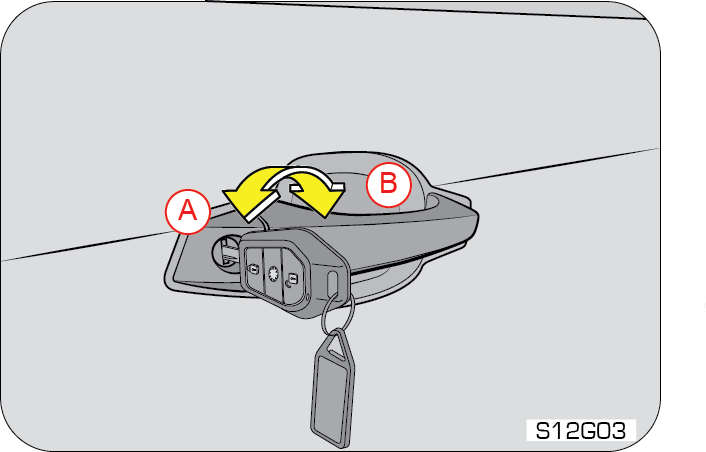
| A | Unlock | B | Lock |
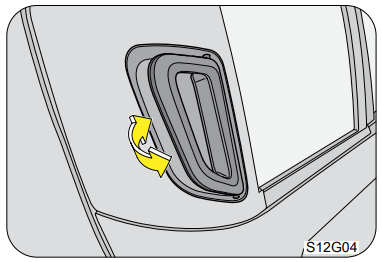
The key is bi-directional; you can insert it into the key hole in both directions. Locking the driver door from outside activates the central locking system (if equipped), thereby locking ALL the doors of the vehicle. Refer to the ‘Central Locking’ section for further details.
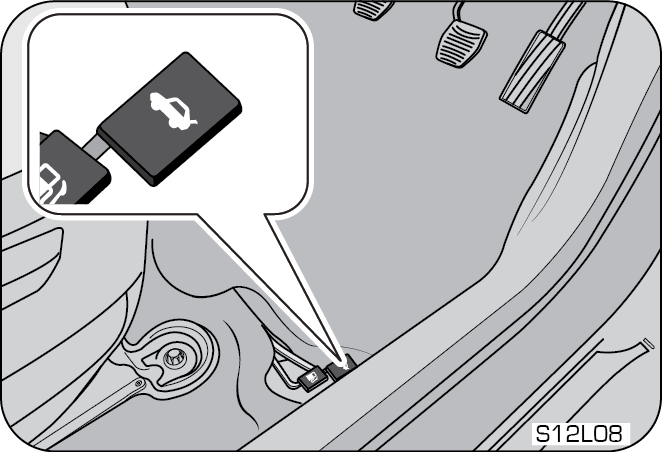
The Tail door can be opened by the lever located at the foot of the driver seat. Lift the lever up firmly to open.
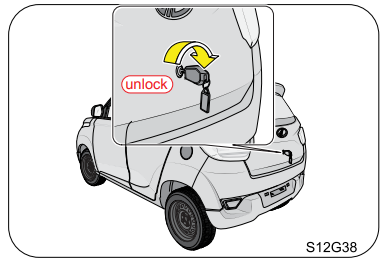
Also Tail door can be opened with key. Turn the key clockwise to unlock.
Push the tail door gently to lock
6.1.1 Child Safety Rear Door Lock
Your vehicle is equipped with child safety locks on the rear door. When the child safety lock mechanism is enabled ON , the rear door(s) cannot be opened from the inside. The door(s) can only be opened from the outside.
Move the tab up/down in the slot provided in the side face of rear door to disable/enable the child safety rear door lock.
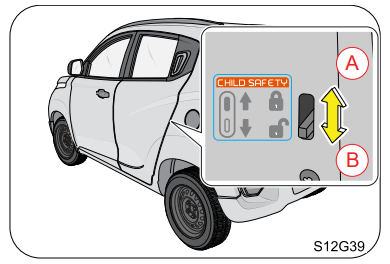
| A | Lock | B | Unlock |
If the rear doors are not operable from inside, ensure that the child safety locks have been disabled.
Mahindra strongly recommends that the child safety rear door locks be used whenever there are children traveling in the rear seat.
6.2 Engine Immobilizer System
The Engine Immobilizer System is a security system that prevents the vehicle being operated by an unauthorized person. The Engine immobilizer prevents the engine from being started unless it recognizes signals from the correct coded key.
The system is automatically activated when the key is removed from the ignition.
In order to safeguard the theft protection system of the vehicle, Mahindra will not supply EMS ECU (Engine Management System - Electronic Control Unit), vehicle keys and the ICU as a set for any vehicle.
6.2.1 Features of the Immobilizer System
- Prevents the vehicle being started by anyone not in possession of the correct vehicle key
- The vehicle is automatically protected after the key is removed from the ignition. At every ignition ON, if the vehicle does not recognize the correct key code, the engine check lamp will illuminate/blink and the engine cannot be started
- The vehicle will not be protected until the key has been taken out of the ignition
If the engine check lamp flashes or remains continuously illuminated after the ignition being switched ON, there is a system malfunction. Contact an Authorized Mahindra Dealer immediately
Inserting the correct coded key in the ignition and switching the ignition ON, automatically deactivates the system. This enables the engine to start.
In the event of the vehicle not starting with the correct key, switch off the ignition and remove for a minimum of 1 minute before attempting to start the vehicle again
Do not modify, remove or disassemble the engine immobilizer system. Any unauthorized changes or modifications can affect proper operation of the system and will void your warranty.
Do not attempt to install after market ‘push-button’ start systems. These systems may compromise your vehicle’s security system.
7 FEATURES AND CONTROL
7.1 Manual Windows
Manual winding windows can be lowered or raised by rotating the glass winder.
Rotate clockwise to close/raise and anti-clockwise to open/ lower the window glasses.
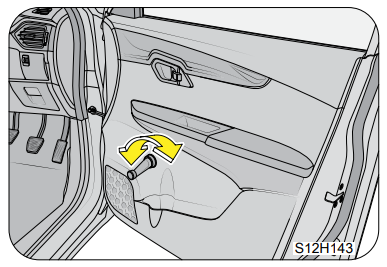
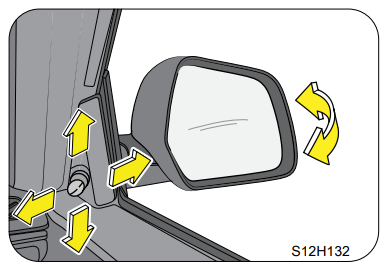
7.2 Outside Rear View Mirror (ORVM)
Integrated exterior rear view mirrors on both the sides facilitate maximum rear view information to the driver.
Both the ORVMs are hinged and can be manually folded or unfolded. This avoids hindrances in narrow areas and parking slots. Make sure that you fully engage the mirror in its support, while folding or unfolding.
Objects seen in convex mirrors are much closer than they appear. Do not overestimate the distance of the objects that you see in the mirrors
7.2.1 Manual (Joystick) ORVM Adjustment
Manual ORVM’s can be adjusted by the joystick provided on the ORVM trim. Adjust the joy stick as required to bring the rear traffic vision as desired.
7.3 Interior Mirror (IRVM)
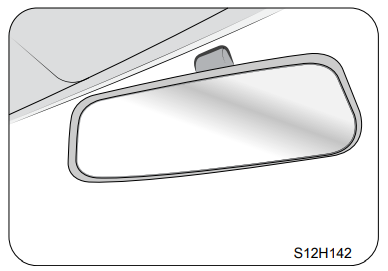
Interior mirror provides rear view information to the driver..
7.4 Exterior Lamps
The lighting control stalk is located on the right hand side of the steering wheel. It controls operations of parking lamps, head lamps, head lamp beam selection, high beam flashing, fog lamps (if equipped) and turn signals when the ignition switch is ON.
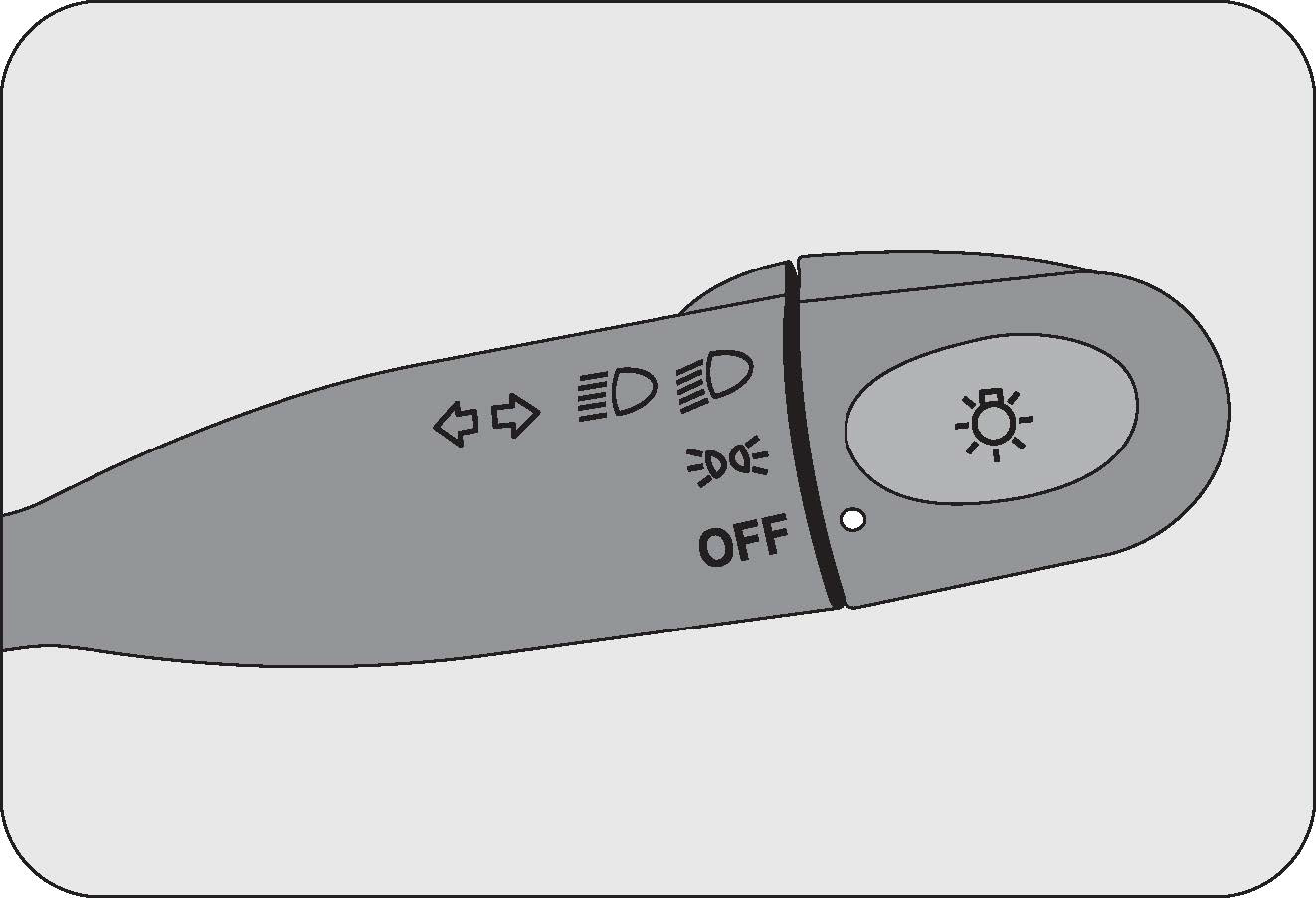
7.4.1 Turn Signals
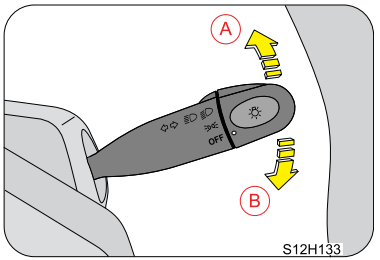
| A | Turn Signal - Left | B | Turn Signal - Right |
You can signal a lane change by moving the lighting control stalk clockwise or anti-clockwise to the limit point of free movement of the lever and releasing it once you change the lane.
After you have completed your turn, the stalk will automatically return to the neutral position.
If the turn signal lamps on the instrument panel flash faster than normal, there may be a possibility that one or more of the turn signal lamp bulbs have blown. Check & replace the blown bulb immediately.
7.4.2 Lamps OFF
Rotate the outer rotary switch on the lighting control stalk aligning the ‘dot’ on the switch to ‘OFF’ on the stalk to switch OFF all lamps.
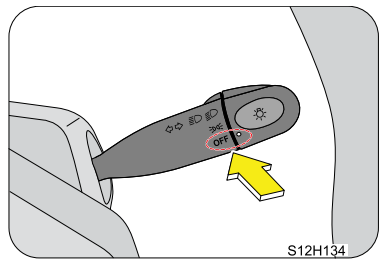
7.4.3 Parking Lamps ON
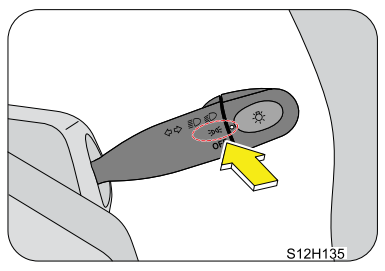
Rotate the outer rotary switch on the lighting control stalk aligning the ‘dot’ on the switch to the ‘1st détente’ position on the stalk to switch ON the parking lamps.
The tail lamp, license plate lamp, front park lamp and instrument panel illumination lamps are activated when the parking lamp is switched ON.
7.4.4 Head Lamp ON
Rotate the outer rotary switch on the lighting control stalk aligning the ‘dot’ on the switch to the ‘2nd détente’ position on the stalk to switch ON the head lamps.
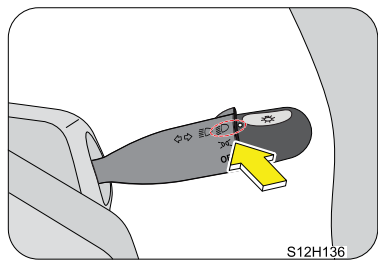
7.4.5 Head Lamp High Beam/Low Beam
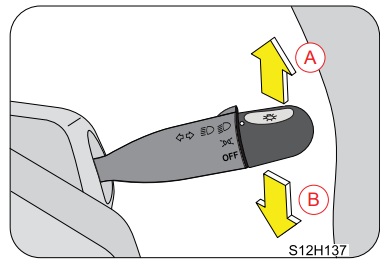
| A | Low Beam | B | High Beam |
With the head lamp low beam ON, push the lighting control stalk down (away) from steering wheel to switch ON the head lamp high beam. The head lamp high beam telltale lamp in the instrument cluster illuminates indicating high beam option selected. For low beam, pull the stalk back up.
Your vehicle head lamps are vented and moisture may be collected on the inside of the head lamp lens under certain climatic and geographical conditions. This moisture will evaporate once the head lamps have been switched ON for a few minutes.
7.4.6 Head Lamp Flash
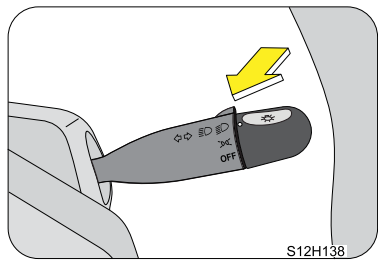
Pull the lighting control stalk (from the head lamp low beam position) towards the steering wheel to instantaneously flash the head lamp high beam. The head lamp flash works even when the head lamp is OFF.
7.4.7 Head Lamp Leveling System
When the vehicle is either fully or partially loaded, it will have an upward inclination disturbing the head lamp aiming. A correct head lamp setting provides good visibility to the driver with minimum inconvenience to other road users.
To properly aim the head lamp beam as per the loading on the vehicle, use the head lamp leveling switch. This switch is located on the right side of the steering column shroud in the instrument panel. This switch has four positions marked as 0, 1, 2, & 3.
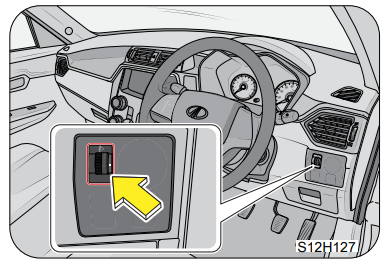
| Switch Position | Vehicle Loading Condition |
| 0 | Driver only or Driver with front passenger |
| 1 | Driver + Front passenger + Rear seat occupied |
| 2 | All seats occupied |
| 3 | All seats occupied with luggage OR Driver with luggage at extreme rear side. |
Select the suitable switch position depending on the pay load as advised in the table.
The headlights can only be adjusted when the low beam is switched ON.
7.4.8 Hazard Warning Lamp
The hazard warning lamp switch is located in between the AC center grills on the instrument panel. Use the hazard warning lamp when your vehicle is stationary or to warn other road users to be cautious while passing your vehicle.
To turn the hazard warning lamp ON, press the switch in. All the turn signal lamps flash. To turn OFF, press the switch again.
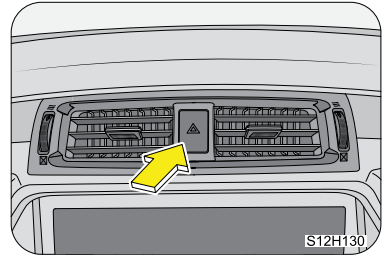
The turn lamps do not work when the hazard warning lamps are operational.
7.5 Interior Lamps
Interior lamps comprise of Roof lamp
7.5.1 Roof Lamp
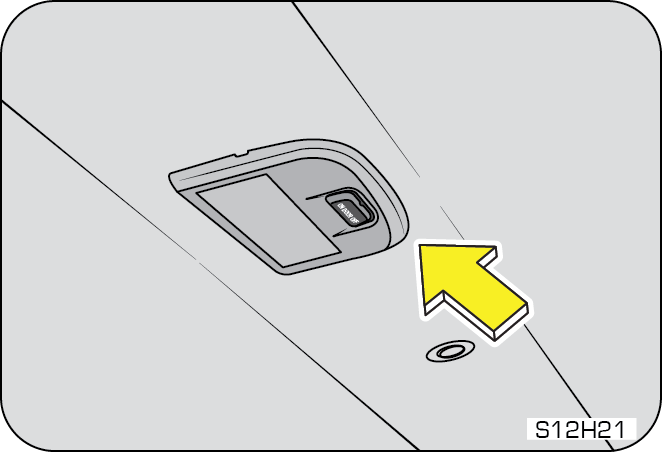
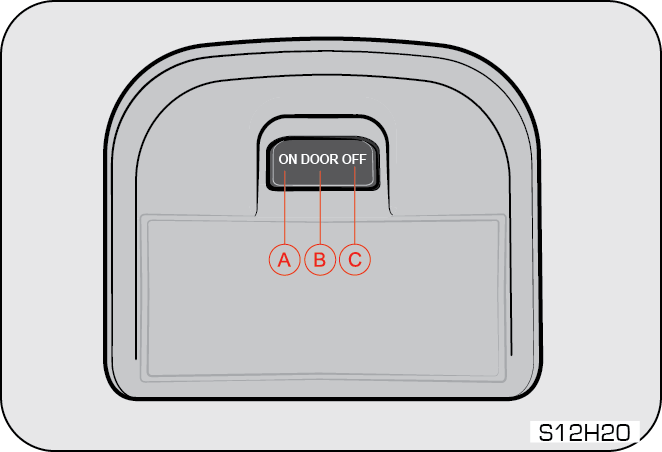
| A | Permanent ON |
| B | Door/Auto Mode |
| C | Permanent OFF |
The Roof lamp is located in the roof above the front seats. The lamp can be switched on using the switch on the lamp.
Do not leave the Roof lamp in permanent ON mode. This will drain your vehicle battery.
Roof lamp — Auto Mode Operation
The Roof lamp switch has three operation modes to choose from;
A. The Roof lamp remains permanently ON in this position irrespective of the door open status
B. The Roof lamp remains in AUTO mode in this position.
C. The Roof lamp remains permanently OFF in this position
The operation of the Roof lamp in Auto mode is as follows;
- Roof lamp switches ON when any of the doors is/are open
- Roof lamps go OFF immediately with ignition ON and all doors closed properly
7.6 Power Outlet
A 12V power supply sockets provided on the Instrument panel for power take OFF. Electrical equipment/appliances like mobile phone charger, cigarette lighter, etc. can be used in the outlets. The power outlet is rated 12V/10A when the engine is ON.
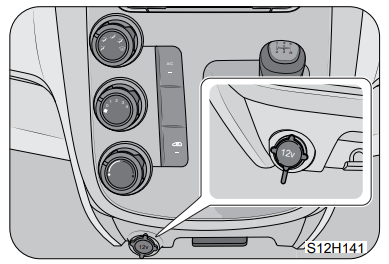
Do not modify, disassemble or repair the power outlet in any way. Doing so may result in unexpected malfunction or fire, which could cause serious damage to equipment and/or personal injuries. Contact an Authorized Mahindra Dealer for any necessary repairs.
To prevent injuries and accidents, secure all electrical appliances before use. Do not use any appliance that may:
- Distract the driver while driving, or hamper safe driving
- Result in a fire or burn injuries due to the appliance rolling, falling or overheating
- Emit steam, while the windows of the passenger compartment are closed
- Never use the power outlet for electric heaters while sleeping
- Never insert foreign objects into the power outlet
- Never use malfunctioning electrical appliances
- Never insert inappropriate or badly fitting plugs into the power outlet
Accessories that draw higher power (i. e., coolers, vacuum cleaners, etc.) will drain the battery quickly and may damage the power outlet.
- Use the power outlets only when the engine is running. Remove the plug from the power outlet after using the electric device. Using the power outlets when the engine is OFF or leaving the electric device plugged in for many hours may cause the battery to drain
- Do not use the power outlet to connect electric accessories or equipment that are not designed to operate on 12V
- Some electronic devices can cause electronic interference when plugged into the power outlet. These devices may cause excessive audio noise and may interfere with other electronic systems or devices in your vehicle
7.7 Windshield Wipers
7.7.1 Wiper Control Stalk
The wipe/wash function can be activated only when the ignition is in “IGN” position.
| A | Flick Wipe (MIST) | ||
| B | Off | ||
| C | Intermittent (INT) | ||
| D | Low Speed (LO) | ||
| E | High Speed (HI) | ||
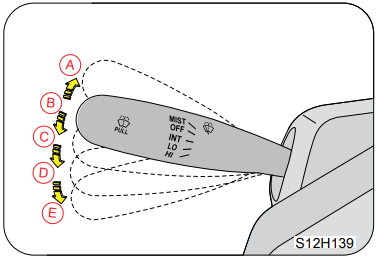
7.7.2 Wiper Off
The wipe function is OFF when the wipe control stalk is in neutral position (B).
7.7.3 Flick-Wipe (Mist)
Push the wipe control stalk to position A for a flick-wipe, hold to operate the wipe continuously (simultaneously lift the wiper stalk towards the steering wheel to operate the wash). The stalk automatically comes back to position B when released.
7.7.4 Intermittent (INT) Mode
Intermittent (INT) wiping is selected when the wipe control stalk is pushed down to position C. In the INT mode, the wiper operates on preset intervals.
The delay between each wipe can be programmed from 1 to 60 sec according to the rain by the user.
Programming of the INT delay time is as follows;
- Turn the wiper stalk to position C, wiper will start wiping
- Turn the wiper stalk to OFF position, before wiper starts second wipe
- Turn the wiper stalk to position C again after the required delay and the same delay will be programmed
- On keeping wiper ON position C, the wiper will wipe again with the programmed delay
7.7.5 Low Speed Wiping
Push the wipe control stalk up to the position D to operate the wiper at a fixed low speed.
7.7.6 High Speed Wiping
Push the wiper control stalk up to position E to operate the wiper at a fixed high speed.
7.7.7 Wipe/Wash
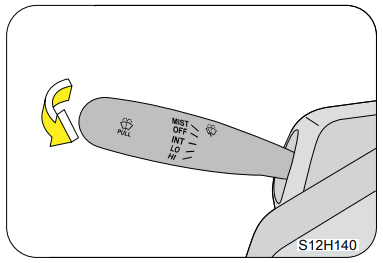
Pull/Lift the wiper control stalk towards the steering wheel from any position to activate the front wipe/wash function. Washer fluid is sprayed on the front windshield and the wipers wipe the windshield 3 times after the washer spray is stopped and wipe once after 4sec. Hold the stalk in position for continuous spray of washer fluid.
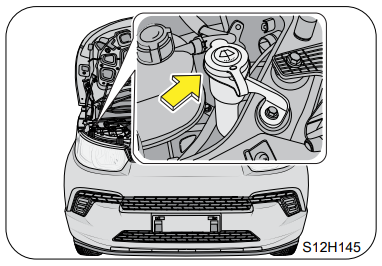
In the front, a single nozzle with twin adjustable washer jets is provided on the bonnet. Using a pin, the eye ball jets can be adjusted precisely for direction. Always direct the washer jet to hit the middle of the windshield. This will enable the wiper blade to wipe the complete width of the windshield.
The factory filled windshield washer fluid can operate without freezing till 0°C. If the vehicle is being operated below zero is sub freezing zone the fluid can freeze on the windshield and block your vision, resulting in an accident. If you operate your vehicle in temperatures below 0° C, use washer fluid with antifreeze protection.
- Do not operate the wipers when the windshield is dry. It may lead to scratches on the glass
- It is recommended not to use the wiper when the windshield glass is covered with debris, snow or leaves. Clean the glass before using the wiper to avoid damage to the wiper blades and glass
- Do not operate the windshield washer when the reservoir is empty
7.8 Utility Holders
7.8.1 Center Console (if equipped)
Center console is available in 5 seater variants between the front row seats. It has cup holders, and storage space for miscellaneous items like keys, pen, wallets etc.
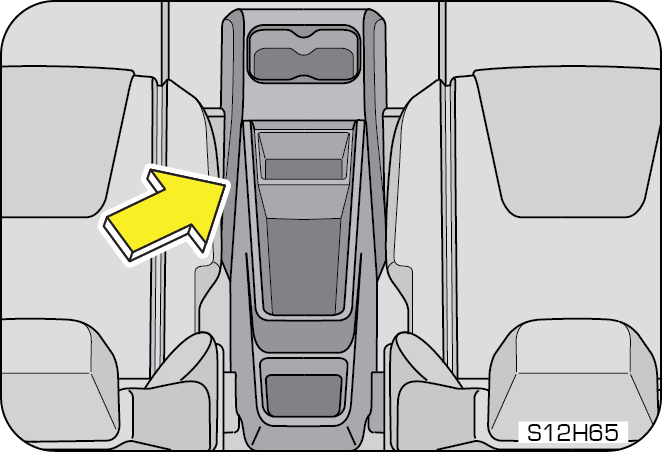
7.8.2 Can/Cup/Bottle Holders (if equipped)
There are cup/can/bottle holders in the front middle seat & rear middle seat backrest(when using as armrest)and in the front/rear door trims.
The cup-holders on seat armrests are equipped with a flexible liner to better grip the cup/can being placed in it. This part can be removed for ease of cleaning in case of accidental spillage.
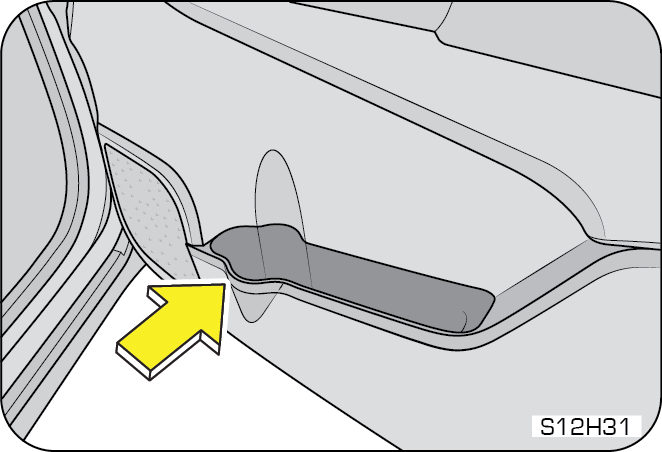
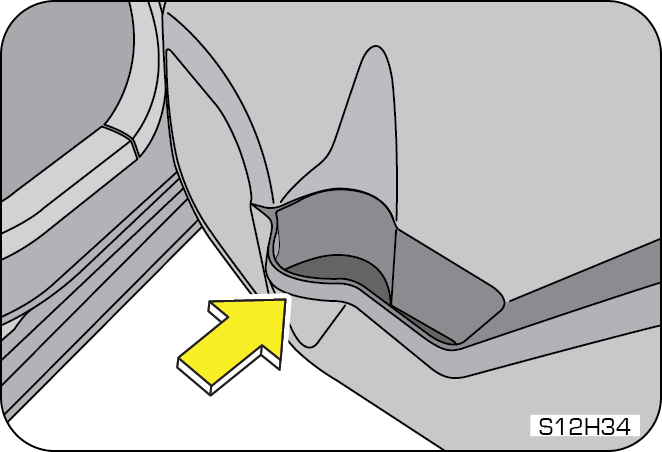
Only sealed or cups with lids are to be used in the cup holders.
Use caution when using the cup holders. A spilled beverage that is very hot can injure the driver or passengers. Spilled liquids can also damage interior trim and electrical components.
Any spilled beverage can also startle the driver and cause loss of control of the vehicle, resulting in an accident.
Never place objects other than cups or cans in the cup holder. These objects can be thrown out in the event of a sudden stop or an accident, possibly injuring the passengers in the vehicle.
7.8.3 Storage Bin (If equipped)
Storage bin is located below the co-driver seat. This bin can also be removed and taken out while going for shopping/super markets.
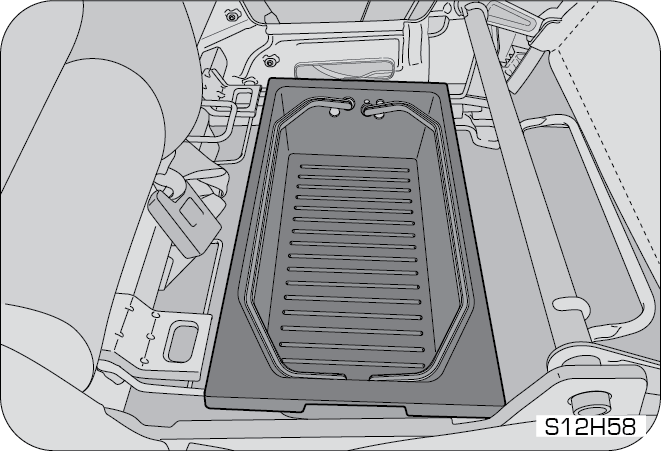
To open, pull the strap provided on the co-driver seat bottom.
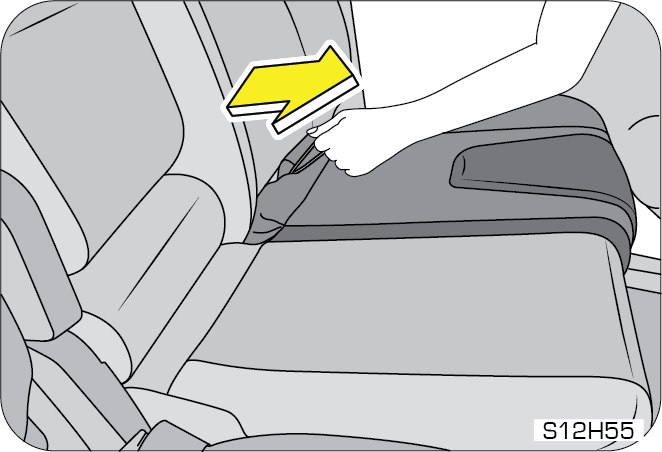
Lift the seat to access the storage bin
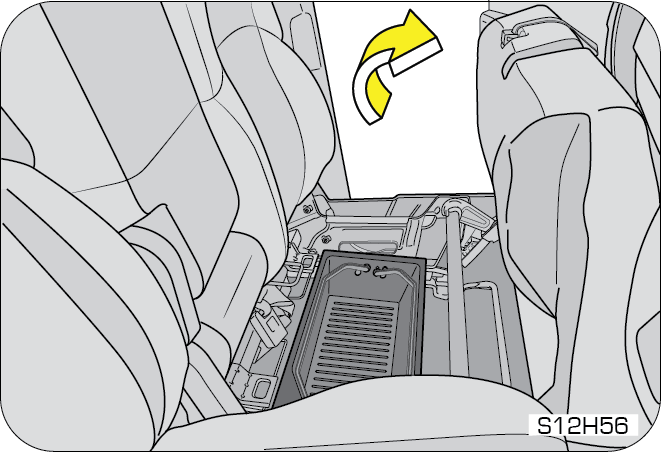
Storage bin can be taken out with the two handles provided.
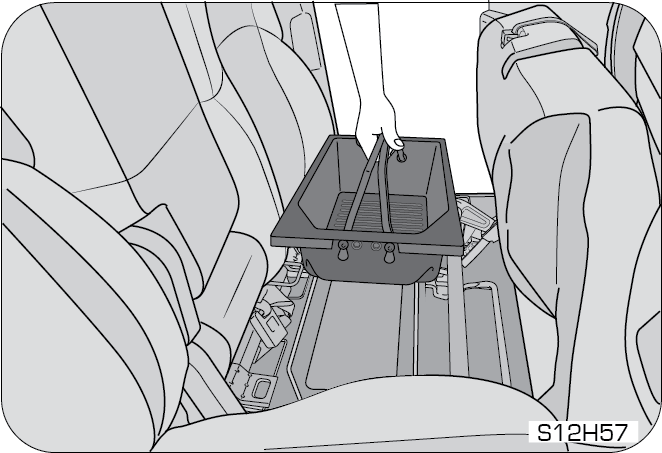
When keeping the storage bin back inside the seat, please make sure the bin handles are stowed down and then close the seat cushion.
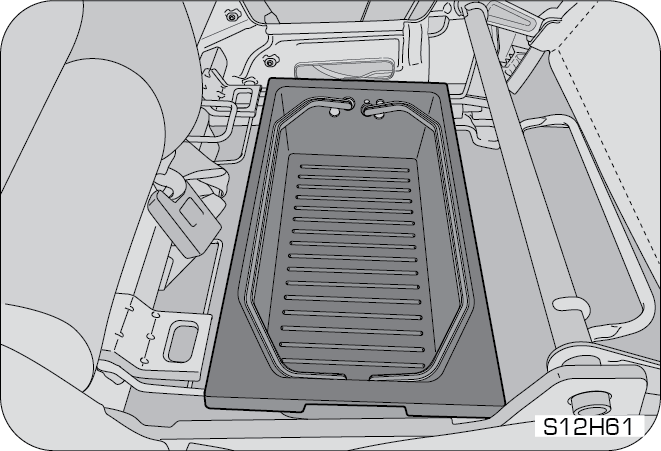
7.8.4 Footwell Utility
The Footwell utility space is provided at the second row floor area.
To open, pull the strap provided on the lid of the utility.
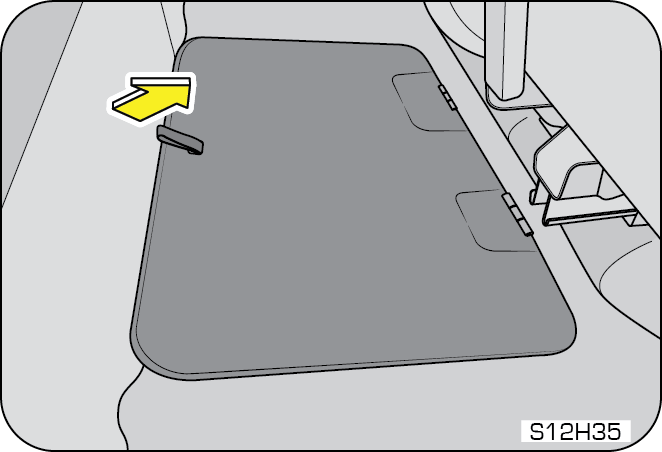
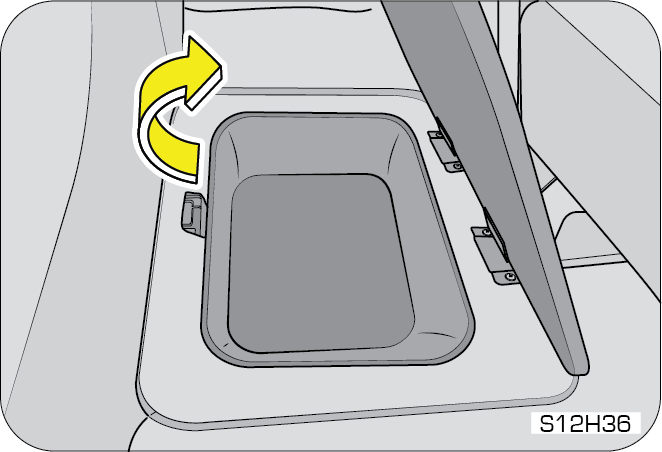
7.8.5 Glove Box
The instrument panel houses a glove box on the passenger side.
The owner's manual can be found inside the glove box. It is advisable to always keep it in the glove box for ease of reach. It is also recommended to keep copies of all vehicle documents in the glove box for reference when needed. There is also a pen holder and card holder inside the glove box for convenience.
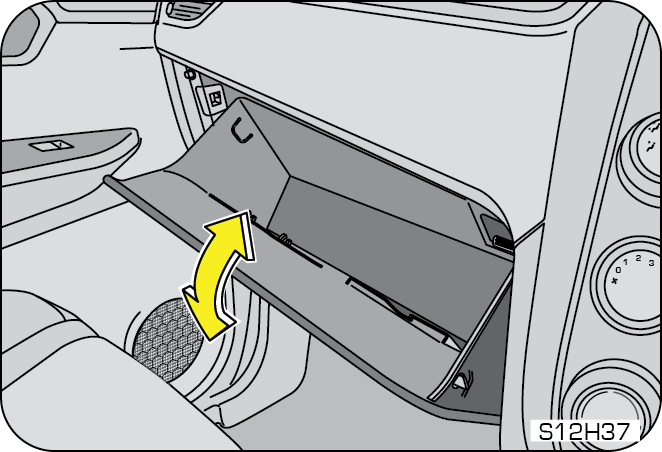
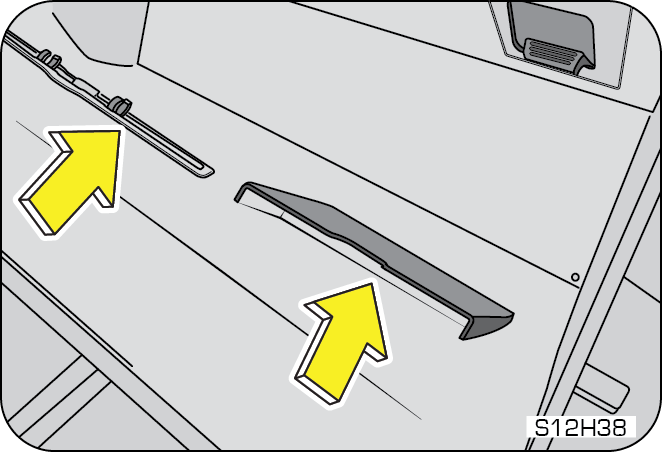
Do not overload the glove box.
Do not store loose or small metal objects inside the glove box. This will lead to rattling while the vehicle is driven on bad roads.
To avoid the possibility of injury in case of an accident or a sudden stop, the glove box lid should be kept closed when the vehicle is in motion.
7.8.6 Sun Visor
The sun visors can be used for either frontal or sideward shade, to reduce glare or to shut out direct rays of the sun. The sun visor can be swivelled to the side, as shown, to provide shade from the glare of the sun.
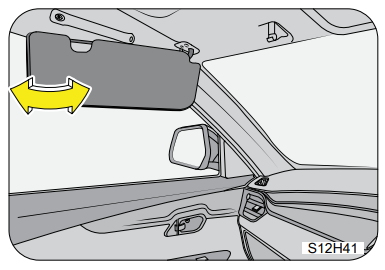
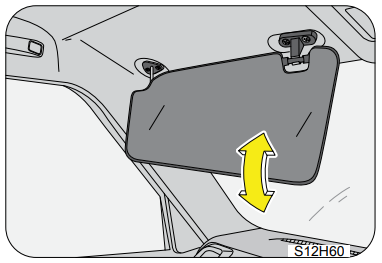
7.9 Horn
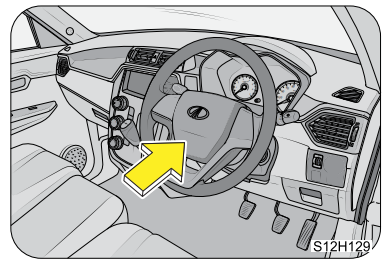
Press the pad on the steering wheel to sound the horn. The horn functions even when the ignition has been switched OFF.
7.10 FASTag (if equipped)
Your vehicle is fitted with a FASTag on front windshield. FASTag may be used for Electronic Toll Collection (ETC). Please connect with www.nhai.org site for updates and understanding.
Do not peel or remove the FASTag.
7.11 Instrument Cluster

| A | Tachometer / RPM Gauge | F | Gear Shift Indicator* |
| B | Gear Display | G | CNG Mode Display* |
| C | Warning/Tell tale Lamps | H | Petrol Mode Display* |
| D | Fuel Gauge | I | Mode Button |
| E | Speedometer | J | Odometer/Tripmeter |
| K | Set Button | L | Temperature Gauge |
| M | CNG Warning Lamp* | ||
| * Applicable only for Bi-Fuel Variant | |||
7.12 Instrument Cluster Gauges
The instrument cluster comprises of the tachometer, speedometer, trip meter (A & B), SET button, MODE button, odometer, fuel gauge, coolant temperature gauge, warning lamps and telltale indicators.
7.12.1 Tachometer
The tachometer indicates the real time engine speed in thousands of RPM (revolutions per minute). Running the engine in very high RPM leads to excessive engine wear and poor fuel economy. Maintain steady engine speed below 2500 RPM and do not accelerate or decelerate abruptly.
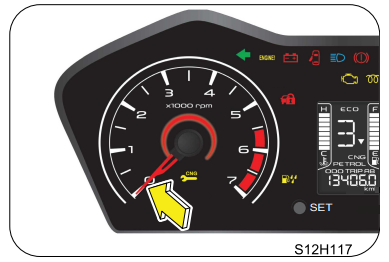
7.12.2 Speedometer
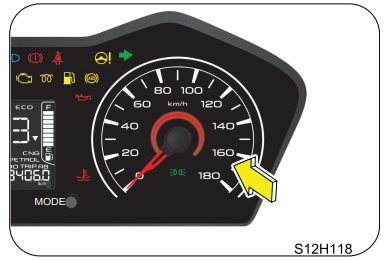
The speedometer indicates the real time road surface speed of the vehicle in kilometers per hour.
The vehicle speed is affected by the size of the tires used. If the size of the tires are changed from those fitted at the factory, the speedometer might not display the correct road surface speed and distance travelled.
7.12.3 Odometer/ Tripmeter
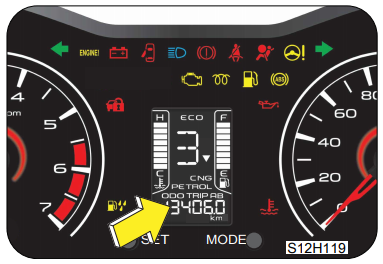
The bottom row of the LCD display gives the odometer reading. It records and displays the total distance traveled in kms.
The same display also gives the trip meter A & B details. It displays the distance travelled since the last trip reset. The two trip meters (A/B) can be reset by SET button.
Odometer and trip meter are displayed only when the ignition is ON.
7.12.4 Set and Mode Button
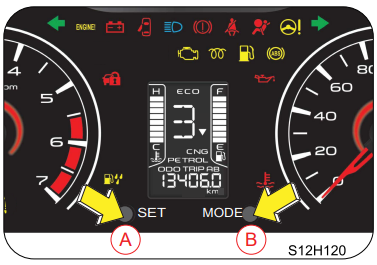
| A | Set Button | B | Mode Button |
To cycle between trip A & B, press and release MODE (B) button for a second.
Pressing the MODE button (B) while in trip B, displays the odometer reading. Again pressing the MODE button (B) displays trip A
While on trip A or B, press and hold the SET button (A) for more than 1 second to reset the respective trip reading to zero.
7.12.5 Engine Coolant Temperature Gauge
The engine coolant temperature bar graph functions only when the ignition is switched ON. It indicates the instantaneous engine coolant temperature. The coolant temperature varies with changes in weather, load on engine and driving pattern. LCD bar rises from Cold (C) towards Hot (H).
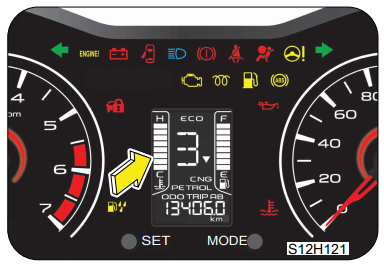
At normal operating temperature, 4 bars are displayed in the LCD bar graph. The high engine coolant temperature lamp along with 7 bars blink when the temperature reaches 110 o C with buzzer alert for 4 seconds, and when the temperature is 114 o C, the temperature warning lamp and all 8 bars are permanently ON. In such situations switch OFF the AC and observe any improvements in the temperature gauge. If not, stop the vehicle and allow the engine to cool down. Check the coolant level in the coolant reservoir and top-up if required. If the engine is still overheating, contact your nearest Authorized Mahindra Dealer.
Never remove the degassing tank cap when the engine is hot. The engine coolant is under pressure and could splash on to skin/eyes causing severe burns. Wait for the engine to cool down before adding coolant to the reservoir.
Do not continue driving the vehicle with a overheated engine. This will lead to damage of engine components and engine seizure.
7.12.6 Fuel Level Gauge
The fuel level bar graph functions only when the ignition is switched ON. It gives the status of the fuel level in the fuel tank. F indicates the tank is full (35 liters), E indicates the tank in empty. The amount of fuel required to fill the tank up may be less than the specified tank capacity, as a small amount of reserve fuel always remains in the tank.
When the tank is nearly full, 8 bars illuminate on the LCD bar graph display. When the tank is near empty i.e. RESERVE, the bottom bar alone is illuminated and the low fuel warning lamp in the cluster is ON.
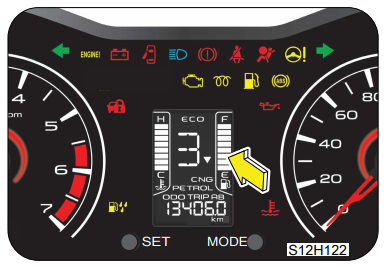
On inclines or curves, due to the movement of fuel in the tank, the fuel level may fluctuate or the low fuel level warning lamp may illuminate earlier than usual. Always check the fuel level when the vehicle is on level road.
If the Low Fuel warning is continuous ON and If all 8 bars of Fuel indication are blinking than contact Mahindra Dealer.
Refuel your vehicle as soon as the low fuel warning lamp starts blinking.
Refuel your vehicle only after switching OFF the ignition.
7.12.7 Bi-Fuel
The fuel level bar graph functions only when the ignition is switched ON. It gives the status of the fuel level of Petrol in the fuel tank when the vehicle is in Petrol mode. F indicates the tank is full (Petrol – 35 liters), E indicates the tank in empty. The amount of fuel required to fill the tank up may be less than the specified tank capacity, as a small amount of reserve fuel always remains in the tank.
When the tank is nearly full, 8 bars illuminate on the LCD bar graph display. When the tank is near empty i.e. RESERVE, the bottom bar alone is illuminated and the low fuel warning lamp in the cluster is ON.
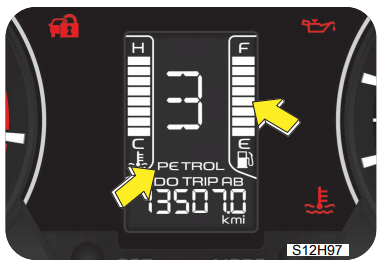
On inclines or curves, due to the movement of fuel in the tank, the fuel level may fluctuate or the low fuel level warning lamp may illuminate earlier than usual. Always check the fuel level when the vehicle is on level road.
If the Low Fuel warning is continuous ON and If all 8 bars of Fuel indication are blinking than contact Mahindra Dealer.
Refuel your vehicle as soon as the low fuel warning lamp starts blinking.
Refuel your vehicle only after switching OFF the ignition.
It gives the status of the CNG quantity in the cylinder when the vehicle is running in CNG mode. F indicates the cylinder is full (CNG – 200 bar approx), E indicates the cylinder is empty. The amount of fuel required to fill the cylinder up may be less than the specified cylinder capacity.
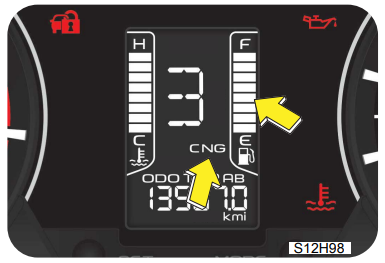
If the Low Fuel warning is continuous ON and If all 8 bars of Fuel indication are blinking then contact Mahindra Dealer
Refuel your vehicle as soon as the low fuel warning lamp starts blinking.
Refuel your vehicle only after switching OFF the ignition.
7.12.8 Gear Position Display
Gear Indicator displays N,1,2,3,4,5,R, according to gear position during vehicle running and idling position. It will be displayed only when clutch is fully released. In case of reverse the gear indicator displays R until the vehicle is in reverse gear.

Indications will be displayed as:
| N | Neutral | 4 | 4th gear |
| 1 | 1st gear | 5 | 5th gear |
| 2 | 2nd gear | R | Reverse gear |
| 3 | 3rd gear |
7.13 Warning Lamps Overview

| Park/Low Brake fluid lamp | EPS Malfunction Lamp | Low Oil pressure Lamp | Battery Charge Lamp | ABS warning Lamp | High Temperature Lamp | ||||||
| Left indicator | Head Lamp High Beam | Glow plug Indicator* | Seat Belt warning lamp | Malfunction Lamp | Security lamp | ||||||
| Right indicator | Check Engine Lamp | Low fuel warning lamp | Water in fuel warning lamp | Door Ajar lamp | Park lamp | ||||||
| CNG Warning Lamp# | |||||||||||
| * Applicable only for Diesel Variant | |||||||||||
| # Applicable only for Bi-Fuel Variant | |||||||||||
7.14 Warning Lamps in the Instrument Cluster
7.14.1 Malfunction (OBD) Lamp
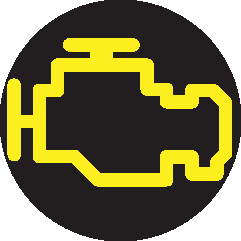
The Malfunction (OBD) Lamp illuminates when the ignition is switched ON and remains ON till the engine has started indicating normal status. If the lamp remains ON, even after the engine is running then it indicates a potential engine malfunction.
- The fuel management system
- The emission control system
- Systems which affect emissions
Such malfunctions may result in excessive emissions. Contact an Authorized Mahindra Dealer immediately.
7.14.2 Check Engine Lamp
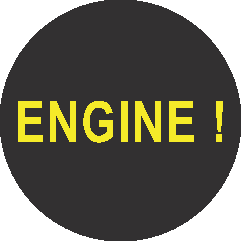
The check engine lamp illuminates when the ignition is switched ON and goes out in 3 seconds indicating normal status .If the lamp blinks or illuminates continuously then it indicates that there is a fault in the engine management system. Contact the nearest Mahindra Dealer for the necessary repairs.
7.14.3 Glow Plug Indicator

After Pre-check Glow plug indicator illuminates if required, It automatically goes OFF when the glow plug reaches the required temperature. Contact an Authorized Mahindra Dealer if the glow plug lamp does not illuminate with ignition ON or illuminates while driving.
7.14.4 Security Lamp
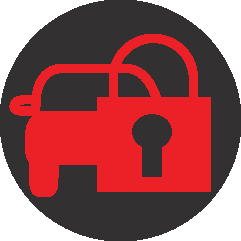
Once the ignition is turned OFF, the security lamp will blink at a fast rate frequency indicating the vehicle is secured against unauthorized start of engine. When the vehicle is locked using RKE, security lamp will blink at a slow rate frequency which will indicate that antitheft system is armed and unauthorized door entry to the vehicle will trigger alarm.
At ignition ON, the security lamp blinking continuously indicates a malfunction in the engine immobilizer system. Contact an Authorized Mahindra Dealer immediately.
7.14.5 Parking Brake/Low Brake Fluid /EBD Warning Lamp (if equipped)
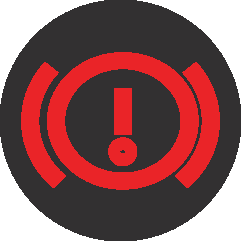
The lamp illuminates when the parking brake is engaged or when the brake fluid level in the reservoir is low or when EBD (if equipped) failure is detected. If the lamp illuminates while driving, do the following:
- Check if the parking brake is engaged. If yes, disengage it
- Check if the brake fluid level is low. If yes, top-up brake fluid (DOT 4) to the required level
If the brake lamp still continues to illuminate, immediately get the vehicle checked at an Authorized Mahindra Dealer.
Clean the top of the brake fluid reservoir before removing the cap. Make sure no dirt, impurities or other items fall into the reservoir. Do not leave the cap off for more than a few minutes. Any contaminants, impurities or moisture in the brake fluid can affect brake operation, resulting in an accident.
If the brake warning lamp comes ON while driving, the brake system or the EBD system (if equipped) might not be working properly. The pedal might be harder to operate or might go closer to the floor and it can take longer to stop. Pull off the road carefully and stop the vehicle. Contact the nearest Authorized Mahindra Dealer for checks or repairs.
Driving the vehicle with the brake warning lamp ON or when you suspect brake trouble is very dangerous and could result in serious injuries. Contact an Authorized Mahindra Dealer for checks or repairs.
When there is a EBD failure, the parking brake lamp illuminates along with the ABS warning lamp.
7.14.6 Turn Lamps


The turn lamp arrows in the instrument cluster flash showing the direction indicated by the turn signals. A sudden increase in the rate of flashing indicates failure of one or more of the lamp bulbs. Have them replaced as soon as possible.
7.14.7 Park Lamp

The Park lamp indicator illuminates whenever park lamp is switched ON through Combination switch. During ignition OFF if park lamp is ON with driver door open buzzer alert will be audible for 6 seconds.
7.14.8 Head Lamp High Beam Lamp
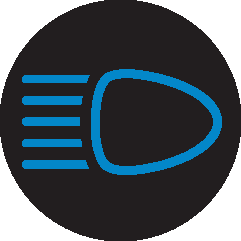
The head lamp high beam lamp illuminates whenever the head lamps are switched ON to high beam or when the head lamp flash is used.
7.14.9 Battery Charging System Warning Lamp
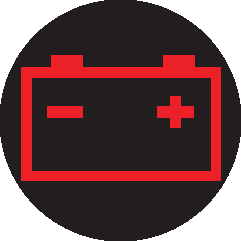
The battery charging system warning lamp illuminates when the battery is not being charged or when there is a malfunction in the alternator.
This lamp illuminates when the ignition is switched ON and goes out as soon as the engine is started. If the lamp continues to remain ON even after starting the engine, it is an indication that the battery is not being charged or there is a malfunction in the alternator. Check the alternator drive belt for looseness/breakage. If the drive belt is okay, switch OFF all unnecessary electrical equipment and recheck. Contact an Authorized Mahindra Dealer for further assistance.
7.14.10 Low Engine Oil Pressure Warning Lamp
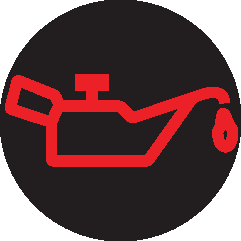
The low engine oil pressure warning lamp illuminates when the ignition switch is turned ON and goes out as soon as the engine is started. If the lamp remains ON even after starting the engine, or illuminates while driving with buzzer alert, stop immediately and check the oil level after 2-3 minutes. If low, add engine oil to the ‘MAX’ level and check status. If problem persists, contact an Authorized Mahindra Dealer immediately.
Operating the vehicle with the low oil pressure warning lamp ON could cause sudden unexpected engine failure and loss of vehicle control, resulting in an accident or personal injury.
Do not run the engine with low oil pressure warning indicator ON. This may result in engine damage, which will not be covered by the limited warranty.
7.14.11 High Engine Coolant Temperature Warning Lamp
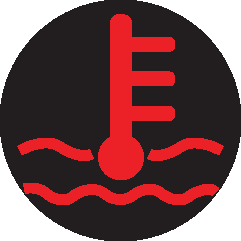
The high engine coolant temperature warning lamp and 7 bars in the temp gauge blink when the coolant temperature reaches 110° C with buzzer alert for 4 seconds, and they remain permanently ON when the temperature reaches 114° C. Contact an Authorised Mahindra Dealer immediately.
Do not continue driving the vehicle with an overheated engine. This may result in engine damage, which will not be covered by the warranty.
7.14.12 Water-in-Fuel Warning Lamp
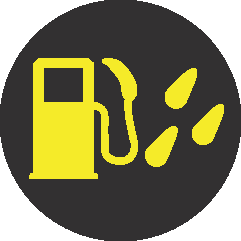
The water-in-fuel warning lamp illuminates when the accumulation of water in the fuel filter reaches the maximum permissible limit. The fuel filter needs to be drained. Contact an Authorised Mahindra Dealer.
Do not continue driving the vehicle with the water-in-fuel warning lamp ON. This may result in fuel pump/other fuel system component damage, which will not be covered by the limited warranty.
7.14.13 Low Fuel Warning Lamp
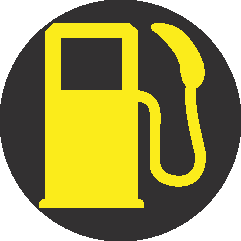
Continuously ON-When the fuel level in the fuel tank falls to the reserve limit, the low fuel warning lamp is ON
Blinking- If the fuel level goes to empty state the lamp starts blinking. Refuel sufficiently and the lamp goes out. If the Low Fuel warning is continuous ON and If all 8 bars of Fuel indication are blinking than contact Mahindra Dealer.
7.14.14 Seat Belt Warning Lamp
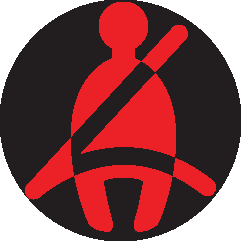
The seat belt warning lamp blinking reminds the driver to fasten seat belt when the ignition is ON. After starting the engine, if driver seat belt is not fastened the seat belt buzzer alert will come for 6 seconds with seat belt lamp blinking. The lamp will continue to blink till the driver fastens the seat belt properly.
7.14.15 Anti-lock Brake System (ABS) Malfunction Lamp
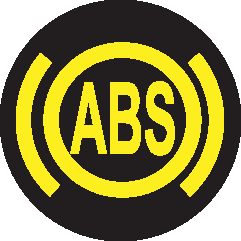
The ABS malfunction lamp illuminates when the ignition is switched ON and goes OFF after about 3 seconds. If the ABS malfunction lamp continues to remain ON or illuminates while driving, the ABS will not operate. But the brake system will still operate conventionally. In this condition, the wheels can lock during severe braking. Have the vehicle checked by an Authorized Mahindra Dealer as soon as possible
When a EBD failure is detected, both the ABS and the parking brake warning lamps illuminate.
7.14.16 EPS Warning Lamp
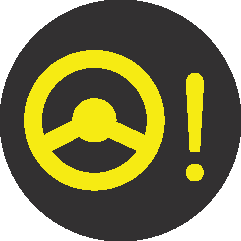
EPS warning lamp Indicates malfunction on Electric Power steering system. Contact an Authorized Mahindra dealer immediately.
When EPS is failed. vehicle can still be driven with increase in steering effort.
7.14.17 Door Ajar Warning Lamp
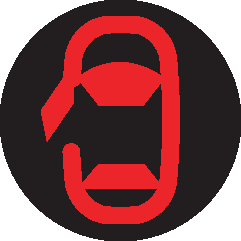
The door ajar warning lamp illuminates with buzzer alert for 4 seconds, when any door is open during ignition ON. The lamp goes OFF when all the doors are closed properly.
7.14.18 CNG Lamp
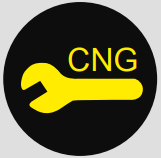
The CNG malfunction lamp illuminates when the ignition is switched ON and goes OFF after about 3 seconds. If the CNG malfunction lamp continues to remain ON or illuminates while driving, contact an Authorized Mahindra Dealer as soon as possible.
8 STEERING AND BRAKES
8.1 Steering
Your vehicle is equipped with an Electric power steering system(EPS). There is no fluid reservoir to check or fill. EPS uses energy from the battery to decrease the driver's effort in steering the vehicle. The EPS system will give you good vehicle response and increased ease of maneuverability in tight spaces. If for some reason the power assist is interrupted, it will provide mechanical steering capability to steer the vehicle. Under these conditions, you will observe a substantial increase in steering effort.
- When driving in rough/off roads, hold the steering wheel rim, do not hold the wheel spokes. A sudden bump can jerk/ turn the wheel and injure your hand. This may also lead to loss of vehicle control.
- The EPS warning light should only be illuminated with the ignition ON before starting the engine.
- If the warning light remains illuminated after the engine has been started, there will be no assistance from power steering . The vehicle may be driven using the mechanical steering system although it is not recommended as the effort to turn the steering wheel will be significantly high. In this case contact an Authorized Mahindra Dealer immediately.
Keep both hands on the steering wheel, with the thumbs resting on the outer wheel rim.
- Never hold the steering wheel to the extreme right or the extreme left for more than a few seconds when the engine is running.
- During parking manoeuvre or continuous steering when vehicle is not in motion, the steering may appear to feel slightly stiff. This is not a malfunction; it is caused by a control system designed to prevent the motor from overheating. However, after a few minutes the steering wheel will return to its normal condition.
If the Electronic power steering system breaks down (or if the engine is turned OFF), you can still steer the vehicle manually, but it takes more effort.
- Underinflated tyre(s) on any wheel(s)
- Uneven vehicle loading
- High crown in the center of the road
- High crosswinds
- Wheels out of alignment
- Wheels out of balance
- Loose or worn suspension components
8.2 Tilt Steering
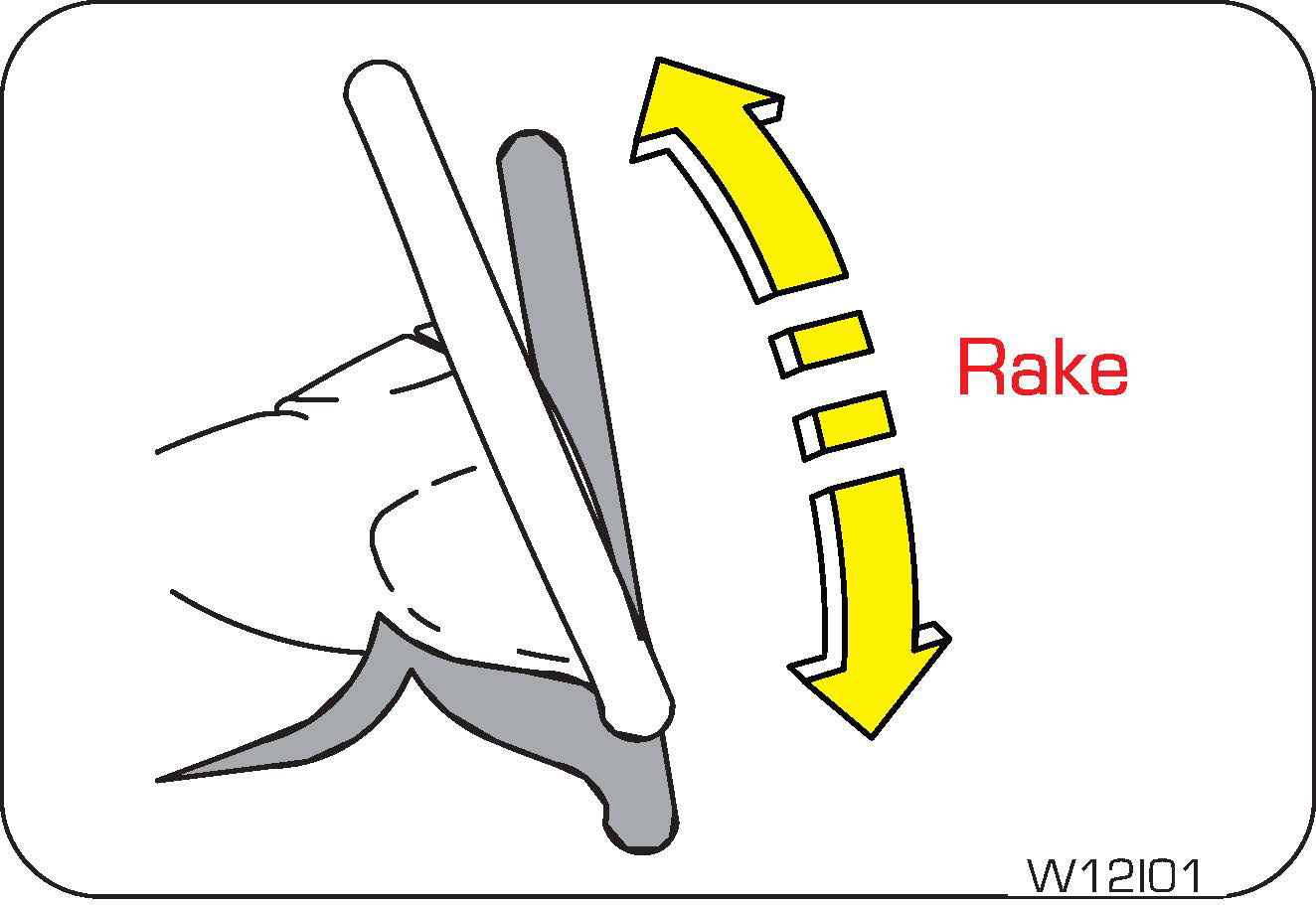
The steering wheel can be adjusted for rake as required using the lever in the steering shroud under the steering wheel.
To tilt/adjust the steering wheel;
- Ensure the vehicle is stationary and parking brake engaged
- Pull the steering tilt lever down to unlock
- Raise or lower the steering wheel to the desired position
- Push the lever back up to its original position to lock the steering
- Adjust the seat according to the steering wheel position
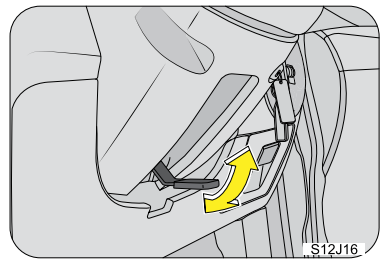
An improperly locked steering wheel could cause loss of control and lead to accidents. Never adjust the steering wheel while driving.
8.3 Brakes
Your vehicle is equipped with disc brakes in the front and drum brakes in the rear.
Disc brakes offer good braking capability and reduced stopping distance. Wet brake discs result in reduced braking efficiency. After a car wash or driving the vehicle through water, dab the brake pedal while driving to remove the film of water from the brake pads. Brake pads feature mechanical wear indicator. When the brake pad is worn, metallic squeal noise is heard indicating the pad wear. Have them replaced immediately.
Driving with wet brakes is dangerous. Stopping distance increases considerably when braking.
Dry the brakes by driving at very slow speed and applying the brakes lightly until the brake performance becomes normal.
Even if the power assist (vacuum assistance) is completely lost, the brakes will still work. The brake pedal would be much harder than normal and the vehicle stopping / braking distance will be longer than usual.
8.4 Parking Brake
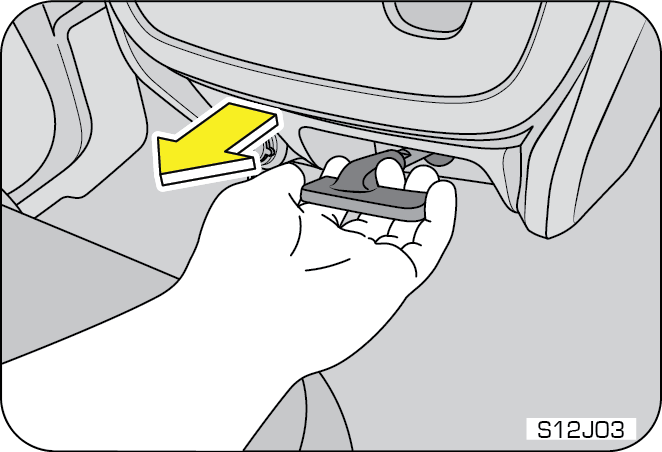
Pull the parking brake lever as far as possible towards you.
For better holding power, first depress the brake pedal and hold it while applying the parking brake.
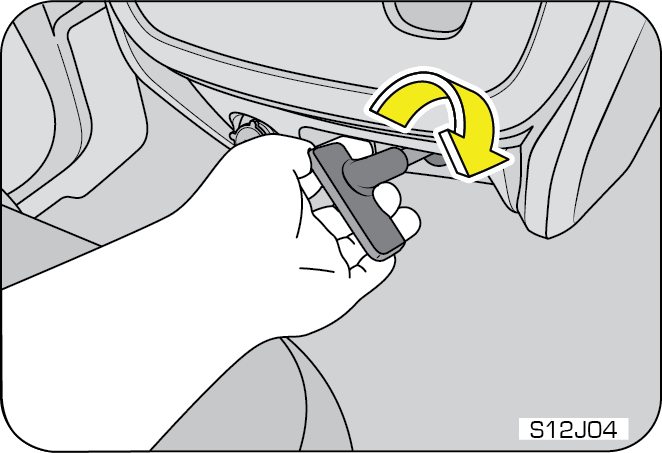
To release, turn the Lever clockwise and push it all the way forward.
To remind you that the parking brake is applied, the parking brake reminder light in the instrument cluster remains ON, until you release the parking brake and push it to the home position.
In the Case of Extreme Position of the Parking Brake Lever : To Release, Turn the Lever Clockwise completely and Push it all the way forward
Do not attempt to release the Parking brake lever from top side. This may result in fingers get jammed with center console.
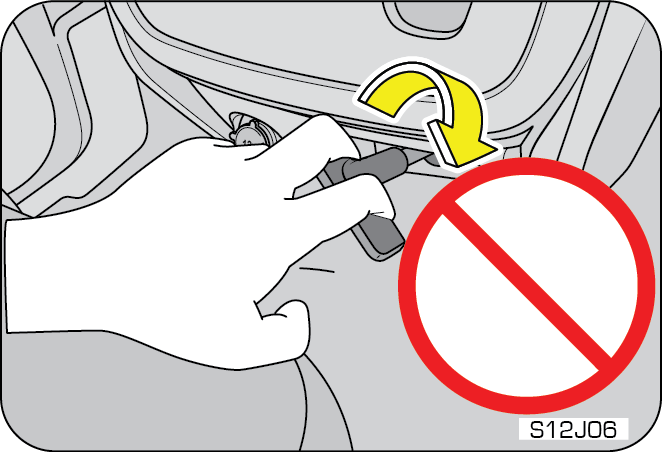
Be sure the parking brake is fully disengaged before driving off. Failure to do so can lead to brake problems due to excessive heating of the rear brakes.
- The parking brake should be adjusted as per recommended maintenance schedule
- Always apply the parking brake when leaving the vehicle, and be certain to leave the transmission in gear, with the engine switched OFF. Failure to do so may allow the vehicle to roll and cause damage, hit a bystander resulting in personal injury.
- Leaving unattended children in a vehicle is dangerous for a number of reasons. Children should be warned not to touch the parking brake or the gear shift lever. Do not leave the key in the ignition. A child could move the vehicle leading to accidents
- The parking brake should always be applied when the driver is not in the vehicle.
Engaging the parking brake while the vehicle is in motion can cause the rear wheels to lock up. You could lose control of the vehicle and cause an accident.
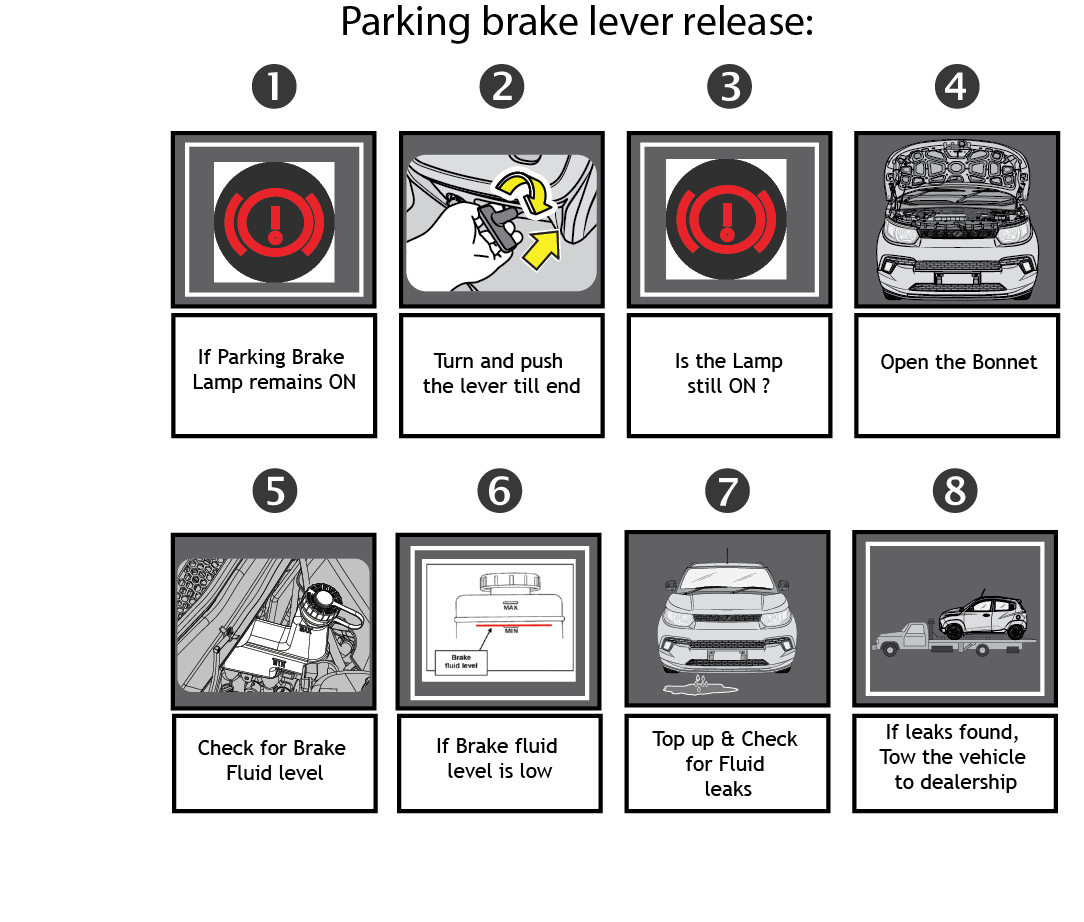
8.4.1 Parking on a Hill/Incline
If you have to park facing uphill, select first gear and turn the front wheels away from the kerb. If you have to park facing downhill, select reverse gear and turn the front wheels towards the kerb. Always ensure the parking brake is engaged before leaving the vehicle.
8.5 Anti-Lock Brake System (ABS) (if equipped)
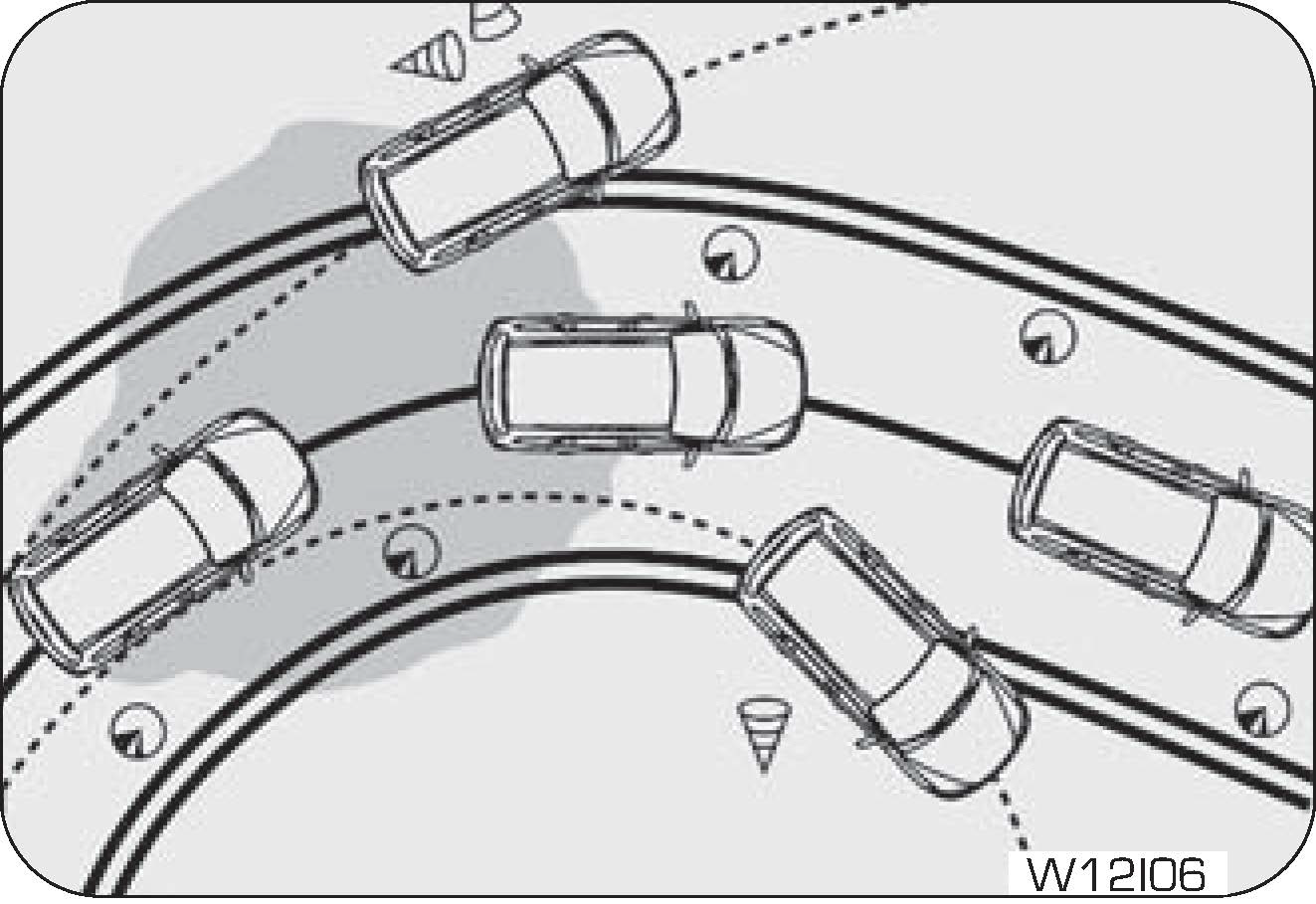
The Anti-lock Brake System (also called as ABS) is designed to help prevent lock-up of the wheels and stable stopping of vehicle during a sudden, panic emergency braking or braking on slippery road surfaces. The ABS system takes input from wheel speed sensors and brake pedal switch to control the brake fluid pressures at the wheels to avoid wheel lock-up. It allows vehicle to be steered during braking.
The minimum speed for ABS to function is 12 kmph. ABS is activated only during wheel lock conditions where ABS takes over and prevents wheel lock. During the ABS operation, a slight pulsation may be felt in the brake pedal to indicate ABS is active. You may also hear motor noise from the engine compartment. It is recommended to hold the brake pedal firmly while the ABS is active rather than pumping the brake pedal.
Depressing the brake pedal on slippery road surfaces as on a manhole cover, a steel plate at a construction site, a joint in a bridge, etc. on a rainy day, tends to activate the anti-lock brake system. The ABS warning lamp lights up when you switch ON the ignition and should go out after a few seconds. If the ABS warning lamp does not go out or if it comes ON while driving, it indicates there is a fault in the ABS system. Even if the ABS lamp comes on the normal braking system remains efficient, exactly as on a vehicle without ABS. However since the ABS functionality may be reduced when ABS lamp is ON the wheel locking can happen under wheel locking conditions, drive cautiously
The vehicle should be examined as soon as possible by an authorized Mahindra dealer. The Anti-lock brake system is not designed to shorten the stopping distance: Always drive at a moderate speed and maintain a safe distance from the vehicle in front of you. The stopping distance may be longer in the following cases:
- Driving on rough, gravel or snow covered roads.
- Driving with snow chains installed.
- Driving over steps such as the joints on the road.
- Driving on roads where the road surface is pitted or differences in surface height.
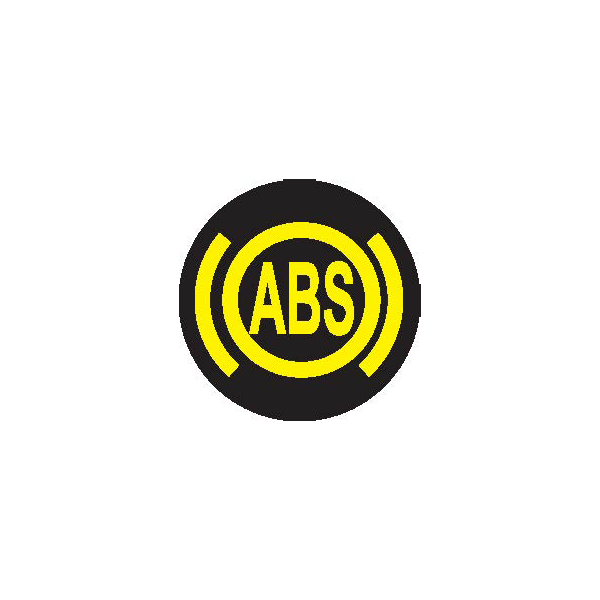
The ABS warning lamp lights up when you switch ON the ignition and should go out after a few seconds. If the ABS warning lamp does not go out or if it comes ON while driving, it means there is a fault in the ABS system. In both cases, the normal braking system remains efficient, exactly as on a vehicle without ABS. The vehicle should be examined as soon as possible by an authorized Mahindra dealer.
Do not overestimate the Anti-lock Brake System: Although the Anti-lock Brake System assists in providing vehicle control, it is still important to drive with all due care and maintain a moderate speed and safe distance from the vehicle in front of you. There are limits to the vehicle stability and effectiveness of steering wheel operation even with ABS active. If tyre grip performance exceeds its capability, or if hydroplaning occurs during high speed driving in the rain, the Anti-lock Brake System will not assist with vehicle control.
9.1 HEATING, VENTILATION AND AIR-CONDITIONING SYSTEM (HVAC)
The climate control system enables you to set the cabin at the desired comfortable condition by controlling airflow, air intake and temperature control. The HVAC system also helps in defrosting and defogging/demisting the windshield and windows.
Engine coolant is utilized to heat the cabin air. For cooling cabin air, an air conditioning circuit based on the vapor compression refrigeration cycle is used. The air conditioning system uses a refrigerant along with a suitable lubricating oil. Though the refrigerant is non-ozone depleting, the refrigerant is a greenhouse gas. Hence we do not suggest the gas to be released directly into the atmosphere; it adversely affects the environment by contributing to global warming/climate change.
Multiple vents are provided for distributing the air, being force circulated by the HVAC blower, throughout the passenger compartment. Various ducts supply air from the HVAC unit to these vents having adjustable louvers.
Refrigerant used in the system is a hazardous liquefied gas and is under high pressure. The refrigerant is colorless and has ethereal or faint sweetish odor. Exposure of refrigerant to the skin or eyes may cause irritation and frostbite. It can also cause suffocation, dizziness and loss of concentration. When mixed with compressed air or certain other refrigerants, it may form a flammable mixture. Never try to service the HVAC system yourself which would involve refrigerant handling.
To ensure sufficient air flow and hence adequate HVAC system performance, the air flow path should be kept free of obstructions. Keep the system’s air intake, located near the plenum appliqué, free of snow, leaves and other debris. Also keep the area in front of the air vents free of any obstruction inside the cabin.
9.2 HVAC Overview
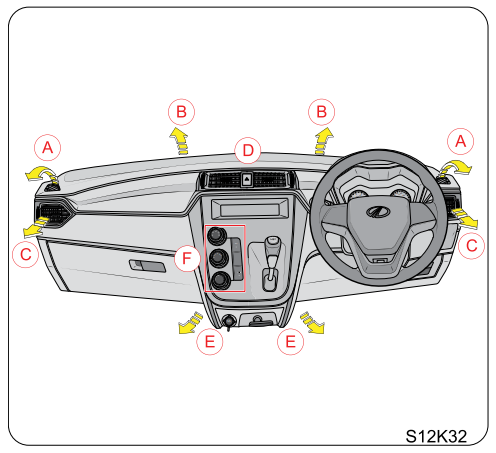
| A | Side Demisting Vents | D | Centre Vents |
| B | Windshield Defrost Vents | E | Foot Vents |
| C | Side Vents | F | HVAC Controls |
9.3 Center/Side Vents
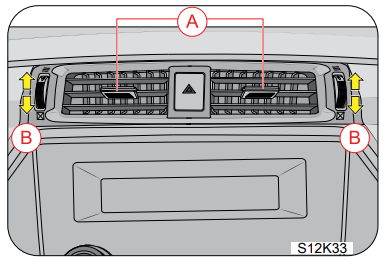
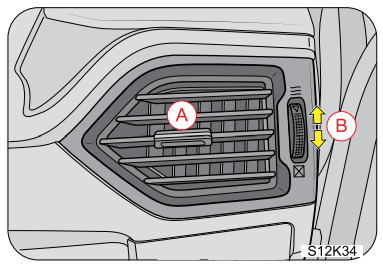
| A | Adjustable Louvers |
| B | Thumb Wheel (Open/Close) |
Two center vents are located above the audio system on the instrument panel and two side vents located one each at the left and right extreme ends of the instrument panel. Both the center and side vents provide air flow to the front seat passengers. Rotate the thumb wheel (B) up to open or down to close the air vent. Direct air to the desired direction by the adjusting louvers (A).
9.4 HVAC Controls
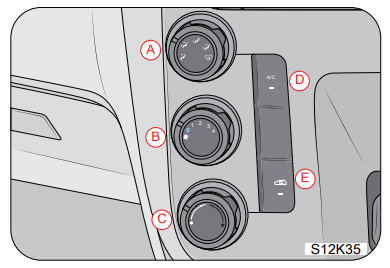
| A | Air Distribution Control | D | AC ON/OFF |
| B | Blower Speed Control | E | Air Re-circulation Switch |
| C | Temperature Control |
9.5 Air Distribution Control
The air flowing out of various vents can be controlled by the air distribution control knob/button.
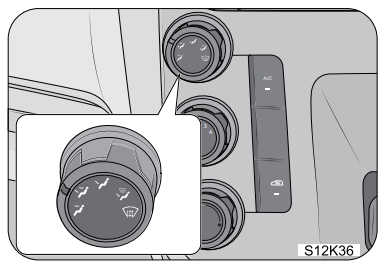
- Face Mode — air is discharged from the center vents and side vents. This mode is most suitable for directing air flow towards the face of the passengers
- Face-Foot Mode — air is discharged from the center vents, side vents and foot vents. This mode is most suitable for directing air flow towards both the face and feet of passengers at the same time
- Foot Mode — air is discharged from the two foot vents . This mode is most suitable for directing air flow towards the feet of passengers seated on front seats. When it is in this mode, automatically the air intake will be in fresh air. This is because normally the foot mode is used with heater. At the same time, if the customer desires he can override manually and bring it to recirculation
- Foot-Defrost Mode — air is discharged from the foot vents, side defrost vents and windshield defrost vents. This mode is most suitable for directing air flow towards the feet of passengers while defrosting or demisting/defogging. When it is in this mode, automatically the air intake will be in fresh air. This is because normally the foot mode is used with heater. At the same time, if the customer desires he can override manually and bring it to recirculation
- Defrost Mode — air is discharged from the side defrost vents and windshield defrost vents. This mode is most suitable for directing air flow towards the front windshield to ensure defrosting or demisting / defogging. When it is in this mode, automatically the air intake will be in fresh air. This is because normally the foot mode is used with heater. At the same time, if the customer desires he can override manually and bring it to recirculation
9.6 Blower Speed Control
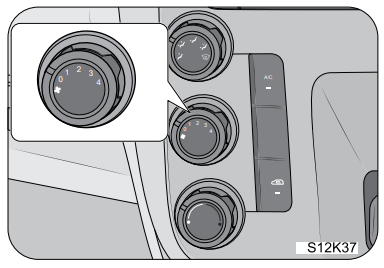
The blower force-circulates air through the HVAC unit and distributes it throughout the passenger compartment.
Blower is OFF when the blower speed control knob is set to small “o” position (extreme left). To switch-ON the blower, rotate the control knob clockwise which progressively increases the blower speed.
9.7 Temperature Control
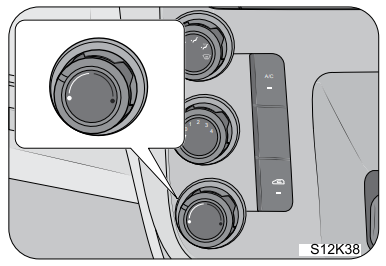
By operating the temperature control knob, temperature of air being discharged from various vents can be adjusted to the desired level. Engine coolant is utilized to heat, whereas the air conditioner is used to cool the air inside the AC unit. Based upon selected position of the temperature control dial, the desired discharged air temperature can be obtained.
By rotating the dial counter-clockwise and setting it to the extreme left position, maximum cooling is obtained. When the dial is rotated clockwise, the discharged air progressively starts getting warmer and at the extreme right position, hot air is discharged. When the temperature control is in approximately two O’ clock position the air intake is automatically shifted to fresh air mode. This facilitates better functioning. At the same time if the customer is not comfortable , he can manually override and switch to recirculation mode
9.8 Air Intake Mode Control
The air intake control button toggles between fresh air or recirculated air modes.
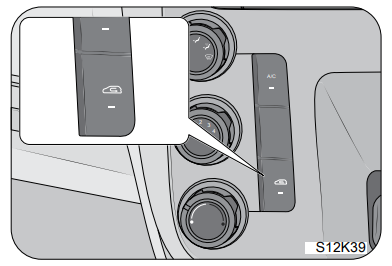
To set the HVAC system to fresh air mode, keep the air intake control switch in the OFF condition. The lamp on this switch is OFF, indicating that the fresh air mode is active. In this mode, fresh air from outside the vehicle is sucked by the blower and utilized further to ventilate/cool/ heat the cabin.
To set the HVAC system to re-circulation mode, press the air intake control switch once. The lamp on the switch is ON, indicating that re-circulation mode is active.
In this mode, the air from inside the passenger compartment will be sucked by the blower and utilized further to ventilate/cool/ heat the cabin.
For quick cabin cooling/heating or while driving through dusty/ polluted regions, the recirculation mode can be selected. Driving with this mode active may lead to better fuel economy and longer HVAC filter life.
However, running the air conditioner in the re-circulation mode for long will make the cabin air too dry and the oxygen level drops inside cabin turning the air stale. On the contrary, keeping air intake control in the recirculation mode for long, with the air conditioner switched OFF, will make the cabin air too humid and the windshield/windows are more likely to fog.
The re-circulation mode is activated by default every ignition cycle during cranking. The customer can override and bring it to fresh air if desired after the engine starts.
9.9 Air-Conditioner ON
The air conditioning system can be switched ON/OFF by the “AC button” in the climate control system. A LED is also incorporated on the button to indicates the status. The air conditioner is operational only when both the engine and blower are running.
When the air conditioner is ON, air gets cooled and de-humidified before being circulated inside the cabin. In hot weather conditions, it will take slightly longer to cool the interior as compared to cooler weather. Fuel consumption will be relatively higher if the vehicle is being driven with the air conditioner.
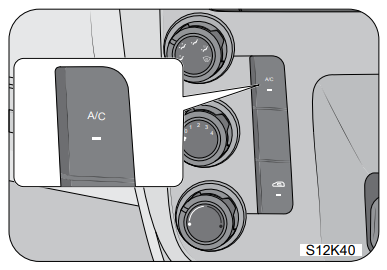
- Adjust the blower speed as required.
- Select the air distribution mode as desired.
- Select the air re-circulation mode if required.
- Press the AC button to turn on the AC.
- Adjust the temperature control dial as per the temperature requirement.
- In certain operating conditions when the engine gets overheated, the engine management system may switch off the air conditioner intermittently
- If the vehicle has been parked in sun for long, then we suggest to achieve fast cooling : The windows to be rolled down, blower to be kept ON at max. AC ON. Engine ON, roll up the windows after 1 to 3 minutes. This will help in pushing out the heated air out. This step is a recommendation
- Occasionally the air conditioner might not actually be functioning even when the LED on the AC switch remains illuminated. This is to be considered as normal AC system operation
- When the air conditioner is ON, moisture is extracted from the air. The resulting condensate is drained off from the vehicle. It is therefore normal, if you see a small pool of water under your vehicle
- During extreme cold weather conditions, the air conditioner may not function until the temperature of the air near the evaporator rises above a pre-defined threshold
- When the air conditioner is ON, moisture is extracted from the air. The resulting condensate is drained off from the vehicle. It is therefore normal, if you see a small pool of water under your vehicle
Your vehicle is equipped with an HVAC filter. If the AC performance is considerably low, it is recommended have the HVAC filter checked at the nearest Mahindra Dealer.
9.10 HVAC Air Filter (Cabin Air Filter)
Your vehicle’s HVAC system is equipped with two air filters (Primary & Secondary) at the blower inlet just behind the glove box. Before getting sucked-in by the blower, air passes through this filter element. Dirt and other foreign particles get trapped inside the filter. Clean air is then circulated through the HVAC unit and into the cabin.
The HVAC filter gets clogged after long use. The clogged filter will reduce the air flow rate, thereby the air-conditioning and heating efficiencies will be drastically reduced. Even the windshield/ windows may begin to mist/fog-up easily.
To maintain optimum HVAC system performance, Clean/Replace the filter element as per recommended maintenance schedule. However while operating in highly dusty or polluting conditions, the filter may require early replacement. If the air flow seems to have considerably reduced, get the filter cleaned immediately.
To access the Primary filter, open the glove box, remove the rubber pins on both sides of the glove box lid. Un-clip the filter retaining clip and remove the filter straight out. Clean the air filter or replace (if damaged) and follow the reverse procedure for putting the filter back.
To access the Secondary filter, open the glove box, remove the eight screws around the glove box and remove it. Un-clip the filter retaining clip and remove the top filter straight out. Then lift the bottom filter up and remove it. Replace the air filter as per maintenance schedule and follow the reverse procedure for putting the filter back.
Never operate the HVAC system with the filter removed. This may result in premature failure of system components.
9.11 Rapid Cabin Cooling
- Make sure that all the windows are fully closed
- Set the blower to maximum speed
- Fully open the vents and adjust louvers to direct air toward face
- Set the air distribution control to face mode
- Set air intake control to recirculation mode
- Turn the air conditioner ON
- Set the temperature control knob to the extreme left (coolest) position
Once the passenger compartment reaches a comfortable temperature, shift to fresh air mode. Also blower speed and temperature control knob can be re-adjusted as desired.
If your vehicle was parked in the hot sun with all the windows closed, drive the vehicle with windows open for the first few minutes. This will help in venting the hot interior air out and allow the air conditioner to cool the cabin quickly.
9.12 Rapid Cabin Heating
- Make sure that all the windows are fully closed
- Set the blower to maximum speed
- Set the air distribution control to foot mode
- Set air intake control to recirculation mode
- Set the temperature control knob to extreme right (hot) position
- For dehumidified heating, switch the air conditioner ON
Once the passenger compartment reaches a comfortable temperature, the blower speed and temperature control knob can be readjusted as desired.
In extreme cold weather conditions, the engine coolant takes time to get heated up. Hence it might take a while for hot air to discharge.
9.13 Defogging/Demisting and Defrosting
For keeping the front windshield and side windows clear, proper control of the HVAC system is essential. Follow the instructions in the subsequent sections to clear the frosted/misted/ fogged up front windshield.
9.12.1 Front Windshield Defog
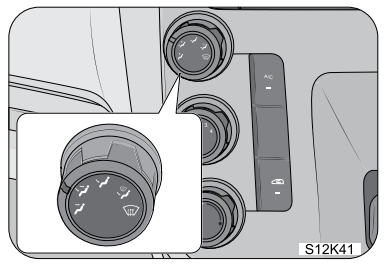
- Set the blower to full speed
- Switch the air conditioner ON
- Set the air distribution control to defrost mode
- Select the fresh (outside) air intake mode
- Adjust the temperature control knob to maintain comfort
To defrost/deice the outside windshield, follow the above steps but switch OFF the AC. We recommend that the temperature control should be on maximum heating
On humid days, do not blow cold air on the windshield and side window glass, the difference between the outside and inside cabin temperature could make the fogging worse.
9.12.2 HVAC Points to Remember
- For quickly clearing the misted/fogged/frosted-up windshield, set the blower speed to maximum. For quick defrosting, set the temperature to extreme hot
- Once the windshield is cleared, keeping the air conditioner ON helps in keeping windshields and windows clear. Keep the fresh air mode selected. If required, re-adjust the blower speed and temperature control knob to maintain comfort.
- Driving the vehicle for long with glasses rolled up the air conditioner switched OFF may lead to windshield or windows getting misted/fogged up
- Driving the vehicle for long continuously in the recirculation mode may lead to windshield or windows getting misted/fogged up
- It is advisable to intermittently switch to FRESH air mode during long drives. Do not drive only in RECIRULATION mode continuously on long drives
- Do not blow cold air on the windshield and windows during humid weather. It could make windshield/windows mist/fog-up
- For defogging/demisting/defrosting the side windows at the front, select either Face or Face-Foot mode while directing air flow towards windows by adjusting the louvers of side vents. All other settings should be kept same as advised for windshield defogging/demisting/defrosting
- For heating the vehicle interior while windshield defogging/demisting/defrosting, select the Foot-Defrost mode. All other settings should be kept same as advised for windshield defogging/demisting/defrosting
- For fast defogging/demisting/defrosting the outside of the windshield, it is advisable to operate the windshield wiper/washer for a few times intermittently
- If snow has deposited on the windshield, use an ice scraper to remove the ice deposited before using the wiper
- In freezing weather, warm the windshield with the defroster before using the windshield washer. Also use a washer fluid with anti-freezing properties. This will help prevent the washer fluid from freezing on your windshield
- A dirty/contaminated windshield would make misting/fogging worse. Always keep the inside and outside of the windshield clean
- Reduced air flow because of a clogged HVAC filter or any other obstructions in the air flow path may lead to inadequate defogging/demisting/defrosting performance. If the air flow seems to have considerably reduced, get the filter cleaned/replaced immediately. The air flow path should be kept free of obstructions
- Reduced cooling performance from the air conditioner may lead to inadequate defogging/demisting/defrosting. If the cooling effect seems to have dropped considerably, get the air conditioning system checked by an Authorized Mahindra Dealer
10 STARTING AND DRIVING THE VEHICLE
10.1 Safety Tips - Before Starting your Vehicle
10.1.1 General
- Before starting the vehicle, inspect the inside and outside of the vehicle ; look for any damages, leaks, loose parts, foreign objects/debris. Contact an Authorized Mahindra Dealer if required.
- Before starting your journey, check the working of all safety devices/components especially brakes, steering, lamps, signals and tires. In case you suspect any system/devices not working properly contact Authorized Mahindra Dealer.
- Adjust the seat headrest, steering wheel and fasten the seat belt as described in this manual. Never perform any seat/ steering adjustments when the vehicle is in motion.
- Start the vehicle only when seated and belted in the driver's seat.
The Engine Management System controls the engine's idle speed. When the engine starts, idle RPM runs higher than normal in order to warm the engine. The engine idle speed RPM reduces once the engine warms up.
Never start your vehicle in a closed garage or in an enclosed area. Exhaust fumes can be toxic. Always keep the garage door open or start the engine in an open area.
10.1.2 Mirror Adjustment
Ensure that the rear view mirror and both the ORVM’s are adjusted for an unobstructed view of the road behind.
10.1.3 Exterior Lamps
Have someone observe and confirm normal operation of all exterior lamps while you work on the controls from the driver seat. Also, check functioning of all lamps in the instrument panel.
10.1.4 Door Latches
Check for positive closing, latching, and locking of all doors, both from inside and outside.
10.1.5 Fluid Leaks
Check the area under vehicle after an overnight parking for fuel, power steering fluid, brake fluid, engine coolant, oil, or other fluid leaks. If leaks are observed, contact an Authorized Mahindra Dealer.
10.2 Ignition Switch
An illuminator ring is provided on the face of the ignition switch to help in locating the ignition switch at night. The ring will illuminate the moment the driver door is opened and will remain glowing till the driver door is closed.
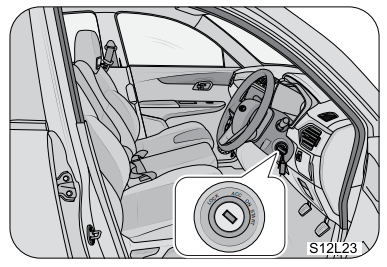
LOCK — This is the ignition and steering lock position. The vehicle circuits and engine are completely switched OFF. The steering wheel is also locked and the key can be removed from the ignition only in this position.
ACC — The steering is unlocked and can be rotated. In this position all electrical circuits are enabled. Use this mode when you want to listen to music, etc., with the engine temporarily switched OFF.
ON — All electrical circuits are enabled. Some of the warning or information lamps illuminate in this position. While some of the lamps will go out after a few seconds, some will continue to remain ON till the engine is started. When the vehicle is being driven, the ignition switch remains in the IGN position.
Select the ignition ON position when the vehicle is being towed.
Do not leave the ignition ON for long when the engine is OFF. This could lead to battery drain and ignition switch damage.
START — This position is to start the engine by cranking the starter motor. This is a momentary position. When the key is turned to the start position, the starter cranks the engine. Once the engine is running, release the key, and the key reverts back to the ON position and the starter motor disengages from the engine.
Do not continue cranking after the engine has started. This will lead to damage of the starter and other engine components.
If turning the key is difficult, jiggle the steering wheel from side to side and try again. The key can be removed only in the LOCK position. When the key is removed, the steering column lock is activated and the steering wheel cannot be turned.
Never return the key to the LOCK position or try to remove the key, when the vehicle is in motion. Removing the key allows the steering wheel to lock. You will lose control of the vehicle and may cause a serious accident. Remove the key only when the vehicle is parked.
10.3 Pedals
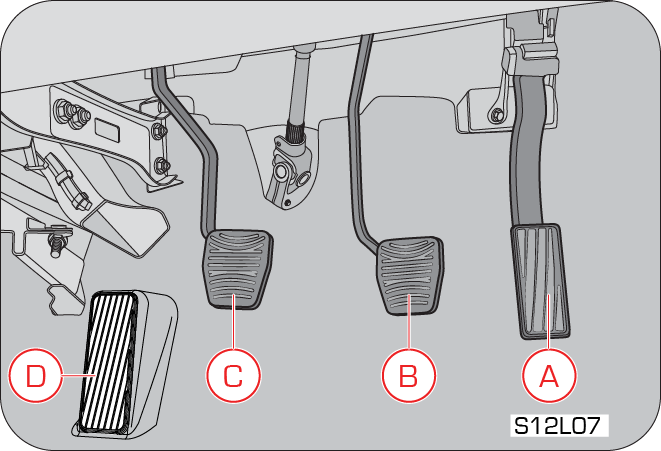
| A | Accelerator Pedal | B | Brake Pedal |
| C | Clutch Pedal | D | Dead Pedal |
Do not add any carpet below clutch pedal or carpet should have cut out below clutch pedal. This may cause,
- Incomplete disengagement of clutch which can result in intermittent gear shifting hard
- Reduction in clutch pedal reserve which can lead to clutch burning smell.
10.4 Starting the Engine
Make sure all vehicle occupants are properly seated in their seats and have buckled their safety belts. For more information on seat, headrest positioning, safety belts and their proper usage, refer to the “Seat Belts” section in this manual.
Before cranking the engine
- Make sure the gear shift lever is in neutral
- Make sure the parking brake is engaged. Turn the key to IGN position but do not turn the key to start
- Few warning lamps briefly illuminate. See “Warning Lamps in the Instrument Cluster” section for more information
- Shift the gear shift lever to neutral position.
When the vehicle is on gear, 90% of the clutch to be pressed for starting the engine.
- Apply parking brake.
- Turn the ignition ON.
- Do not press the accelerator.
- Turn the key momentarily to the START position to crank the engine
- Once the engine starts, release the key; it will return to the IGN position
Do not continue cranking after the engine has started. This will lead to damage of the starter and other engine components.
- If the engine fails to start, attempt to restart after about 10 seconds
- If the engine fails to start even after repeated attempts as per the procedure given above, contact the nearest Authorized Mahindra Dealer
To prevent damage to the starter, wait 10 seconds before attempting to restart the engine.
If the vehicle battery has discharged, use booster cables, a booster battery or a battery from another vehicle to start. Jump-starting a vehicle can be dangerous if done improperly. Refer to the “Jump-starting procedure” section in this manual.
If the engine still fails to start, contact an Authorized Mahindra Dealer for assistance.
The idle speed is controlled automatically and it will decrease as the engine warms up.
- All warning lamps are OFF
- Low oil pressure lamp is OFF
After idling for a few seconds, release the parking brake, depress the clutch, shift the gear shift lever to 1st gear, release the service brake pedal, drive by releasing the clutch and depressing the accelerator pedal simultaneously.
10.4.1 Engine Idling - In Cold Weather
Avoid full throttle operation when the engine is cold and prolonged idling at low ambient temperatures. Long periods of idling may be harmful to your engine. Combustion chamber temperatures can drop so low that the fuel may not burn completely. Incomplete combustion allows carbon and varnish to form on piston rings and injector nozzles. Also, the unburned fuel can enter the crankcase, diluting the oil and causing rapid wear to the engine.
10.5 Stopping the Engine
Before turning the engine OFF, always allow the engine to return to normal idle speed and run for few seconds. This assures proper cooling and lubrication of the turbocharger. This is particularly necessary after any hard driving.
To reduce the risk of personal injury, before leaving the vehicle turn OFF the engine and leaving the vehicle, always,
- Keep your right foot on the service brake pedal
- Turn front wheels towards the road curb
- Switch OFF the ignition, turn the key to the steering lock position and remove the key
- Firmly engage the parking brake
- Move the gear shift lever to 1st gear position (reverse gear if parking on an incline)
- Slowly release the service brake pedal
- Lock your vehicle when leaving
10.5.1 Over Speed Warning
When the vehicle crosses the preset speed value, buzzer alert will be audible for 4 seconds.
10.6 Manual Transmission
The first few shifts on a new vehicle may be somewhat notchy. This is a normal phenomenon, and smooth shifts will develop within the initial few hundred kilometers of running.
10.6.1 Gear Shift Lever
The gear shift lever shifts the transmission into various gears. The gearshift pattern is shown on the gear lever knob. The clutch pedal should be depressed fully while shifting, and then released slowly.
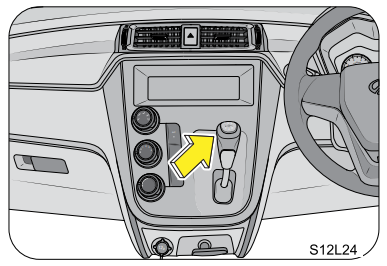
With the gear shift lever in neutral and brakes released, the vehicle can move freely by pushing or towing. The engine can be started in this mode. It is always recommended to keep the brake pedal depressed in this position. It is advisable to shift into neutral when the vehicle is at a standstill for longer durations with the engine idling.
Coasting the vehicle with the gear lever in neutral and engine ON/OFF is not recommended. The steering and braking will be very hard without power assist while coasting with the engine OFF. In an event of panic braking, you will not have the power of engine braking to slow down the vehicle. This may lead to personal injury or accident. With the gear in neutral and engine in idle the fuel efficiency will not be better. On the contrary, running downhill and allowing the wheels to drive the engine ( overrunning) will give engine braking and also improve the fuel efficency
Do not leave the vehicle with the gear shift lever in the neutral position. Always engage the manual parking brake before leaving the vehicle, to prevent any vehicle movement leading to possible injury to a bystander or damage to the vehicle.
For brief stops, e.g. at traffic lights, keep the gear shift in neutral and hold the vehicle with the brake pedal. For prolonged stops, it is recommended to switch OFF the engine and apply the parking brake.
- Do not leave children unattended in the vehicle or with access to an unlocked vehicle. Children could move the gear shift lever, which can result in an accident or serious injury
- On slippery/wet road surfaces, never downshift in order to obtain braking action. This could result in a wheel slip and reduced vehicle control
Forward — Use the gears 1 to 5 as per vehicle load, road/traffic conditions or as per requirement.
Reverse — This gear is to enable the vehicle to move in the reverse direction. Move the gear shift lever into this position only after the vehicle has come to a complete stop.
To avoid transmission damage, shift into or out of reverse gear only after the vehicle has come to a complete stop and the engine is at idle speed. It is recommended you wait approximately for three seconds in neutral gear before shifting into or out of the reverse gear.
To prevent the engine from laboring at a low RPM when driving uphill gradients or with your vehicle heavily loaded, downshift when necessary to maintain engine RPM within the best torque range. Similarly while driving downhill, downshift to utilize the engine braking in an optimum manner.
When stopping the vehicle on an uphill gradient, do not hold it with the clutch/ accelerator; use the brake to avoid unnecessary clutch wear/heat buildup. When parking on an incline, gear alone may not be sufficient to prevent the vehicle from moving. Always set the parking brake in addition to shifting the gear shift lever into gear. It is also recommended to turn the front wheels towards the curb.
10.6.2 Recommended Gear Shifting Speeds
Shift gears at suitable engine or road speeds to safeguard the transmission components. Avoid driving in high RPM’s (>3000 RPM).
Always depress the clutch fully before moving the gear shift lever from the current position to any desired position. Perform up-shifts or down-shifts one gear at a time, do not jump gears.
| Shift Range | Vehicle Road Speed (kmph) | Engine RPM Range |
| 1–2 | 20–25 | 1800–2600 |
| 2–3 | 30–35 | |
| 3–4 | 40-45 | |
| 4–5 | 50–55 |
| Shift Range | Vehicle Road Speed (kmph) | Engine RPM Range |
| 5–4 | 50-45 | 1700–1200 |
| 4–3 | 40-35 | |
| 3–2 | 30–25 | |
| 2–1 | 20–20 |
| Shift Range | Vehicle Road Speed (kmph) | Engine RPM Range |
| 1–2 | 15–20 | 1900–2500 |
| 2–3 | 25–30 | |
| 3–4 | 35–40 | |
| 4–5 | 45–50 |
| Shift Range | Vehicle Road Speed (kmph) | Engine RPM Range |
| 5–4 | 45–40 | 1700–1200 |
| 4–3 | 35–30 | |
| 3–2 | 30–25 | |
| 2–1 | 20–15 |
10.7 Driving Your Vehicle
10.7.1 General Driving Precautions
Always observe the following precautions to minimize the risk of accidents leading to serious personal injury or damage to your vehicle.
- Before you drive your vehicle, please read this manual carefully.
- Before you start driving, check proper operation of the brakes and steering system.
- If, while driving, you hear any strange noise or feel unusual vibration, or if you have any concerns whatsoever, or if any warning lamps illuminate or buzzers sound, park/stop the vehicle in a safe location as soon as possible. Identify the cause and take any necessary remedial action. Contact your Authorized Mahindra Dealer if necessary.
- Never overload or improperly load your vehicle.
- Always be attentive while driving and follow safe driving practices.
- Always maintain the recommended inflation pressure in tires.
- Always drive at a safe speed appropriate for given driving conditions. You must follow the speed limits.
- While backing up, keep a constant lookout for people, particularly children, or other obstructions or hazardous material that might be present behind the vehicle.
- Avoid loading any items on the roof that will raise the vehicles center of gravity and make your vehicle more unstable.
- Loaded vehicles, with a higher center of gravity, may handle differently than unloaded vehicles. Extra precautions, such as slower speeds and increased stopping distance, should be taken when driving a heavily loaded vehicle.
- Always slow down in gusty crosswinds. Because of its profile and higher center of gravity, your vehicle is more sensitive to side winds than an ordinary passenger car. Slowing down will allow you to have much better control.
- When driving off-road or on rugged terrain, do not drive at excessive speeds, jump, make sharp turns, strike objects, etc. This may cause loss of control or vehicle rollover causing serious injury. You are also risking expensive damage to your vehicle's suspension and chassis.
- Maintain steering wheel control at all times, especially on rough terrains. Sudden changes in terrain can result in abrupt steering wheel motion. Make sure you grip the steering wheel from the outside. Do not grip the spokes.
- If the vehicle goes from one type of surface to another (e.g. from concrete to gravel/sand/mud/snow) there will be a change in the way the vehicle responds, especially the way it responds to steering, braking and accelerating inputs.
- Be extremely careful when driving on pavements made slippery by loose sand, water, gravel, snow or ice.
- If your vehicle goes off the edge of the pavement, slow down, but avoid severe brake or steering application. Ease the vehicle back onto the pavement only after reducing your speed. Do not turn the steering wheel too sharply while returning to the road surface.
- It may be safer to stay on the apron or shoulder of the road and slow down gradually before returning to the pavement. You may lose control if you do not slow down or if you turn the steering wheel too sharply or abruptly.
- In an unavoidable emergency situation where a sudden sharp turn must be made, turn the steering wheel only as rapidly and as far as required to avoid the emergency. Excessive steering will result in less vehicle control. Additionally, smooth variations of the accelerator and/or brake pedal pressure should be utilized if changes in vehicle speed are called for. Avoid abrupt steering, acceleration or braking which could result in an increased risk of loss of vehicle control, vehicle rollover and/or personal injury. Use all available road surfaces to return the vehicle to a safe direction of travel.
10.7.2 Off Road Driving Precautions
- When driving off-road or on rugged terrains, never overspeed or make sharp turns. This may cause loss of control or vehicle rollover causing serious injury.
- Maintain steering wheel control at all times. Sudden changes in terrain can result in abrupt steering wheel motion.
- Do not drive horizontally or diagonally across steep slopes, your vehicle can tip over sideways. Driving straight up or straight down is preferred.
- Drive cautiously to avoid vehicle damage from concealed objects such as rocks and stumps. You should either know the terrain or map-out your route before driving in the area.
- Always perform a maintenance inspection after each day of off-road driving that has taken you through rough terrain, sand, mud or water.
10.7.3 Driving Through Water
Although your vehicle is capable of driving through shallow water, there are a number of precautions that must be considered before entering the water.
Never drive through still water that is higher than the bottom of the axle hubs. Not following this instruction will allow water to enter vehicle components causing internal damage to the components, affecting driveability, safety, emissions and reliability.
When driving through water, drive very slowly and at constant speed, less than 5 kmph. Water waves generated will be high and may enter air intake, causing severe engine damage or cause a vehicle to get stalled.
You must slow down while driving through shallow water. Speeding may cause water to splash onto the windshield, impairing your vision.
- The ground under the water might not be firm which could result the water being deeper than expected when driving the vehicle through it.
- Do not stop or shut OFF the engine while immersed in water. It helps in preventing water getting inside the exhaust pipes.
- When backing down a ramp, do not allow the exhaust tail pipe to immerse in water.
- Water can wash the grease from wheel bearings, causing rusting and premature failure. It may also enter the differentials, transmission and transfer case, reducing the oil's lubricating qualities. If these are submerged in water, the lubricants should be replaced as required.
- Water entering the transmission will cause deterioration in shift quality, locking up of your transmission accompanied by vibration, and ultimately damaging the transmission.
- Sand, mud/sludge that has accumulated in brake drums and around brake discs may affect braking efficiency. This may also damage brake system components. Wet brakes cannot stop the vehicle as effectively as dry brakes. Drying can be improved by driving the vehicle slowly while applying light pressure on the brake pedal.
- When driving through water, traction or brake capability may be limited. Always perform a maintenance inspection after each day of off-road driving that has taken you through water.
10.7.4 Flowing Water
If the water is swift flowing and rising (as in storm run-off) avoid crossing until the water level recedes and/or the flow rate is reduced.
The flowing water can erode the streambed causing your vehicle to sink into deeper water.
Determine the exit point(s) that are downstream of your entry point to compensate for drifting.
10.7.5 After Driving Off-road or through Water
Off-road operation puts more stress on your vehicle than does most on-road driving. Always perform a maintenance inspection after each day of off-road driving that has taken you through rough terrain, sand, mud, or water.
- After going off-road, it is always a good idea to check for damage. Completely inspect the underbody of the vehicle for any damages.
- Check for accumulations of plants or bushes. These could be a fire hazard. They might also hide damage to fuel lines, brake tubes/hoses, etc.
- Inspect all the tubes/hoses and check for any fluid leakages.
- Get heat exchangers (radiator and condenser) cleaned.
- Check threaded fasteners for looseness, particularly on the chassis, drive train components, steering, suspension and brakes. Retighten them, if required, and torque to the values specified in the ‘Repair Manual’.
- We also recommend that the vehicle be checked at the Authorised Dealer for any water entry into the transmission/ axle or the engine
Abrasive material in any part of the brakes may cause excessive wear or unpredictable braking. You might not have full braking power when needed leading to accidents. If you have been operating the vehicle in off-road conditions, get the brakes checked and cleaned as necessary.
- If any unusual vibration is experienced, check the wheels for impacted material. Impacted material can cause a wheel imbalance. Get it inspected/corrected as soon as possible.
- After driving through deep water, inspect your vehicle fluids and lubricants (engine oil, transmission/transfer case/axle oils) to ensure the fluids have not been contaminated.
10.8 Fuel
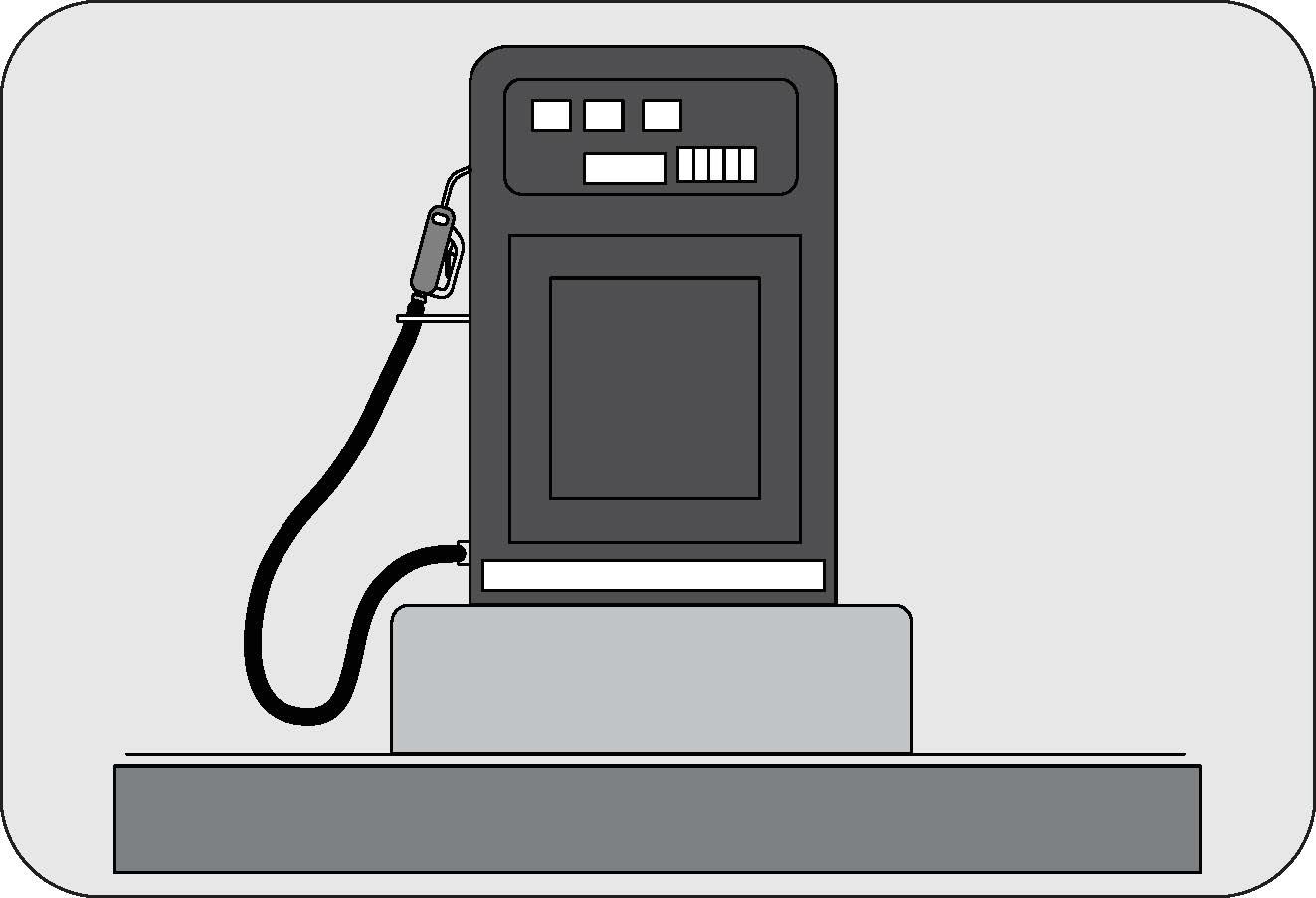
For Diesel variant - Use commercially available vehicular Ultra-low Sulfur Highway Diesel that meets the Indian Standard (IS 1460; 2010 BS IV specification or equivalent). Information on diesel quality can normally be found in the fuel pump. Please contact any filling station personnel in case labels in the pump cannot be found.
For Petrol variant - Use commercially available Petrol fuel confirming to Indian Standard (IS 2798; 2010 BS IV / BSIII specification or equivalent). Information on Petrol quality can normally be found in the fuel pump. Please contact any filling station personnel in case labels in the pump cannot be found.
Do not fill the fuel tank or mix the fuel with , alcohol based fuels, kerosene, etc. This will damage the engine, fuel and exhaust system components.
If you have accidentally filled the fuel tank with an incorrect or non-approved fuel, do not start the vehicle. Contact an Authorized Mahindra Dealer to have the fuel system drained completely.
During freezing weather if the fuel is not winterized or is insufficiently winterized, waxing/gelling may take place in the fuel, leading to interruption in fuel supply to the engine. For smooth functioning and reliable operation of the engine during cold weather conditions, use winterized ULSD which is available at the filling stations during winter months. Check with your fuel retailer for further details.
Avoid inhaling fuel vapors and any skin or clothing contact. Direct skin contact with diesel/Petrol or the inhalation of fuel vapor may affect your health.
It is recommended maintaining a minimum of 10 liters of fuel in the fuel tank. Driving the vehicle till the fuel tank is empty is not recommended. Always have sufficient fuel in the tank. Check the fuel level prior to starting your journey.
Never carry fuel in separate containers in the vehicle, it is dangerous and may lead to an inadvertent fuel leak or spillage.
10.8.1 Fuel-Lid Opening and Closing
The fuel-lid can be opened by the lever located at the foot of the driver seat. Lift the lever up firmly to open.
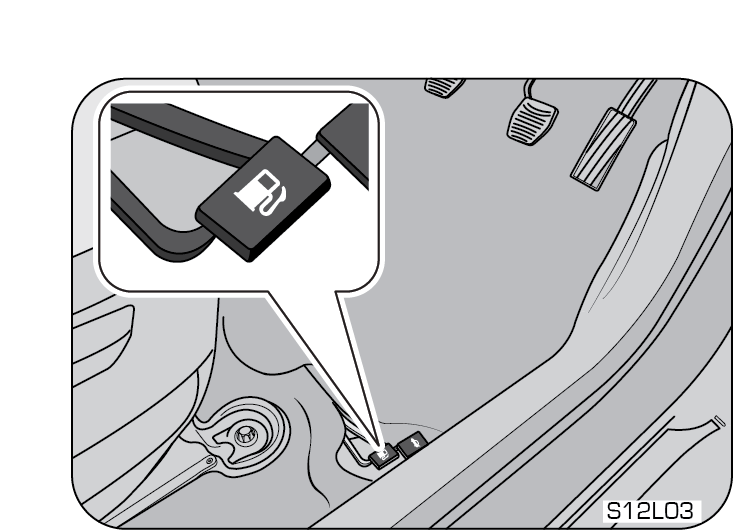
Turn the fuel cap counter-clockwise to open. Refuel and put the cap back in its place and tighten in the clockwise direction till three distinct clicks are heard. Close the fuel lid shut.
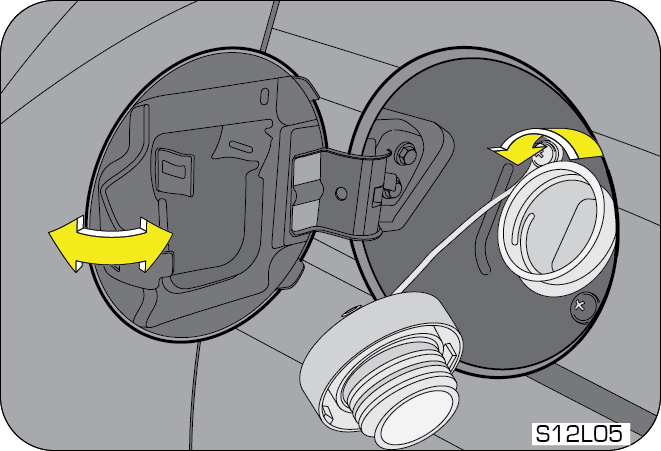
Ensure the fuel cap and lid are securely closed before starting the vehicle.
CNG refilling valve is located near the Petrol filling port.

Remove the dust plug of refilling valve for filling the CNG. Reinstall the dust plug after refueling.
Ensure the vehicle is switched OFF before refuelling. If the engine is running and fuel lid is open, vehicle will be switchedOFF automatically.
If the dust plug is not properly reinstalled there will be no gas flow and the engine will not start.
If the fuel filler lid is not closed properly the engine will not start and “Check Engine” Lamp glows
10.8.2 Fuel Mode Switch (Bi-Fuel)
The fuel mode switch is located on the driver panel switch bank. Press the switch gently once to switch between three modes.
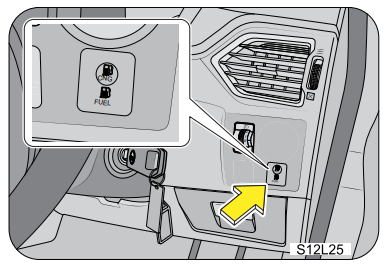
The vehicle starts in petrol mode and automatically changes to CNG mode after a few seconds. When the vehicle is started in Auto mode, the CNG indicator blinks on the cluster and petrol indicator is ON in the cluster.
Once after the change over to CNG, the petrol indicator will switch OFF and the CNG indicator will be continuously ON in the cluster.
The starting and running of the vehicle will be in Petrol mode. During this mode the only Petrol indicator is displayed in the cluster.
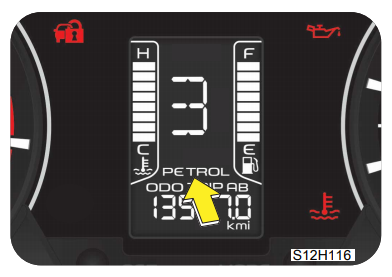
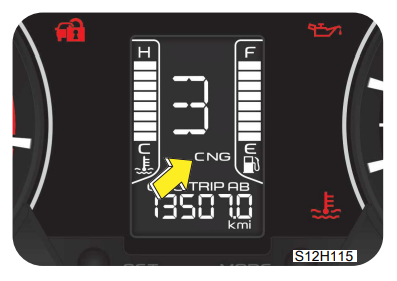
This mode is used when there is no petrol available in the petrol tank. The vehicle starts and continuous to run in CNG mode
Press the changeover switch continuously for few seconds after ignition ON till CNG mode is displayed in the cluster. Now the vehicle will start in CNG mode.
The Forced CNG mode is allowed only for 20 times. Then vehicle has to run in petrol for minimum 10 kms. After that forced CNG mode is allowed for another 20 times.
Still if the vehicle has to run in forced CNG mode, it has to be taken to Dealership for resetting the value.
10.8.3 CNG TANK (Bi-Fuel)
CNG fuel tank with 60 litres capacity is located behind the second row seat.
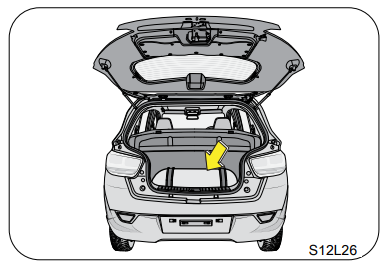
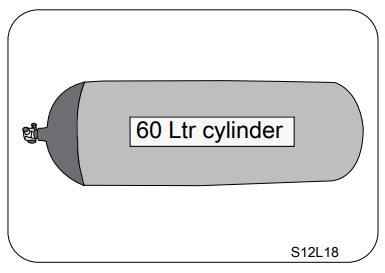
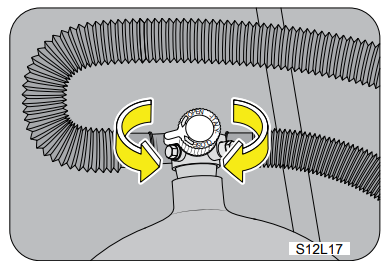
The manual shutoff valve of the tank can be accessed by opening the tailgate. Turn clockwise to close and counter clockwise to open the shutdown valve.
Close the shutoff valve in the CNG tank when the vehicle is halted over night or any gas leak from the CNG system
Incase of gas leakage, immediately turn OFF CNG cylinder shutoff valve and Contact Authorized Dealer.
Ensure there is no load over the cylinder to avoid damage to the CNG components.
10.9 DO’S AND DONT’S (Bi-Fuel)
- Incase of gas leakage immediately turn OFF CNG cylinder shutoff valve and Contact Authorized Dealer.
- Ensure the tight fitment of dust plug on filler valve to avoid gas flow cut-off
- Do empty the CNG tank and remove when the vehicle is taken to body repairs.
- If any service turn OFF the cylinder shutoff valve prior to repair work.
- Test the CNG cylinders every 3 Years by Authorized Government Testing Agency.
- Ensure the gas vent out to the atmosphere in case of any leakage.
- Ensure to switch OFF the engine while filling Petrol/CNG.
- Ensure the fuel filler lid is closed to start the engine.
- Incase the vehicle does not change over to CNG in Auto mode Contact Authorized Mahindra Dealer
- Ensure the availability of fire extinguisher in the vehicle at any time.
- Use only tested/approved genuine CNG parts.
- Do not fill cylinder above 200 bar pressure.
- Do not open pressure regulator/CNG components at your own.
- Do not retro fit CNG components.
- Do not keep any inflammable items near the CNG system.
- Do not allow to smoke while refilling CNG.
- Do not use any accessories in gas kit.
- Do not allow unauthorised/untrained person to repair or tune the CNG system.
- Do not use any other gas or refill with domestic LPG.
- Avoid short circuit of electrical connections.
- Never discharge CNG gas in public/prohibitted/closed area.
- Do not smoke inside the cabin.
10.10 Tips for Better Fuel Economy
Give due consideration to the points listed below for better performance of vehicle and enhancement of fuel economy.
- Smooth, moderate operation will yield savings in fuel
- Steady speeds without stopping will usually give the best fuel economy
- Ensure that the parking brake is fully released
- Idling for long periods of time will waste fuel
- Anticipate stopping; slowing down may eliminate the need to stop
- Sudden or hard accelerations reduce fuel economy
- Slow down gradually
- Drive at moderate speeds
- Revving the engine before turning it off may reduce fuel economy
- The air conditioner may reduce fuel economy
- Warming up a vehicle in neutral on cold mornings is not required and may reduce fuel economy
- While idling put the gear shift lever in the neutral position
- Resting your foot on the clutch pedal while driving will reduce fuel economy
- Combine errands and minimize stop-and-go driving
- Keep tires properly inflated. It is recommended to check your tire pressure in the morning when the tyre is cold
- Use recommended engine oil. Refer to the Maintenance Section for specifications and capacities
- Replace the fuel filter and air filter at the recommended intervals
- Shift gears at the recommended speeds and rpm bands only. Refer to the gear shifting speed table for further details
- Control the maximum speed between 90 to 100 kmph in 5th gear to achieve the best fuel efficiency
- Follow the recommended maintenance schedule and perform the owner maintenance checks recommended
- Heavily loading a vehicle or towing a trailer will reduce fuel economy
- Carrying unnecessary weight may reduce fuel economy
- Adding certain accessories to your vehicle may reduce fuel economy
- Four-wheel-drive operation (if equipped) is less fuel efficient than two-wheel-drive operation
- Driving on flat terrains offer improved fuel economy as compared to driving on hilly terrains
- Close windows during high speed driving for better fuel economy
- It is recommended to refuel in the mornings (cold weather condition)
10.10.1 How to Calculate Fuel Efficiency (Mileage)
- Ensure recommended tire pressure is maintained
- Refuel your vehicle till the fuel gun at the fuel station is auto-cut-off
- Reset trip meter to zero
- Drive at a moderate speed for a minimum distance of 150 km
- Refuel at the same fuel station till the auto-cut-off mode
- Assuming ‘a’ liters of fuel was filled and ‘b’ was the trip meter reading. Fuel Efficiency = b/a kmpl
- We recommend that point no.2 and point no.5 should be done in cold conditions (In mornings)
11 WHEELS AND TYRES
11.1 Tyre Information
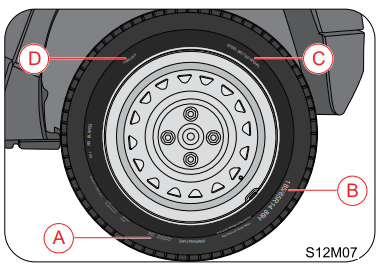
| A | Max Load Limit |
| B | Tyre Size |
| C | Radial tyres or bias-ply tyre - A radial tyre has “RADIAL/ STEEL BELTED RADIAL” on the sidewall. A tyre not marked with “RADIAL” is a bias-ply tyre. |
| D | “TUBELESS” or “TUBE TYPE” - A tubeless tyre does not have a tube inside the tyre and air is directly filled in the tyre. A tube type tyre has a tube inside the tyre and the tube maintains the air pressure. |
11.2 Tyre Rating
Your vehicle is originally equipped with tyres supplied by a reputable manufacturer. If you ever have any questions regarding your tyres, please refer to literature supplied by the tyre manufacturer, or to the separate tyre warranty provided by the tyre manufacturer. You may also contact Mahindra directly, or the tyre manufacturer.
The tyre rating of your vehicle is;
- 185/65 R14 86 T
Tyre rating is explained as below;
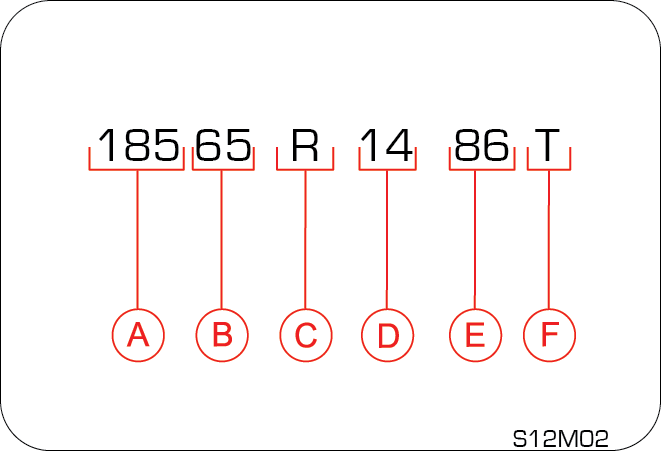
(A):185 (Three-digit number):This number gives the width in millimeters of the tyre from sidewall edge to sidewall edge. This is called ‘Section Width’.
(B):65 (Two-digit number):This number, known as the aspect ratio, gives the tyres ratio of height to section width.
(C):R This is the tyre Construction Code. The ‘R’ stands for Radial.
(D):14 (Two-digit number):This number is the wheel or rim diameter in inches.
(E):86(Two or three digit number):This number is the tyres load index. It is a measurement of how much weight each tyre can support.
(F):T tyre speed rating or speed symbol. Never drive the vehicle faster than the tyre speed rating. The speed rating denotes the speed at which a tyre is designed to be driven for extended periods of time under a standard condition of load and inflation pressure. The ‘H’ stands for MRF. The ‘T’ stands for Bridgestone.
11.2.1 Speed Rating
| SPEED SYMBOL | MAX SPEED CAPABILITY | SPEED SYMBOL | MAX SPEED CAPABILITY |
|---|---|---|---|
| KM/HR | KM/HR | ||
| L | 120 | T | 190 |
| M | 130 | U | 200 |
| N | 140 | H | 210 |
| P | 150 | V | 240 |
| Q | 160 | W | 270 |
| R | 170 | Y | 300 |
| S | 180 | Z | 240+ |
11.3 Tyre Label (Vehicle Placard)
The tyre Label (Vehicle Placard) is located on the driver door B pillar inner edge/face. This placard gives you important information about the tyre size designed for your vehicle, and the tyre inflation pressures for the front and rear tyres.
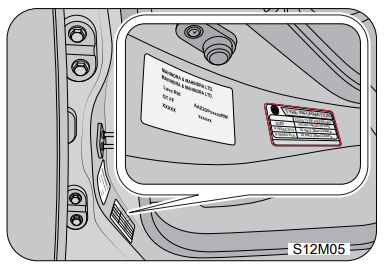
| Tyre Size | Tyre Pressure — Bar (psi) | ||
| Front | Rear | ||
185/65 R14 |
Laden | 2.2 (32) | 2.2 (32) |
185/65 R14 |
Unladen | 2.2 (32) | 2.2 (32) |
Never overload your vehicle. Overloading can cause tyre failure, affect vehicle handling, and increase your stopping distance, resulting in an accident and/or personal injury.
Improperly inflated tyres can adversely affect vehicle handling or can fail unexpectedly, resulting in an accident and/or personal injury.
11.4 Tyre Pressure
Proper Tyre inflation pressure is essential to the safe and satisfactory operation of your vehicle. Three primary areas are affected by improper tyre pressure;
- Safety
- Economy
- Ride Comfort and Vehicle Stability
Proper tyre inflation contributes to a comfortable and safe ride. Overinflating produces a jarring and uncomfortable ride. Both underinflation and over inflation affect the stability of the vehicle; induce the perception feeling of hard steering or over responsiveness in the steering. Unequal tyre pressures can cause erratic and unpredictable steering response or may cause the vehicle to drift left or right and uncomfortable ride.
Improper inflation pressures can cause uneven wear patterns to develop across the tyre tread. These abnormal wear patterns will reduce tread life resulting in a need for earlier tyre replacement. Underinflation also increases tyre rolling resistance and results in higher fuel consumption.
The proper cold tyre inflation pressure is listed in the tyre Label (Vehicle Placard), located on the front passenger side inner B-pillar.
11.4.1 Inspection and Adjustment Procedure
The tyre pressure should be checked and adjusted, as well as inspected for signs of tyre wear or visible damage, at least once a month. Use a good quality pressure gauge to check tyre pressure. Do not make a visual judgement when determining proper inflation. Radial tyres may look properly inflated even when they are underinflated. At the same time, each tyre should be inspected for signs of tyre wear or visible damage.
Inflation pressures specified on the placard are always cold tyre inflation pressures.It is better to check the tyre pressure in morning when the vehicle is not driven for more than 1 to 2 Km. Cold tyre inflation pressure is defined as the tyre pressure after the vehicle has not been driven for at least three hours, or driven less than 1 km after a three-hour period. Check tyre pressures more often if subject to a wide range of outdoor temperatures, as tyre pressures vary with temperature changes. tyre pressures change by approximately 1 psi (7 kPa) per 7°C of air temperature change. Keep this in mind when checking tyre pressure inside a garage, especially in the winter.
When it was new, the spare tyre in your vehicle was fully inflated. However, a spare tyre can lose pressure over time. In order to avoid getting stranded, check the spare tyre air pressure frequently.
11.4.2 Inflating Your tyres
Safe operation of your vehicle requires that your tyres are properly inflated. Remember that a tyre can lose up to half of its air pressure without appearing flat.
At least once a month or before long trips, inspect each tyre and check the tyre pressure with a tyre gauge (including spare tyre). Inflate all tyres to the recommended inflation pressure.
Tyres with correct pressure help in improving the fuel efficiency. Besides improving the tyre life
Underinflation is the most common cause of tyre failures and may result in severe tyre cracking, tread separation or “blowout”, with unexpected loss of vehicle control and increased risk of injury. Underinflation increases sidewall flexing and rolling resistance, resulting in heat buildup and internal damage to the tyre. It also may result in unnecessary tyre stress, irregular wear, loss of vehicle control and accidents.
Always inflate your tyres to the recommended pressure even if it is less than the maximum inflation pressure information found on the tyre. The recommended tyre inflation pressure is found on the tyre Label which is located on the front passenger side inner B-pillar. Failure to follow the tyre pressure recommendations can cause uneven tread wear patterns and adversely affect the way your vehicle handles.
If you overfill the tyre, release air by pushing the metal stem in the center of the valve. Then recheck the pressure.
After inspecting or adjusting the tyre pressure, always reinstall the valve stem cap (if equipped). This will prevent moisture and dirt from entering the valve stem, which could damage the stem, resulting in an unexpected loss of tyre pressure, an accident and/or personal injury.
11.4.3 Radial Ply tyres
Combining radial ply tyres with other types of tyres on your vehicle will cause your vehicle to handle poorly, resulting in an accident and/or personal injury. Always use radial tyres in sets of four. Never combine them with other types of tyres.
Cuts and punctures in radial tyres are repairable only in the tread area because of sidewall flexing. Consult your authorized dealer for radial tyre repairs.
11.4.4 Tread Wear Indicators (TWI)
Tread wear indicators are molded into the bottom of the tread grooves. They will appear as bands when the tread depth becomes 1/16 inch (1.6 mm). When the indicators appear in two or more adjacent grooves, the tyre should be replaced.
Avoid abrupt maneuvering and braking. This can cause tyre deterioration and lead to loss of steering or braking control.
11.4.5 Life of tyre
The service life of a tire is dependent upon various factors including but not limited to;
- Driving style
- tyre pressure
- Distance driven
tyres and the spare tyre should be replaced after six years, regardless of the remaining tread. Failure to follow this warning can result in sudden and unexpected tyre failure, leading to an accident and/or personal injury.
Keep dismounted tyres in a cool, dry place with as little exposure to light as possible. Protect tyres from contact with oil, grease and fuels.
Do not use a tyre, wheel size or speed rating other than that specified for your vehicle on the tyre placard. Combinations of unapproved tyres and wheels may change suspension geometric and performance characteristics, resulting in changes to steering, handling and braking of your vehicle. This can cause unpredictable handling, stress to steering and suspension components. You could lose control of the vehicle or the tyre can unexpectedly fail, resulting in an accident and/or personal injury.
Replacing original tyres with tyres of a different size may result in false speedometer and odometer readings.
11.4.6 Snow Chains
Snow chains cannot be used on these tyres.
In case of harsh winter driving conditions, it is recommended using winter tires with the same specifications for better stability, safety and performance.
11.5 Tyre Rotation Recommendations
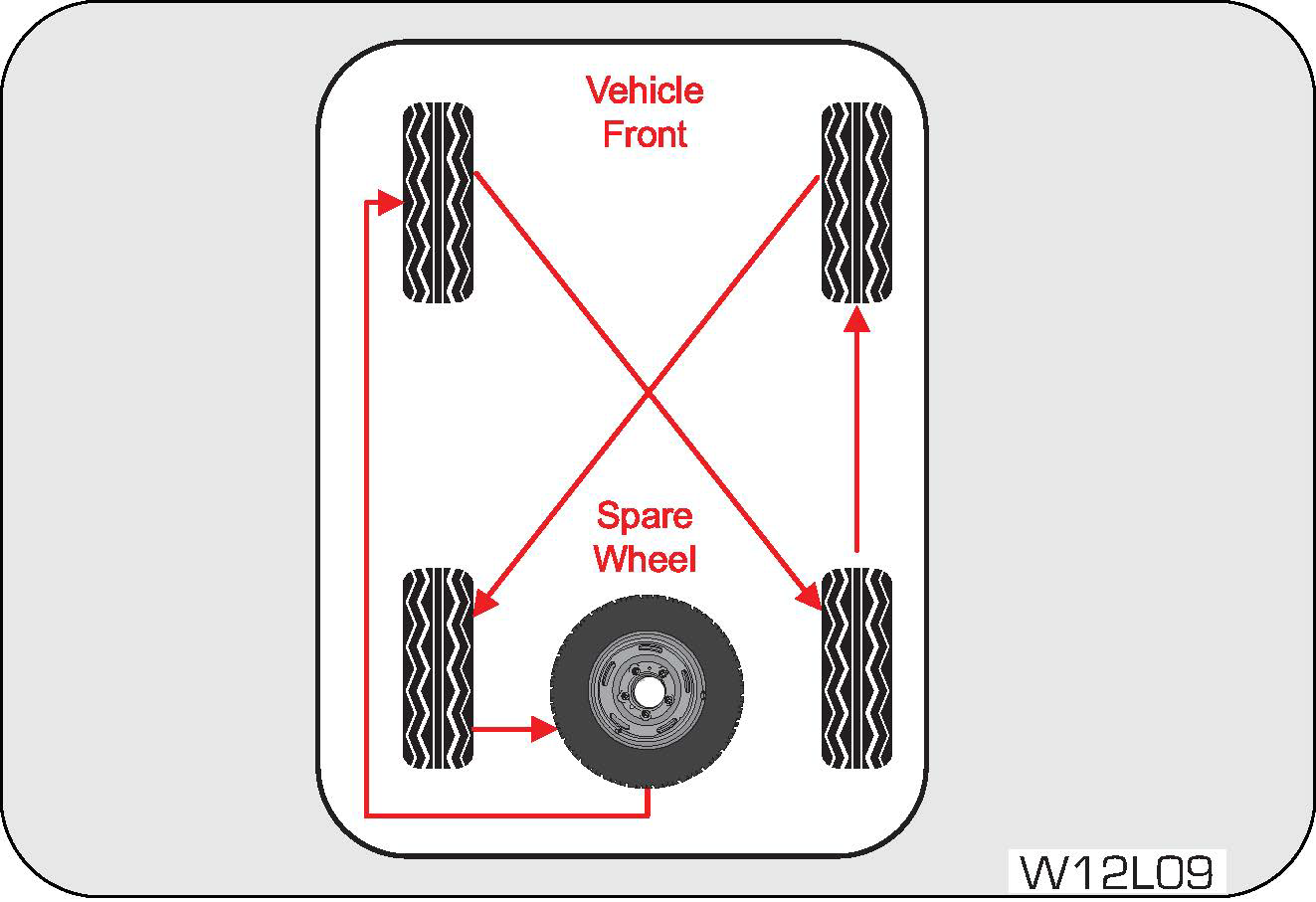
Tyres on the front and rear axles of vehicles operate at different loads and perform different steering, handling, and braking functions. For these reasons, they wear at unequal rates and develop irregular wear patterns.
Rotation will increase tread life, help to maintain mud, snow, and wet traction levels, and contribute to a smooth, quiet ride. Follow the recommended tyre rotation frequency for your type of driving.
11.5.1 Changing a Flat tyre
Refer to “If you have a Flat tyre” section in the general chapter for details.
11.5.2 Wheel Tightness
When you change a wheel, remove all rust and dirt at all locations where the wheel contacts the wheel hub. Use a scraper or wire brush to be sure that you remove all rust and dirt. A loose wheel could have damaged or elongated the holes in the rim, or damaged the rim/hub assembly. If any of the wheel studs or nuts are damaged, contact the nearest Authorized Mahindra Dealer.
Always tighten the bolts in a crisscross sequence. Never use oil or grease on your wheel bolts.
Never over tighten the bolts on the wheel Hub. You could damage the bolt or the hub.
Torque tighten the wheel bolts to the specified value at the nearest Authorized Mahindra Workshop.
The tyres fitted in this vehicle meet the requirements of BIS and they comply with the requirements under the Central Motor Vehicles Rules (CMVR) 1989.
12 EMERGENCIES
12.1 Hazard Warning Lamp
The hazard warning lamp switch is located in between the two AC center vents on the instrument panel. Use the hazard warning lamp when your vehicle is stationary or to warn other road users to be cautious while passing your vehicle.
To turn the hazard warning lamp ON, press the switch in. All the turn signal lamps flash. To turn OFF, press the switch again.
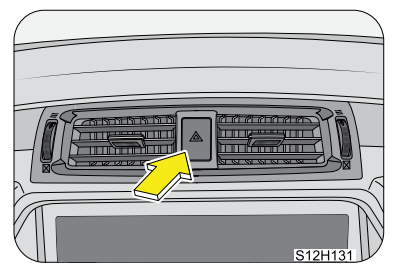
The turn lamps do not work when the hazard warning lamps are operational.
Hazard lamps are also switched ON during the following conditions;
- Crash — Hazard would be turned on for 30 mins
- Panic Braking — When the vehicle is running above 100 kmph and panic/sudden brakes are applied, hazard will turn on for 5 sec
- Vehicle break down warning bonnet open — The vehicle break down warning would be enabled only when bonnet switch changes from close to open condition at vehicle unlocked condition
Pressing the hazard switch twice deactivates this feature.
12.2 Fire Extinguisher (Bi-Fuel)
Fire extinguisher is located below the co passenger seat. Whenever there is a emergency or fire remove the lock lever bracket and access the fire extinguisher.

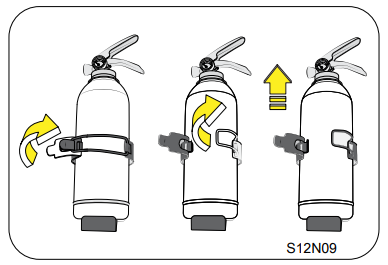
Lift the lock lever upward to release the lock and disengage the clamp
Remove the fire extinguisher.
Usage of fire extinguisher is pasted on the top of the fire extinguisher cylinder.
Always keep fire extinguisher in the vehicle.
Always refill the fire extinguisher as recommended by the manufacturer.
Inspect the fire extinguisher periodically as per the manufacturer recommendation.
12.3 Vehicle Does Not Start - Checks
Before making these checks, make sure you have followed the correct starting procedure and that you have sufficient fuel.
- Check that the battery terminals are tight and clean.
- If the battery terminals are firmly fastened, switch ON the interior lamps.
- If the lamps do not illuminate, glow dim or go OFF when the starter is cranked, then it indicates a weak or discharged battery. Try jump starting. Follow ‘Jump starting’ instructions given later in this chapter.
- Check the fuses in the Engine Compartment Fuse Box and Central Fuse Box.
- If the lamp illumination is normal, engine is cranking normally, but the engine does not start even after repeated cranking, it needs adjustment or repair. Contact an Authorized Mahindra Dealer.
- During winter, use non-winter diesel or due to extreme cold conditions, the vehicle may not start. Contact an Authorized Mahindra Dealer for further assistance.
To prevent damage to the starter, do not crank the engine for more than 15 seconds at a time. Wait 10 to 15 seconds before trying again.
Reduce your speed gradually, keeping a straight line. Move cautiously off the road to a safe place. Turn ON your hazard warning flashers and check for any malfunction lamps in the instrument cluster. Turn the ignition OFF, wait for approximately 90 seconds and try starting the engine again. If the vehicle still does not start contact an Authorized Mahindra Dealer.
If the engine stalls while running, the power assist for the brakes and steering will not work. Steering and braking will be much harder than usual.
If the engine speed does not increase when the accelerator pedal is depressed, there may be a problem in the Engine Management System, electrical or electronic controls. In case of certain faults, the engine may go to limp home mode, which is indicated by the check engine lamp. Have your vehicle checked by an Authorized Mahindra Dealer as soon as possible.
12.4 Vehicle Overheating
If the needle in the temperature gauge in the instrument cluster is all the way up to the H and/or the high engine coolant temperature warning lamp is ON, your engine has overheated.
If the engine is getting overheated, the Engine Management System reduces engine power substantially and may even shut the engine OFF; it is dangerous to continue driving when the engine has overheated. You need to first cool the engine down before starting to drive again.
Follow the below instructions to cool the engine down
- Progressively reduce the vehicle speed and bring the vehicle to a stop at the side of the road
- Turn ON the hazard warning flashers
- Keep the engine running at idle
- Engage the parking brake
- Switch off the air conditioner
- Wait till the engine coolant temperature drops sufficiently such that the needle in the temperature gauge is around halfway between C and H
Now switch the engine OFF and carefully open the bonnet/hood to visibly inspect the engine cooling system parts. Be cautious while doing an inspection as vehicle parts will still be too hot. Verify that the engine coolant level in the coolant recovery tank is maintained between the 'Min' and 'Max' mark. Check for possible fluid leakages. Check for damages to heat exchangers and connecting hoses. Also verify that the radiator shrouds, engine fan blades and the engine belt all are in good condition.
If any evidence of failure is observed, contact the nearest Authorized Mahindra Dealer for help. In case, no system leakage/ failure is suspected, driving can be continued.
Either due to severe operating conditions or due to any system leakages or failures, the engine can get overheated. However if the engine is getting overheated repeatedly, even in normal operating conditions, get the vehicle checked by an Authorized Mahindra Dealer as soon as possible.
Refer to the 'High Engine Coolant Temperature' section under the 'Features and Control' chapter for details.
If the high engine coolant temperature warning is ignored, the engine shuts OFF abruptly to safeguard engine components from overheating and consequent failure. Abrupt engine shut-off can lead to uncontrollable driving condition and accidents.
Stay clear of hot and rotating vehicle parts while visually inspecting the vehicle. The coolant inside the cooling system is under high pressure and temperature. Never open the pressure cap of the degassing tank when the engine is hot. Not taking precautions may lead to serious injury to your skin/eyes.
For optimum performance of the cooling system you must maintain the required coolant level and use only recommended engine coolant.
12.5 Jump Starting
If your vehicle's battery has run down, you may be able to start the engine by using a standalone booster battery or a vehicle with a good condition battery.
But before going ahead with this procedure ensure that the battery is the cause of vehicle not starting. To confirm this, few simple tests can be conducted as follows;;
- Check the headlights - Are they dim or bright? If they are dim, it's likely your battery is dead. If your headlights are bright, you do not have a dead battery and a jump start may not help
- Try to start your vehicle -Does it turn over very slowly, or does it crank quickly? If it cranks quickly, you do not have a dead battery and a jump start may not help. If it cranks slowly, or not at all, you probably have a dead battery
- The positive terminal will be marked with a plus sign (+) and will usually have a RED cable attached on it.
- The negative terminal will be marked with a minus sign (-) and will usually have a BLACK cable attached to it
-
Park the working vehicle near the disabled vehicle. Park the vehicle in such a way that the distance between both vehicle batteries is as small as practical. Turn off the engine, radio, lights, A/C, fans and all other electrical components. Make sure that all of these things are OFF in the disabled vehicle, too
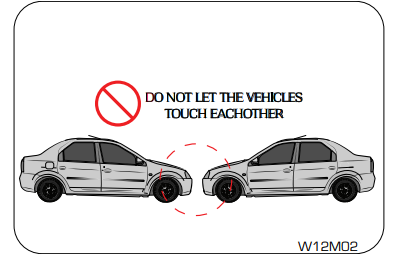
Don't let the vehicles touch each other.
-
Wear safety gear (goggles or face guard and gloves) if you have it.
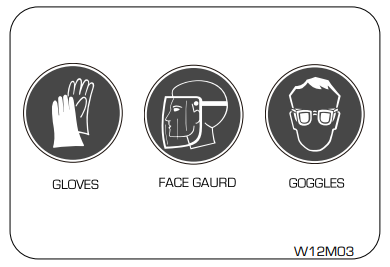
It may be necessary to remove the disabled vehicle’s battery cables from the battery terminals and clean both cables and terminals. Use a stiff wire brush to remove all corrosion. Reconnect the cables to the battery terminals and jump the vehicle.
-
Untangle and unwind your jumper cables. Like your batteries, your jumper cables will probably have red and black cables and will have heavy duty clamps to connect to the battery terminals. You must make sure that the red and black ends of your jumper cables never touch each other once they are connected to the batteries; permitting them to do so can result in serious arcing and/or damage to one or both vehicles
-
Connect the jumper cables in the order described below;
- Connect one red clamp to the positive (+) terminal of the dead battery/disabled vehicle
- Connect the other red clamp to the positive (+) terminal of the good battery
- Connect one black clamp to the negative (-) terminal of the good battery
- Connect the other black clamp to a piece of grounded metal on the dead vehicle, preferably shiny metal (not painted or oily) that is attached to the engine. Usually a nut, bolt or other protruding shiny metal will work. You may see a small spark when you connect to a good ground. As a last resort, you may connect to the negative (-) post of the dead battery, but this risks igniting hydrogen gas coming off the battery
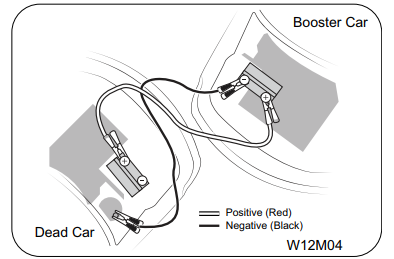
Make sure none of the cables are dangling into the engine compartment, where they could be exposed to moving parts.
- Start the working vehicle. Let it idle for a few minutes. Rev the engine a little above idle for 30 to 60 seconds. You do this to charge the battery in the dead vehicle. A good clean connection between the battery cables and the battery terminals is essential
- Try to start the disabled vehicle. If it does not start, shut the engine off and disconnect the last connection temporarily while you slightly twist or wiggle each of the four clamps to help ensure a good electrical connection. Restart the working vehicle again. Allow another 5 minutes for charging before attempting to start the disabled vehicle. If this does not work after a few tries, you may need to have the vehicle towed or the battery replaced
-
Remove the jumper cables once the vehicle starts. Do this in the reverse of the order in which they were attached, and don't let any of the cables or clamps touch each other (or dangle into the engine compartment)
- Disconnect the black clamp from the grounded metal on the dead vehicle
- Disconnect the black clamp from the negative (-) terminal of the good battery
- Disconnect the red clamp from the positive (+) terminal of the good battery
- Disconnect the red clamp from the positive (+) terminal of the dead battery
Replace any positive (+) red post protective covers if applicable (You have had to remove or open these in the beginning) These covers help prevent accidental short circuiting of the battery
-
Keep the recently-disabled vehicle's engine running. Run the vehicle above idle (slightly revved up with your foot on the accelerator). This should give the battery enough charge to start the vehicle again. If it does not, you probably have a dead battery or a dying alternator
Improper jump starting procedures can result in battery explosion and acid burn hazard.
Loosely connected battery cables could damage the electronic control units.
To disconnect battery terminals wait for at least 2 minutes to allow discharge of high voltage or it could lead to personal injury.
While disconnecting, always disconnect the -VE terminal first and while connecting, always connect the -VE terminal last.
Do not connect battery terminals with opposite polarity, it will lead to alternator failureTowing a vehicle to start could be dangerous. The vehicle being towed could surge forward when the engine starts, causing the tow vehicles to collide, injuring the occupants.
Modern vehicles with electronic management systems should not be jump started without ‘protected’ jump starter leads. It is necessary to refer to the owner's handbook for jump starting procedures for such vehicles.
Open the bonnet and locate the battery (near the left side fender). Identify the positive and negative terminals.
Check the physical condition of the battery. Inspect batteries for cracks, leaks or any other damage. If you find any of these things, do not jump start the vehicle. Call Mahindra Road Side Assistance or replace the battery. If the weather is very cold, remove the refill caps and check the condition of the electrolyte. If it seems slushy or like ice, do not attempt jump-starting until it thaws.
12.6 Towing
12.6.1 Towing Equipment
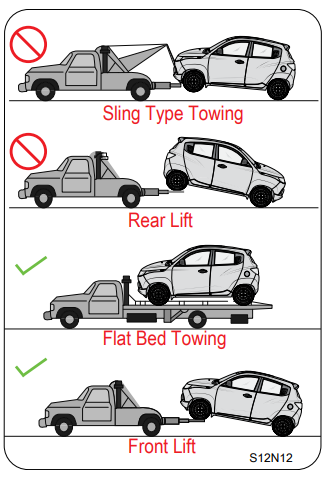
Towing equipment are of two types.
- Flat-bed equipment - Your vehicle is loaded on the back of a truck. This is the safest and best way of towing.
- Rear-lift equipment - The tow truck uses two pivoting arms that go under the tires (front or rear) and lift them off the ground. The other two tires remain on the ground.
- Sling-type equipment - The tow truck uses metal cables with hooks on both ends. These hooks go around parts of the frame or suspension and lift the end of the vehicle off the ground. This is not a good method of towing as it may damage the vehicle's suspension and body. Avoid a tow with sling type equipment
12.6.2 Towing your Vehicle During Emergency
If your vehicle needs to be towed, call a professional towing service. If a towing service is unavailable in an emergency, your vehicle may be temporarily towed by a cable or chain secured to the emergency towing hook screwed into the front towing eyelet. The tow eye is in the tool kit organiser above the spare wheel
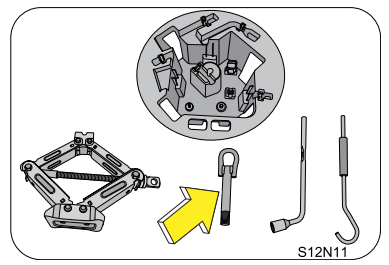
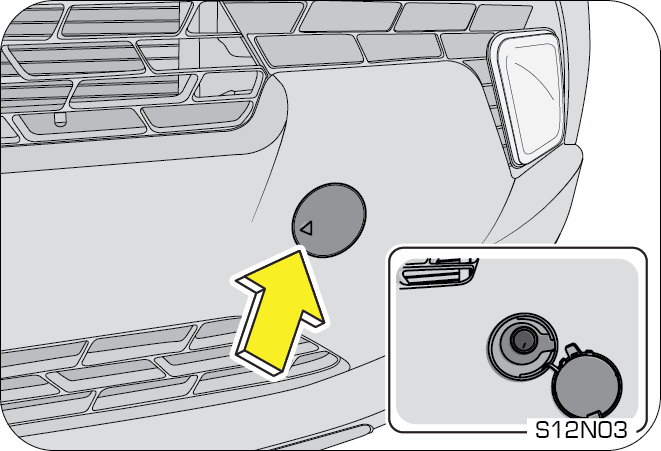
For removal of the tow hook cap, press on the triangle mark over the cover using your thumb. Remove the cap, screw in the tow hook and tighten clockwise. Fasten a cable or chain specifically intended for use in towing vehicles to the towing hook.
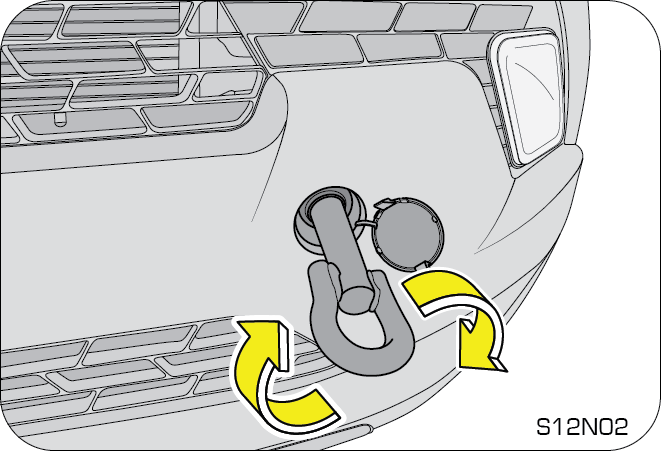
Use only the towing hook provided, for towing in an emergency. Do not tow by the bumper or any other part which may be damaged.
Use only the cable or chain specifically intended for use in towing vehicles.
A driver must be in the vehicle being towed to steer and operate the brakes. Towing in this manner must be done only on hard-surfaced roads for short distances and at low speeds. Also, the wheels, axles, drive train, steering and brakes must all be in good working condition.
Avoid sudden starts or erratic driving maneuvers, which would place excessive stress on the towing hook and towing cable or chain, resulting in breakage of the hook or the chain.
If the engine is not running, the power assist for the steering and brakes will not be functional, making it harder to steer or brake than usual.
When lifting the rear wheels, take care to ensure adequate ground clearance for towing at the front end of the raised vehicle. The bumper and/or underbody of the vehicle may be damaged during towing.
12.7 Limp Home Mode
Limp home mode is an emergency situation declared by the EMS (Engine Management System) due to failure of one/more critical sensors/actuators. In this mode, the EMS (Engine Management System) will revert back to basic minimum requirement (fuel quantity / injection timings) to aid the driver to bring the vehicle back to the nearest workshop. Needless to say the drivability & fuel consumption will be greatly affected.
If vehicle acceleration worsens or if there is a drop in vehicle performance, there might be a malfunction in the engine management system which triggers/activates the Limp Home Mode. This condition is accompanied by the check engine lamp illuminating in the instrument cluster. In this mode, the vehicle speed is limited and the accelerator pedal may not function normally. It is recommended you contact an Authorized Mahindra Dealer immediately for assistance.
13 MAINTENANCE
13.1 General Owners Information
Your vehicle has been designed for fewer maintenance requirements with longer service intervals to save both your time and money. However, each regular maintenance, as well as day-to-day care is more important to ensure a smooth, trouble free, safe and economical operation.
It is the owner's responsibility to make sure the specified maintenance, including general maintenance service is performed. Note that both the new vehicle limited warranty and emission control system limited warranties specify that proper maintenance and care must be performed. See Service Coupon Booklet for complete warranty information.
Mahindra technicians are well trained specialists and are kept up to date with the latest service information through technical bulletins, service tips and in dealership training programs. They learn to work on Mahindra vehicles before they work on your vehicle, rather than while they are working on it.
You can be confident that your Mahindra dealer's service department does the best job to meet the maintenance requirements on your vehicle reliably and economically.
Routine maintenance is the best way to help ensure you get the performance, dependability, long life and better resale value you expect from your vehicle. This is exactly why we've put together this Maintenance Section. It outlines the services required to properly maintain your vehicle and when they should be performed. The focus is on maintaining your vehicle while it's running great, which goes a long way toward preventing major repairs and expenses later.
Here are a few suggestions to help you get started on routine maintenance:
- Familiarize yourself with your vehicle by going through your Owner's Manual
- Take a few minutes to review this Maintenance Section
- Make it a habit to use this manual to record scheduled maintenance in the Service Coupon Booklet
- Consult with your Authorized Mahindra Dealer for all your vehicle's needs
13.1.1 Suggestions for Obtaining Service for your Vehicle
If you have warranty work to be done, be sure to have the right papers with you. All work to be performed may not be covered by the warranty. Discuss additional charges with the service manager. Keep a maintenance log of your vehicle's service history.
Make a written list of your vehicle's problems or the specific work you want done. If you've had an accident or work done that is not on your maintenance log, let the service advisor know about it.
If you list a number of items and you must have your vehicle by the end of the day, discuss the situation with the service advisor and list the items in order of priority.
13.1.2 Need Assistance?
It is recommended talking to an Authorized Mahindra Dealer service manager first. Most matters can be resolved with this process. If for some reason you are still not satisfied, talk to the general manager or owner of the dealership.
If an Authorized Mahindra Dealership is unable to resolve the concern, you may contact any Mahindra Customer Care executive. They would need the following information:
Owner's name and address, owner's telephone number (home and office), Authorized Dealership name, Vehicle Identification Number (VIN), vehicle delivery date and mileage.
13.1.3 Warranty Information
Read the Warranty Information given in the ‘Warranty Information & Maintenance Guide’ for the terms and provisions of Mahindra warranties applicable to this vehicle. Mahindra genuine parts, fluids, lubricants and accessories are available at any Authorized Mahindra Dealer. They will help keep the vehicle operating at its best.
13.1.4 Protect your Warranty
Routine maintenance is not only the best way to help keep your vehicle performing as intended, it's also the best way to protect your warranty. Failure to perform scheduled maintenance specified in the Service Coupon Booklet will invalidate warranty coverage on parts affected by the lack of maintenance. We can't stress enough how important it is to keep records of all maintenance. Damage or failures due to neglect or lack of proper maintenance are not covered under warranty.
Keeping maintenance records is easy with the service coupon booklet
It's important to document the maintenance of your vehicle. For your convenience to maintain records of service, the scheduled maintenance coupons are provided in the service coupon booklet. Every time you bring your vehicle in for scheduled maintenance, be sure to present this booklet and certify the work. Also record the date of service and mileage at the time of service. This will make record keeping easy and, should your vehicle ever require warranty coverage, you will have all the documentation to show you've properly maintained it.
13.1.1 Maintenance Interval
Mahindra establishes recommended maintenance intervals based upon engineering testing to determine the most appropriate mileage to perform the various maintenance services. This protects your vehicle at the lowest overall cost to you. Mahindra recommends that you do not deviate from the maintenance schedules presented in this Maintenance Schedule.
13.1.1.2 Oils, Fluids and Flushing
In many cases, fluid discoloration is a normal operating characteristic by itself, and does not necessarily indicate a concern or that the fluid needs to be changed. However, discolored fluids that also show signs of overheating and/or foreign material contamination should be inspected immediately by a qualified expert such as the factory trained technicians at your Authorized Mahindra Dealer. Your vehicle's oils and fluids should be changed at the specified intervals or in conjunction with a repair.
13.1.1.3 Chemicals and Additives
Non-Mahindra approved chemicals or additives are not required for factory recommended maintenance. In fact, Mahindra recommends against the use of such additive products unless specifically recommended by Mahindra for a particular application.
Your vehicle is very sophisticated and built with multiple complex performance systems. Every manufacturer develops these systems using different specifications and performance features. That's why it's important to rely on your Authorized Mahindra Dealer to properly diagnose and repair your vehicle.
When planning your maintenance services, consider your Authorized Mahindra Dealer for all your vehicle's needs.
13.1.1.4 Get the most from your service and maintenance visits
Getting your vehicle serviced at an Authorized Mahindra Dealer adds great value to your vehicle in number of ways. Hence, it is recommended to service your vehicle at an Authorized Mahindra Dealer only.
13.1.5 Vehicle Self Maintenance - General Precautions
- Refer to relevant sections of the manual before starting
- Set the parking brake
- Block the wheels to prevent the vehicle from moving unexpectedly
- Turn OFF the engine and remove the key
- Stay clear of hot vehicle parts
- Avoid repeated contact with fluids
- Do not let fuel, coolant and other fluids spill over electrical and hot vehicle parts
- Keep all open flames and other burning material like cigarettes away from the battery and all fuel related parts
Do not start/run the engine when any engine/peripheral parts are removed.
13.2 Opening/Closing the Hood
The hood release lever is located in the driver side foot well area, below the instrument panel. To open the hood, follow the steps below;
-
Pull the lever to release the hood
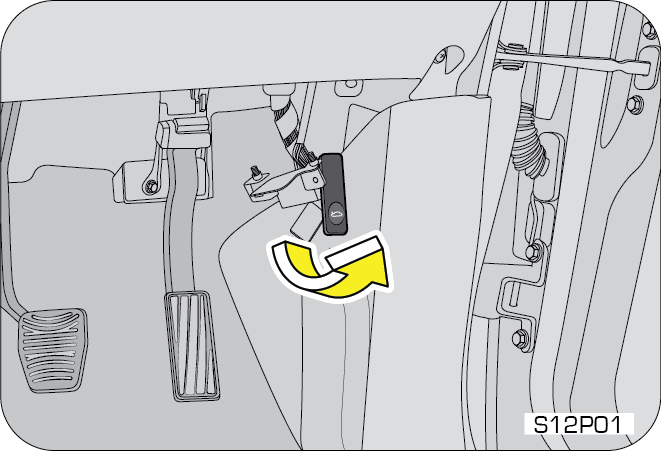
-
Lift the hood a little to access the safety latch holding the hood striker. This safety latch is located below the hood at the center
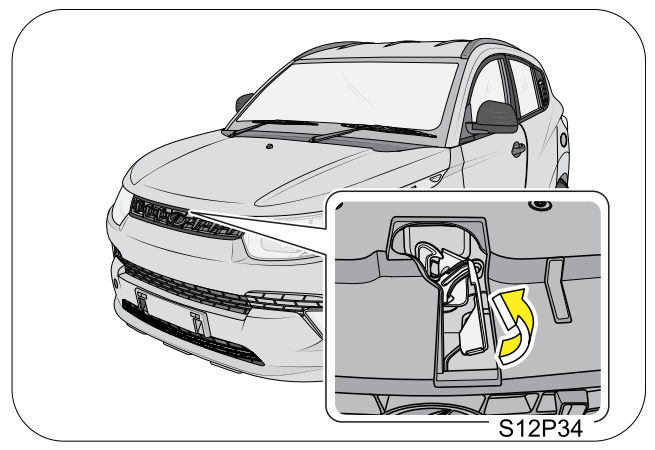
-
Move the safety latch to the left and lift the hood up
-
Remove the stay rod from the hood lock
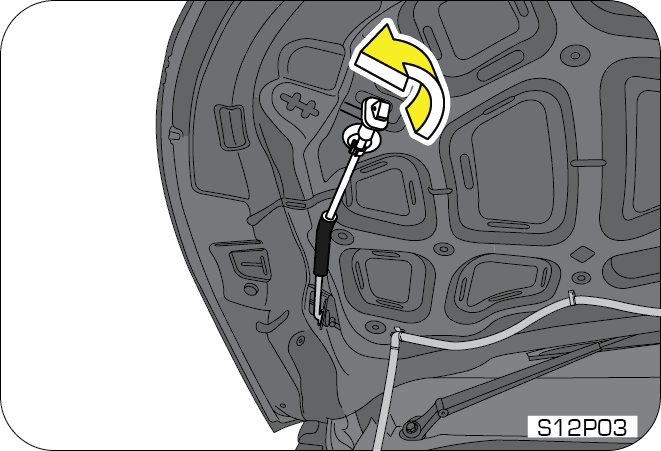
-
Support the hood by the stay rod in the slot provided
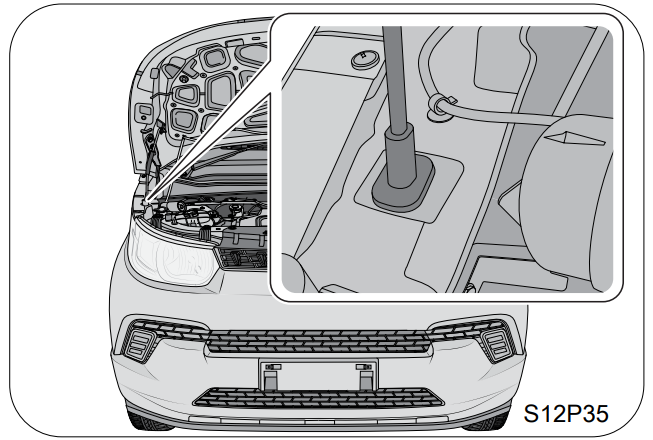
- Do not open the hood immediately after a drive; the engine compartment will be very hot
- Always double check to be sure that the hood is firmly latched before driving away. If it is not latched properly, the hood could open while the vehicle is being driven, causing a total loss of visibility, resulting in an accident
- Do not move the vehicle with the hood in the raised position, as vision is obstructed
Follow the below steps to close the hood;
- Pull the hood down to a few inches above its fully closed position
- Now, release the hood and allow it to fall by its own weight. The secondary latch is engaged now.
- Firmly press the hood down with both your hands to engage the primary latch. This ensures that safety latch firmly locks the hood in its fully closed position
13.3 Identifying Components in the Engine Compartment
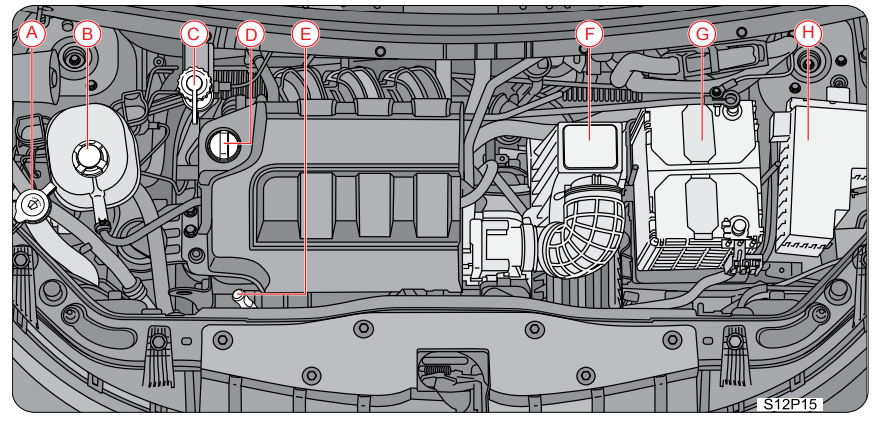
| A | Windshield Washer Fluid Reservoir | E | Dipstick (Engine Oil Level Checking) |
| B | Degassing Tank (Coolant Filling) | F | Air Filter |
| C | Brake/Clutch Fluid Reservoir | G | Battery |
| D | Engine Oil (Engine Oil Filling) | H | Engine Compartment Fuse Box |
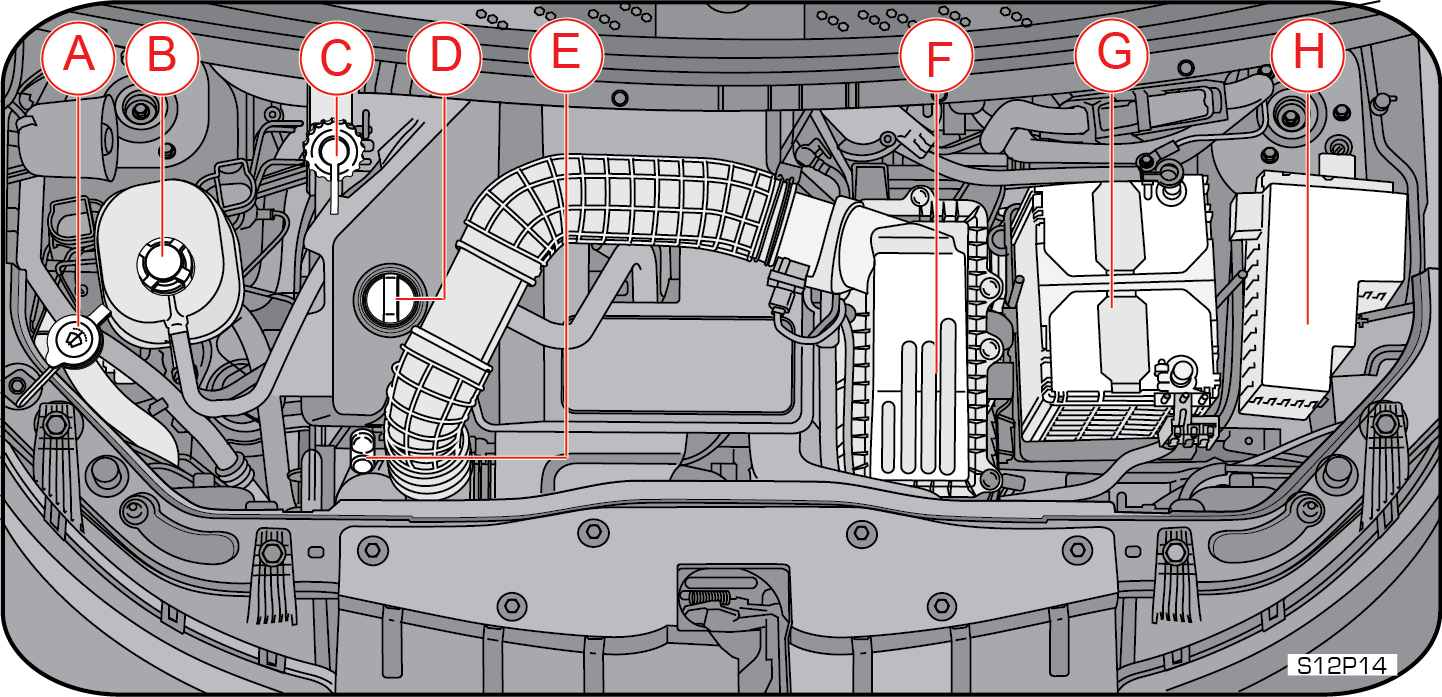
| A | Windshield Washer Fluid Reservoir | E | Dipstick (Engine Oil Level Checking) |
| B | Degassing Tank (Coolant Filling) | F | Air Filter |
| C | Brake/Clutch Fluid Reservoir | G | Battery |
| D | Engine Oil (Engine Oil Filling) | H | Engine Compartment Fuse Box |
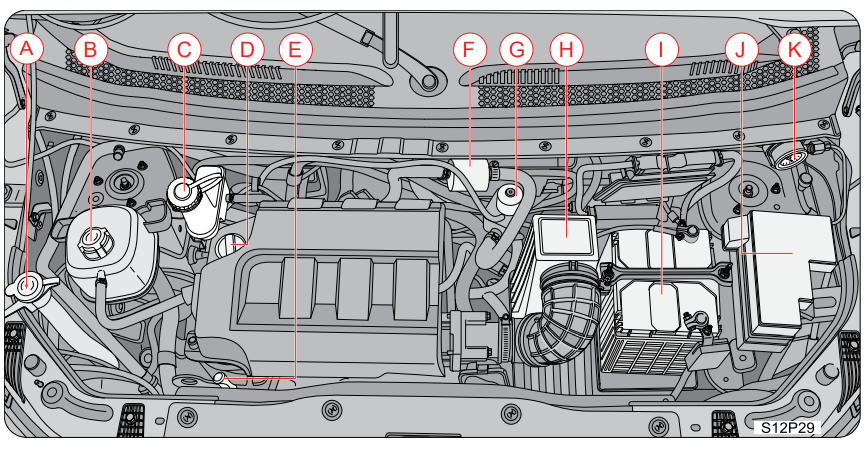
| A | Windshield Washer Fluid Reservoir | E | Dipstick (Engine Oil Level Checking) |
| B | Degassing Tank (Coolant Filling) | F | Low Pressure Filter |
| C | Brake/Clutch Fluid Reservoir | G | Pressure Regulator |
| D | Engine Oil (Engine Oil Filling) | H | Air Filter |
| I | Battery | J | Engine Compartment Fuse Box |
| K | Pressure Gauge |
Maintenance is classified as below;
- General Maintenance
- Scheduled Maintenance
13.4 General Maintenance
Exercise extreme caution when the hood is open and engine is ON.
Listed below are the general maintenance items that should be performed frequently. In addition to checking the items listed below, if you notice any unusual noise, fluid leakages, smell or vibration, you should investigate the cause or take your vehicle to your Authorized Mahindra Dealer or a qualified service shop immediately.
Make these checks only with adequate ventilation if you intend to run the engine.
- Front windshield washer fluid level
- Engine coolant level
- Battery condition
- Brake/Clutch fluid level
- Engine oil level
- Fluid leaks
- Hoses, joints and pipes for any abnormalities
- Lights
- Warning lamps
- Windshield wipe and wash
- Steering wheel
- Seats
- Seat belts
- Accelerator pedal
- Brake pedal
- Brakes
- Parking brake
- Gear lever shift mechanism
- Lamps
- Fluid leaks
- Doors and engine hood latches
- Tire inflation pressure
- Tire surface/thread and wheel bolts
13.5 In the Engine Compartment
13.5.1 Fluid Leaks
Check the engine compartment and the underbody of the vehicle for any leaks. If you smell fuel vapor or notice any leak, have the cause found and corrected immediately.
13.5.2 Engine Oil
Engine oil has the primary function of lubricating and cooling the inside of the engine. It plays a major role in maintaining the engine in proper working order. Therefore, it is essential to check the engine oil regularly.
13.5.3 Engine Oil Consumption
It is normal for engines to consume some engine oil during operation.
Causes of consumption in a normal engine are as follows;
- Oil is used to lubricate pistons, piston rings and cylinders. Thin films of oil, left over when pistons move in cylinders, are sucked into the combustion chamber due to high negative pressure generated when the vehicle is decelerating. This oil gets burnt in the combustion chamber
- Oil is also used to lubricate the stems of intake valves. Some of this oil is sucked into the combustion chamber together with the intake air and is burnt there
- Engine oil consumption depends upon the viscosity and quality of the oil, and upon the conditions in which the vehicle is driven. Oil consumption will be more due to high speed driving and frequent acceleration and deceleration. A new engine may consume more oil since its pistons, piston rings and cylinder walls are not conditioned
13.5.4 Checking/Topping the Engine Oil
- Make sure the vehicle is on level ground
- Turn the engine OFF and wait a few minutes for the oil to settle down into the oil sump
- Apply the parking brake
- Open the hood. Protect yourself from engine heat
- Locate and carefully remove the engine oil level dipstick
-
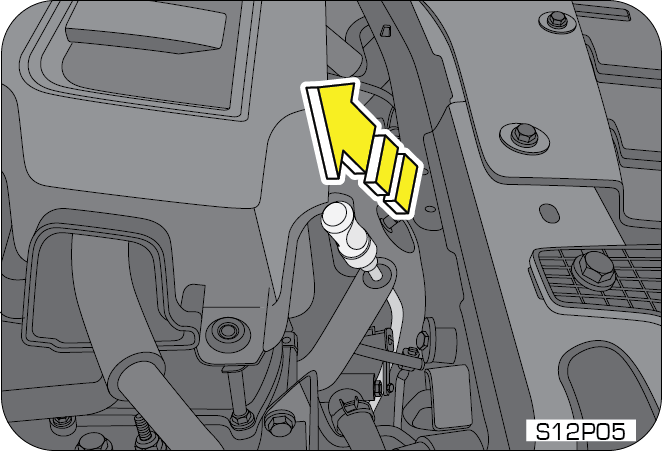
-
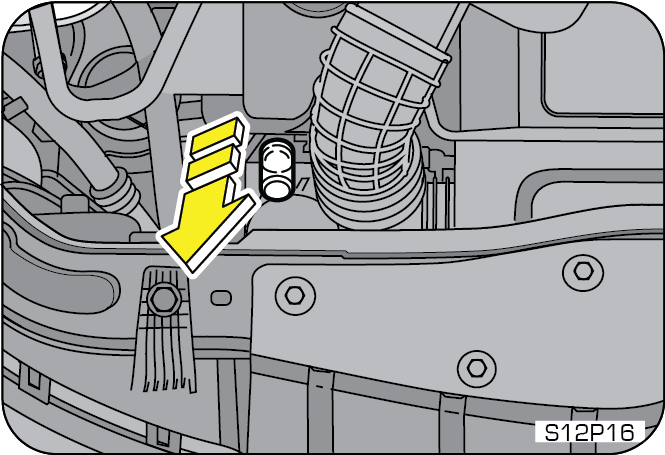
- Wipe the dipstick with a clean cloth. Insert the dipstick fully, then remove it again
- If the oil level is between “Two Dot marks”, the oil level is acceptable. DO NOT ADD OIL
- If the oil level is below the ‘Lower Dot mark’, add enough oil through the oil filler neck to raise the level within the Two Dot marks. Wait for a few minutes after every top up for the oil to settle down before checking the level.
-
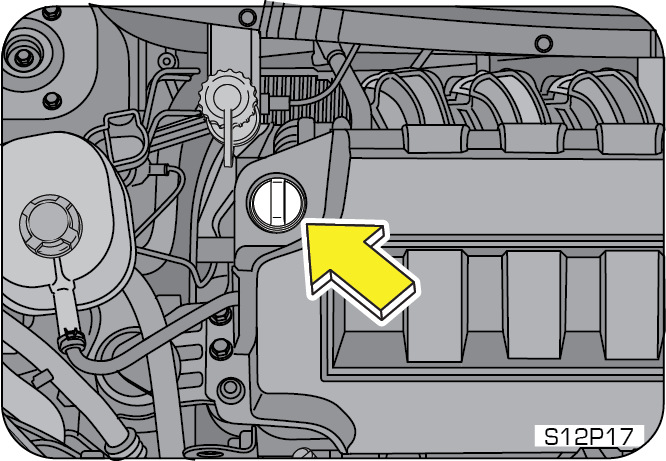
-
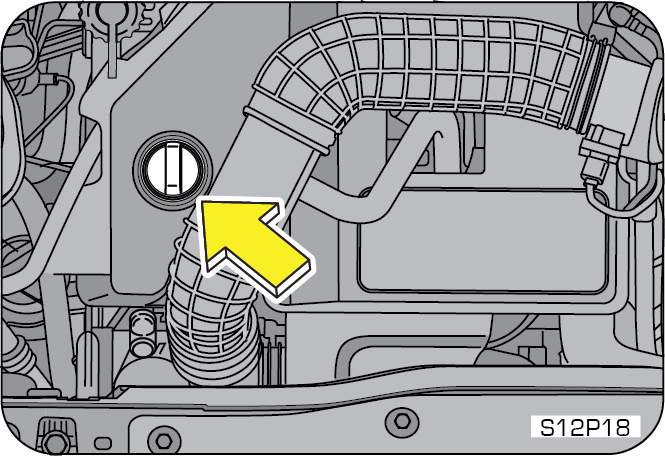
- Oil levels above the ‘Upper Dot’ mark may cause engine damage/poor performance.
- Put the dipstick and the oil filler cap back and ensure it is fully/properly seated.
To avoid possible oil loss and injury due to hot blow-by gas, DO NOT operate the vehicle with the engine oil level dipstick and/or the engine oil filler cap removed.
Draining/Changing of engine oil should always be done by an Authorized Mahindra Dealer.
13.5.5 Checking/Topping Engine Coolant Level
- Park the vehicle on a flat-horizontal surface. Keep the parking brake fully engaged. Shut-off the engine
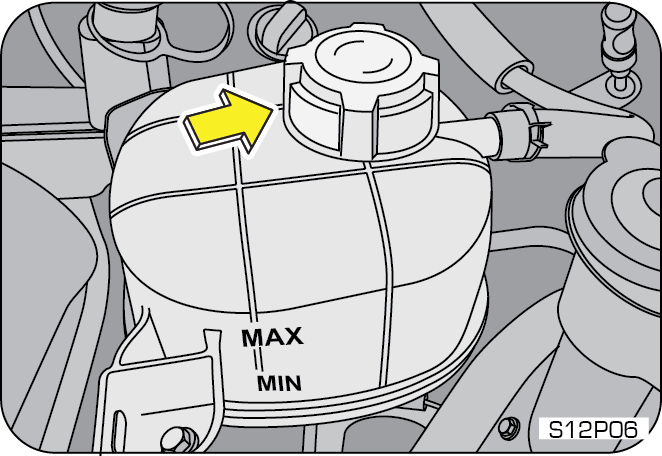
- Wait till the engine cools down and hence coolant temperature comes down to normal room temperature
- The coolant level should be between ‘MIN’ and ‘MAX’ marking provided on the coolant recovery tank
- In case the coolant level is below the ‘MIN’ marking, the coolant should be topped-up
- The coolant should be filled till the level rises above the ‘MIN’ but remain below the ‘MAX’ marking on the coolant recovery tank
- However if the Coolant Recovery Tank is found to be near empty, it is recommended that the system be checked at an Authorized Mahindra Dealer
Never open the pressure cap when the engine is hot. Hot coolant may splash resulting in serious personal injury or severe burns by the erupting liquid.
Top up only with recommended Ready-To-Use (RTU) coolants for ensuring performance, anti-freezing and corrosion protection. Do not add water directly. Mixing with other brands of coolant is not recommended and should be avoided.
Draining or changing of engine coolant should always be done by an Authorized Mahindra Dealer.
13.5.6 Checking/Topping Brake/Clutch Fluid
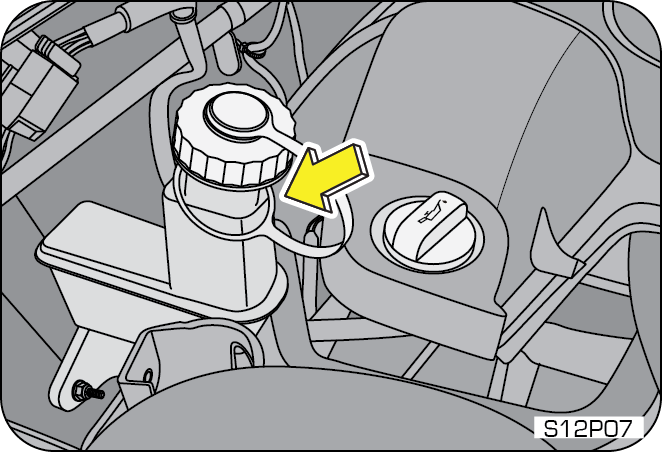
The brake system is supplied with brake fluid from the brake fluid reservoir located adjacent to the air filter.
The brake fluid level will drop slowly as the brakes wear, and will rise when the brake components are replaced. Fluid levels between the ‘MIN’ and ‘MAX’ lines are within the normal operating range; there is no need to add fluid. If the fluid levels are below the ‘MIN’ mark, the performance of the systems could be compromised; the brake/clutch operation could be spongy and gear change harder.
Top-up the recommended brake/clutch fluid till the ‘MAX’ mark or contact an Authorized Mahindra Dealer immediately.
Carefully clean the cap on the reservoir before you remove it and be sure no debris fall in the reservoir. Do not keep the reservoir open for longer than necessary to add brake fluid.
Use only brake/clutch fluid that meets Mahindra specifications. Refer to the ‘Lubricant and Capacities’ section.
Draining or changing of brake/clutch fluid should always be done by an Authorized Mahindra dealer.
13.5.7 Windshield Washer Fluid Top-up
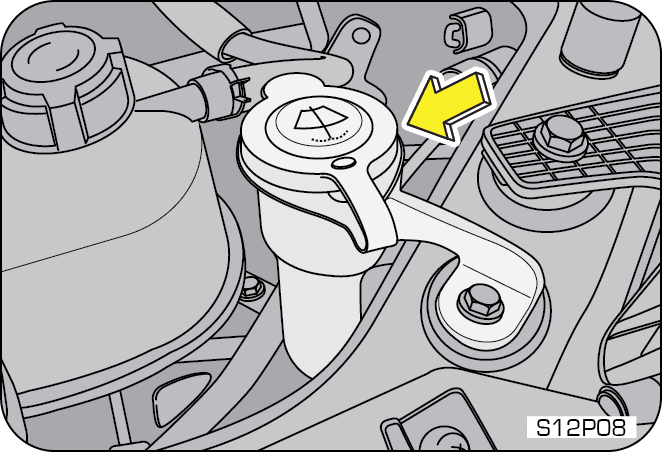
Top up the windshield washer reservoir as and when required. The fluid reservoir is located on the RHS of the engine bay behind the head lamp. The reservoir supplies washer fluid to both front and rear (if equipped).
In very cold weather conditions, fill the reservoir with washer fluid premixed with anti-freeze.
If you operate your vehicle in temperatures below 4.5ºC, use washer fluid with anti-freeze protection. Failure to use washer fluid with anti-freeze protection in cold weather could result in impaired windshield vision and increase the risk of injury or accident.
13.5.8 Checking the Wiper Blades
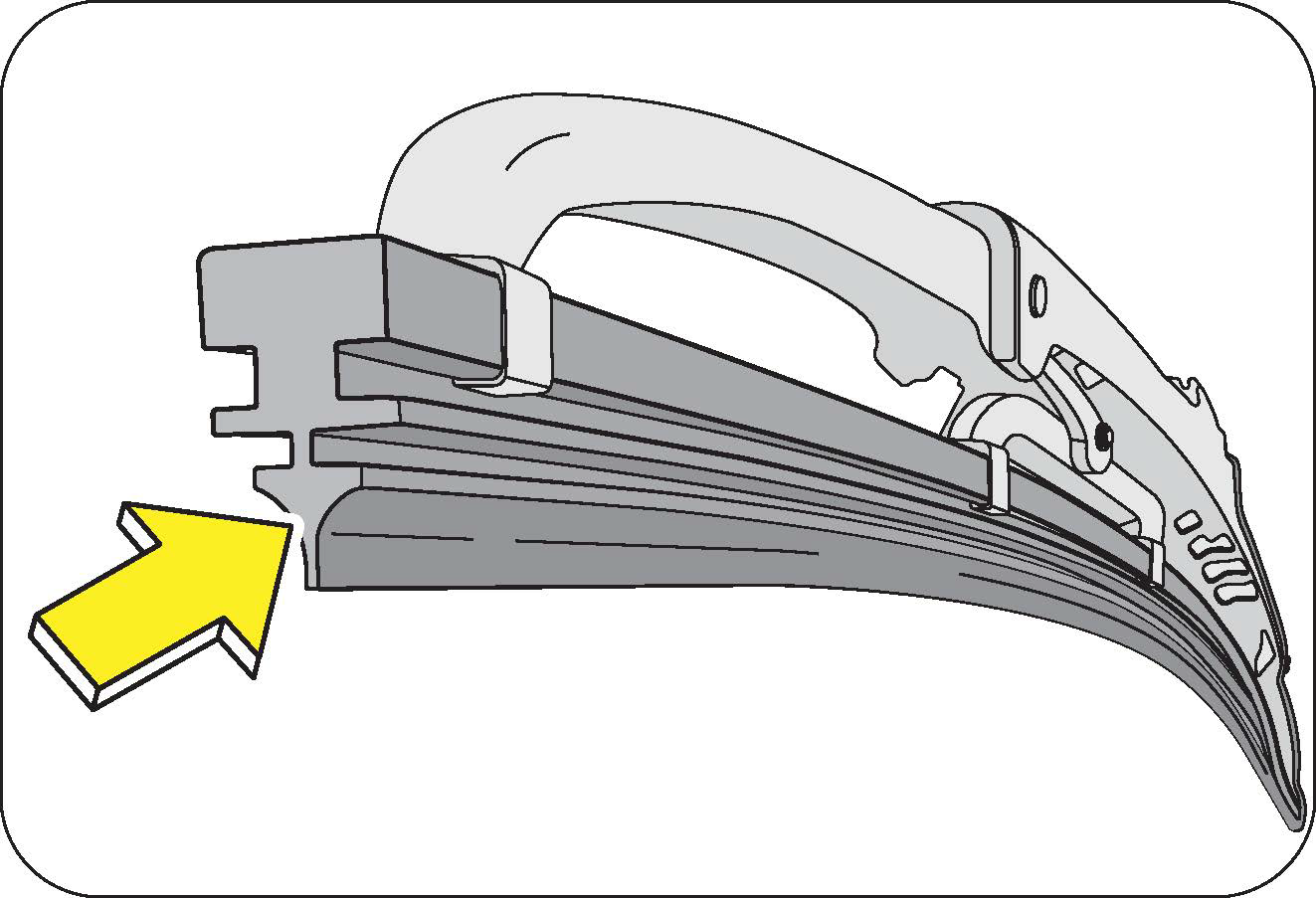
Lift the wiper arm from its position. Expose the blade lip for inspection. Clean the wiper blade lips with water applied with a soft sponge. If the wiper blade is not wiping the glass satisfactorily or is worn-out, cut, cracked or bulging get it replaced at an Authorized Mahindra Dealer.
13.5.9 Changing the Wiper Blade
- Lift the arm and position the wiper blade at right angles to the wiper arm
- Press the retaining clip in the opposite direction, disengage the wiper blade and pull it off the arm
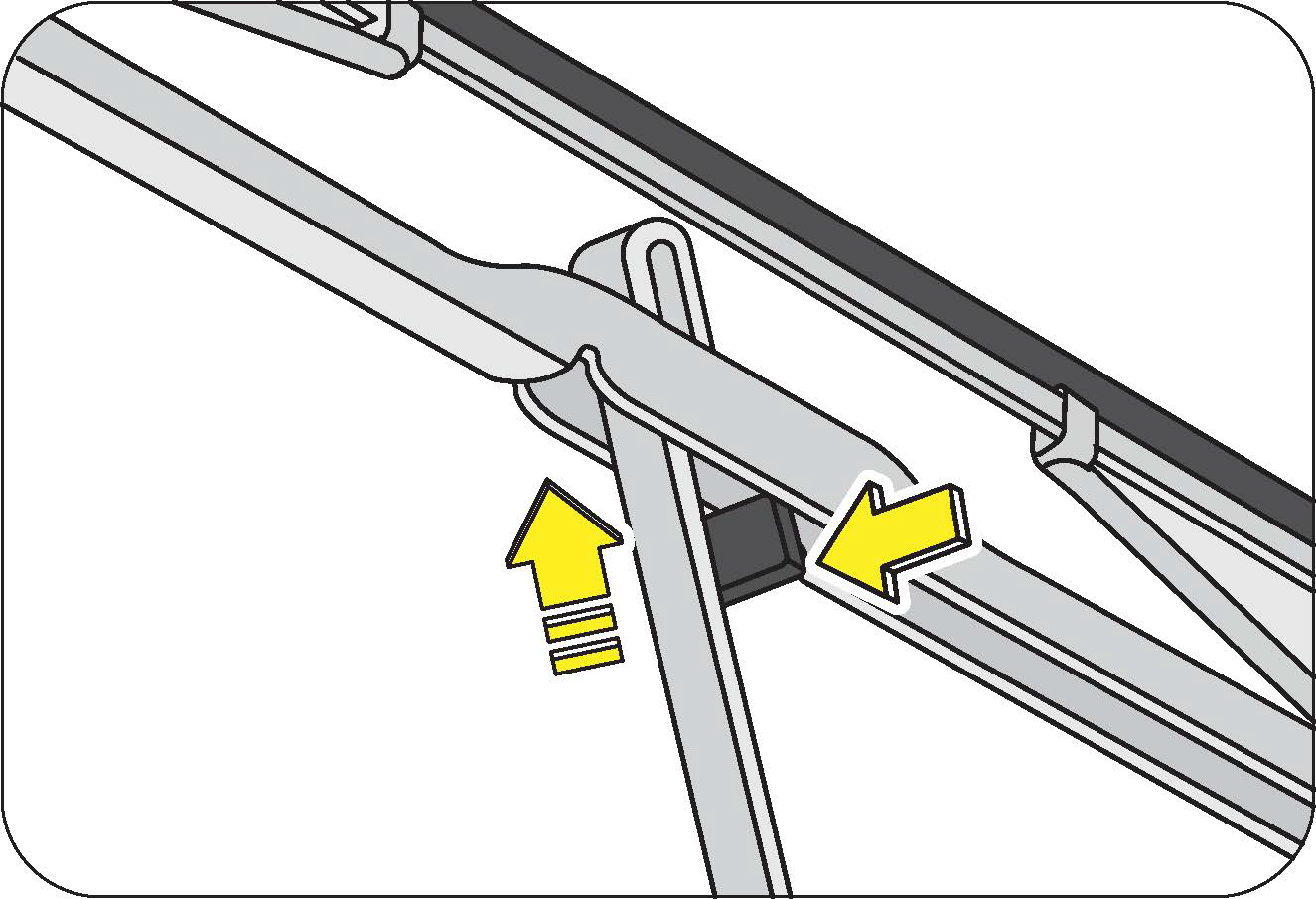
- Hold the end of the rubber and pull until the tabs are free of the metal support
- Carefully insert the new blade rubber. Then install the blade assembly in the reverse order of removal
13.6 Maintenance - Inside the Vehicle
13.6.1 Lights
Make sure the headlights, stop lights, tail lights, turn signal lights and other lights are all working. Check headlight aim.
13.6.2 Warning Messages and Lamps
Check all warning lamps appearing in the instrument cluster. Refer to the relevant sections in this manual for further details.
13.6.3 Seats
Check that all seat controls such as seat adjusters, seat back recliner, etc. operate smoothly and that all latches lock securely in any position. Check that the head restraints move up and down smoothly and that the locks hold securely in any latched position.
13.6.4 Seat Belts
Check that the seat belt system such as buckles, retractors and anchors operate properly and smoothly. Make sure the belt webbing is not cut, frayed, worn or damaged.
13.6.5 Accelerator Pedal
Check the pedal for smooth operation, uneven pedal effort or stickiness. Check the foot well and remove obstructions if any.
13.6.6 Brake Pedal
Check the pedal for smooth operation and proper clearance. Check the foot well and remove obstructions if any.
13.7 Maintenance - Outside the Vehicle
The following checks should be carried out from time to time, unless otherwise specified.
13.7.1 Lamps
Check and ensure proper functioning of all exterior lamps.
13.7.2 Fluid Leaks
Check the engine compartment and the underbody of the vehicle for any leaks. If you smell fuel vapor or notice any leak, have the cause found and corrected immediately.
13.7.3 Doors and Engine Hood
Check all doors and latches including the tailgate for proper functioning. Make sure the engine hood secondary latch secures the hood from opening when the primary latch is released.
13.7.4 Tyre Inflation Pressure
Check the tire pressure with a pressure gauge every week.
13.8 Battery
Your vehicle is equipped with a Mahindra genuine battery. For longer, trouble-free operation, keep the top of the battery clean and dry. Also, make certain the battery cables are always tightly fastened to the battery terminals.
If you see any corrosion on the battery or terminals, remove the cables from the terminals and clean with a wire brush. To prevent corrosion, apply petroleum jelly to the battery terminals. Tighten loose terminals and hold down clamp nuts only enough to keep the battery firmly in place. Tightening excessively may damage the battery terminals.
13.8.1 For Best Battery Service
- Keep the battery securely mounted
- Keep the battery top clean and dry
- Keep the terminals and connections clean, tight and coated with petroleum jelly or terminal grease
- Rinse any spilled electrolyte from the battery immediately with a solution of water and baking soda
Do not disconnect battery terminals while the engine is running. This will adversely affect all electronic controllers.
While removing the battery, always disconnect the negative terminal first. And while installing the battery, ensure the negative terminal is connected last.
It is recommended that the negative battery cable terminal be disconnected from the battery if you plan to store your vehicle for an extended period of time. This will minimize the discharge of your battery during storage.
Battery fluid is a corrosive acid solution; do not allow battery acid to contact eyes, skin or clothing. Don't lean over battery when attaching clamps or allow the clamps to touch each other. If acid splashes in the eyes or on the skin, flush contaminated area immediately with large quantities of water.
A battery generates hydrogen gas which is flammable and explosive. Keep any flame or spark away from the vent holes.
Keep batteries out of reach of children. Battery posts, terminals and related accessories contain lead and lead components. Wash hands after handling batteries.
If the battery has been disconnected or a new battery has been installed, the clock (if equipped) and the preset radio (if equipped) stations must be reset once the battery is reconnected.
The replacement battery must meet the specification of the originally fitted battery.
13.8.2 Battery Charge Indicator - Amaron (if equipped)
A battery charge indicator is provided for Amaron batteries to view the charge status at a glance. Green indicates the battery is okay, and light blue indicates battery needs recharge or technical assistance from Amaron.
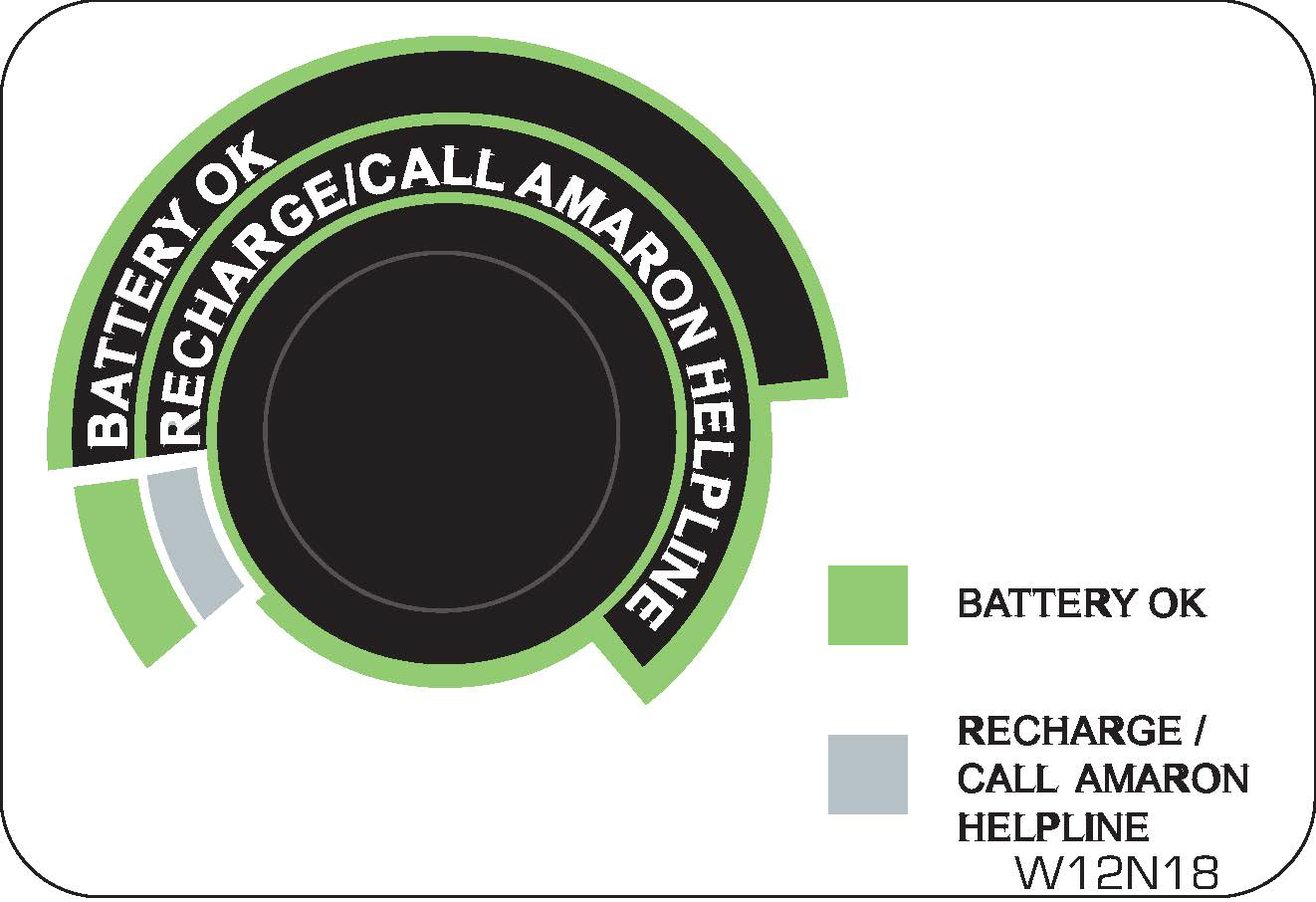
13.8.3 Battery Charge Indicator - Exide (if equipped)
A battery charge indicator is provided for Exide batteries to view the charge status at a glance.
Three charge indicators are provided which give the following information;
- GREEN — OK (Battery condition good)
- WHITE— Needs charging
- RED— Add distilled water
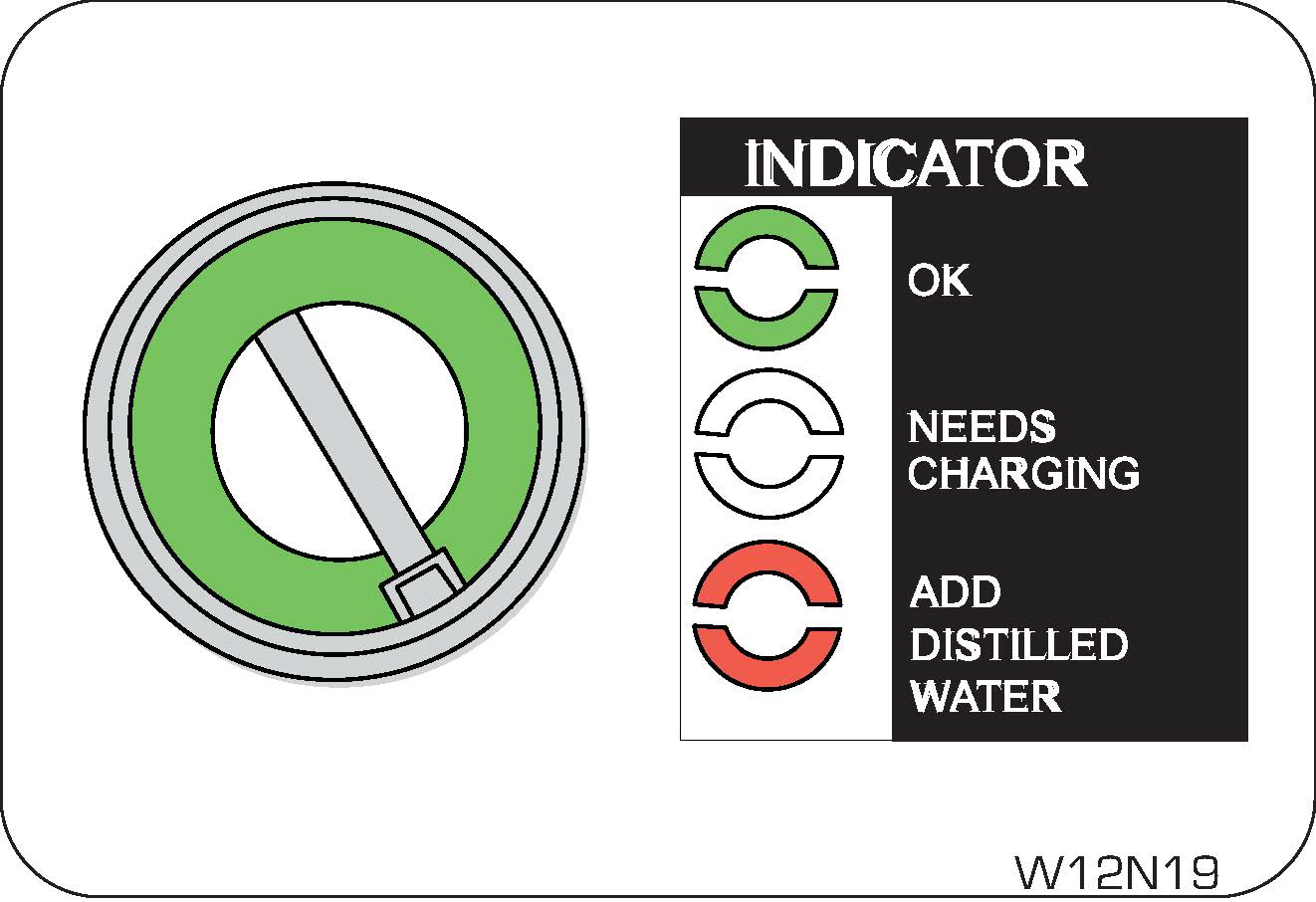
13.8.4 Checking the Electrolyte Level
Check the electrolyte level and specific gravity at intervals of three months. Check all the six cells for proper electrolyte levels. If the level is below the lower marker, add distilled water until the level reaches the upper marker.
Adding distilled water;
- Remove the vent plugs
- Add distilled water to all the cells that require the fluid and secure the plugs properly
13.9 Appearance Care and Protection
13.9.1 Washing the Exterior
- Wash your vehicle regularly with cool or lukewarm water and a neutral pH soap
- Never use strong household detergents or soap, such as dish washing or laundry liquid. These products can discolor and spot painted surfaces
- Never wash a vehicle that is ‘hot to the touch’ or during exposure to strong, direct sunlight
- Always use a clean sponge or car wash mitt with plenty of water for best results
- Dry the vehicle with a chamois or soft terry cloth towel in order to eliminate water spotting
- It is especially important to wash the vehicle regularly during the winter months, as dirt and road salt are difficult to remove and cause damage to the vehicle
- Immediately remove items such as petrol, diesel fuel, bird droppings and insect deposits; they can cause damage to the vehicle's paint work and trim over time
13.9.2 Engine Compartment
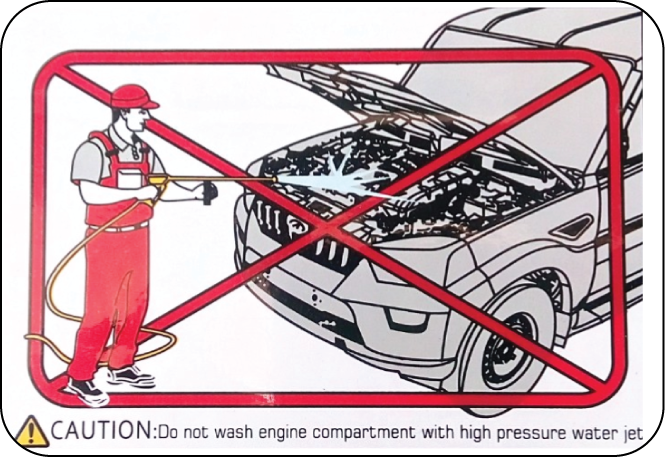
Do not wash the engine or engine compartment with pressurized water.
13.9.3 Exterior Chrome
- Wash the vehicle first, using cool or lukewarm water and a neutral pH shampoo
- Use the custom bright metal cleaners, available at your Authorized Mahindra Dealer. Apply the product as you would wax to clean chrome parts; allow the cleaner to dry for a few minutes, and then wipe off the haze with a clean, dry rag
- Never use abrasive materials such as steel wool or plastic pads as they can leave scratches on the chrome surface
- After polishing the chrome parts, you can also apply a coating of Premium Liquid Wax, available at your Authorized Mahindra Dealer, or an equivalent quality product to help protect from environmental effects
13.9.4 Paint Chips
- Mahindra dealers have the exact touch-up paint to match your vehicle's color
- Take your vehicle to an Authorized Mahindra Dealer for paint touch-up or paint repairs
- Remove particles such as bird droppings, tree sap, insect deposits, tar spots, road salt and industrial fallout before repairing paint chips
- Always read the instructions before using the products
13.9.5 Plastic (Non-painted) Exterior Parts
Use only approved products to clean plastic parts. These products are available with your authorized dealer. You can use these cleaners;
- For routine cleaning of plastic parts
- For tar or grease spots
- For plastic head lamp lenses
13.9.6 Windows and Wiper Blades
The front/rear windshield, side windows and the wiper blades should be cleaned regularly. If the wipers do not wipe properly, substances on the vehicle's glass or the wiper blades may be the cause. These may include hot wax treatments used by commercial car washes, water repellent coatings, tree sap, or other organic contamination; these contaminants may cause squeaking or chatter noise from the blades, and streaking and smearing of the windshield.
To clean these items follow these tips;
- The windshield, rear windows and side windows may be cleaned with a non-abrasive cleaner such as Clear Spray Glass Cleaner, available at your Authorized Mahindra Dealer.
- The wiper blades can be cleaned with alcohol or Premium Windshield Washer Concentrate, available at your Authorized Mahindra Dealer. This washer fluid contains a special solution in addition to alcohol which helps remove the hot wax deposited on the wiper blade and windshield. Be sure to replace wiper blades when they appear worn or do not function properly.
- Do not use abrasives, as they may cause scratches.
- Do not use fuel, kerosene, or paint thinner to clean any glass parts.
If you cannot remove those streaks after cleaning with the glass cleaner or if the wipers chatter and move in a jerky motion, clean the outer surface of the windshield and the wiper blades using a sponge or soft cloth with a neutral detergent or mild-abrasive cleaning solution. After cleaning, rinse the windshield and wiper blades with clean water. The windshield is clean if beads do not form when you rinse the windshield with water.
Do not use sharp objects, such as a razor blade, to remove decals, as it may cause damage to the glass or rear windshield heater grid lines (if equipped).
13.9.7 Instrument Panel/Interior Trim and Cluster Lens
Do not use chemical solvents or strong detergents when cleaning the steering wheel or instrument panel.
Clean the instrument panel, interior trim areas and cluster lens with a clean and damp white cotton cloth, then with a clean and dry white cotton cloth; you may also use Dash and Vinyl Cleaner on the instrument panel and interior trim areas.
- Avoid cleaners or polishes that increase the gloss of the upper portion of the instrument panel. The dull finish in this area helps protect the driver from undesirable windshield reflection
- Do not use household or glass cleaners as these may damage the finish of the instrument panel, interior trim and cluster lens
If a staining liquid like coffee/juice has been spilled on the instrument panel or on the interior trim surfaces, clean as follows;
- Wipe up spilled liquid using a clean white cotton cloth
- Apply Vinyl Cleaner to the wiped area and spread around evenly
- Apply cleaner to a clean white cotton cloth and press the cloth onto the soiled area and allow this to set in at room temperature for 30 minutes
- Remove the soaked cloth, and if it is not soiled badly, use this cloth to clean the area with a rubbing motion for 60 seconds
- Following this, wipe area dry with a clean white cotton cloth
13.9.8 Interior Maintenance
For fabric, carpets, cloth seats, safety belts and seats:
- Remove dust and loose dirt with a vacuum cleaner
- Remove light stains and soil with carpet and upholstery cleaner
- If grease or tar is present on the material, spot-clean the area first with a stain remover
- Do not use household cleaning products or glass cleaners, which can stain and discolor the fabric and affect the flame retardant abilities of the seat materials
- Do not use cleaning solvents, bleach or dye on the vehicle's safety belts, as these actions may weaken the belt webbing.
13.9.9 Underbody
Flush the complete underside of your vehicle frequently. Keep body and door drain holes free from packed dirt. You can also use an anti-corrosion spray for the underbody to avoid rusting and corrosion especially for vehicles in coastal places.
13.10 Air Conditioning System Maintenance
Your vehicle's air-conditioning is a sealed system. Any major maintenance, such as recharging should be done by a qualified technician. However, you can do a few things by yourself to make sure the air conditioning works efficiently.
Run the air-conditioning system at least once a week, even during the cold weather months. Run it for at least ten minutes with the engine running at normal operating temperature. This circulates the lubricating oil contained in the refrigerant.
Whenever you get the air-conditioning system serviced, make sure the service facility uses a refrigerant recycling system. This system captures the refrigerant for re-use. Releasing the refrigerant into the atmosphere may cause damage to the environment.
13.11 Vehicle Storage
If you are leaving your vehicle for more than 2 weeks you may want to take stopping to protect your battery. Disconnect the negative cable from the battery. Anytime you store your vehicle, or keep it out of service (i.e. vacation) for two weeks or more, run the air conditioning system at idle for about five minutes in the fresh air mode and high blower speed setting. This will ensure adequate system lubrication to minimize the possibility of compressor damage when the system is started again.
It is recommended storing the vehicle in a covered, clean, dry, well leveled, ventilated and closed place.
13.12 Winter Care
13.12.1 Dealing With Ice
Make sure you have window ice scrapers and de-icers for the locks. When you're stuck, having a small shovel is useful to dig out of the snow. The weight of a bag of sand in the trunk will give added traction in rear-wheel drive vehicles and can be used to sprinkle on the snow and ice to gain better traction. And don't forget personal protection such as a warm coat, hat, gloves and a blanket, in case you get stuck in a storm.
13.12.2 Keep Enough Fuel in the Tank
Never let the fuel level in the tank drop below the half-full mark. A sudden storm with unexpected heavy rains could leave you stranded for hours. Having adequate fuel supply will allow you to idle the engine from time to time to keep warm.
Do not:
- Tap the ice on the window to crack it or chip it for a good place to start scraping. You could end up cracking more than the ice and end up with a cracked or shattered windshield/ window
- Pour warm or hot water on the windshield to melt ice. This will crack your windshield
13.12.3 During Winter Storage
Start the engine occasionally, here are a few pointers to keep in mind;
- Run it in a well ventilated area. Carbon monoxide can build up quickly
- Run for a minimum of 20 minutes to allow the engine to come up to the normal operating temperature. This will allow the oil to circulate and will also open up the thermostat so that your radiator anti-freeze circulates as well
- Start up the air conditioner and/or heater and run both for 10 minutes or so. Again, circulating fluids is essential for good life of the system
- If your vehicle has power steering, you may want to turn the wheels a few times to keep the fluids flowing
13.12.4 Exterior
Wash and wax your car to provide an extra layer of protection to your paint.
13.12.5 Vinyl and Rubber
Use a good conditioner on all vinyl and rubber parts to prevent from drying out.
13.12.6 Interior
Clean the glass, shampoo the carpets, dig in between the seats to see what's there, clean the upholstery in all nooks and corners.
13.12.7 Engine
Check all hoses and wires to make sure everything is in good condition and replace any that need to be. The last thing to do is to make sure the internal components of the engine remain lubricated and don't corrode.
If the engine is being started after a very long period of non-use, warm up the engine at an idle speed for 2-3 minutes before driving the vehicle.
13.13 Bulb Replacement
13.13.1 Head Lamp Bulb Replacement
The head lamp bulb can be replaced without removing the head lamp assembly from the vehicle.
To replace the head lamp bulb;
- Ensure ignition is switched OFF
- Disconnect the head lamp connector from bulb
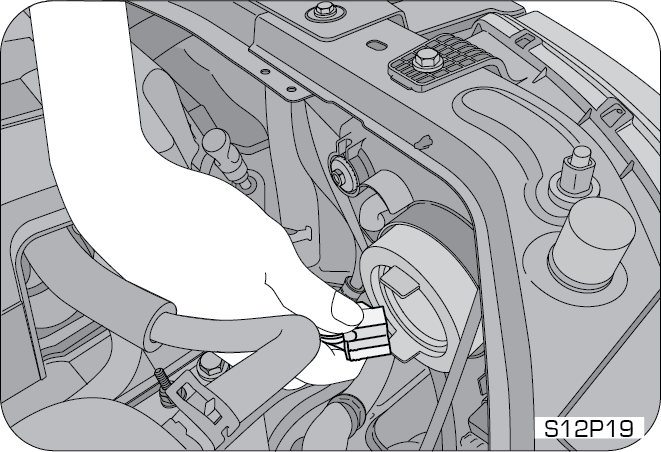
- Remove rear dust cover from the head lamp
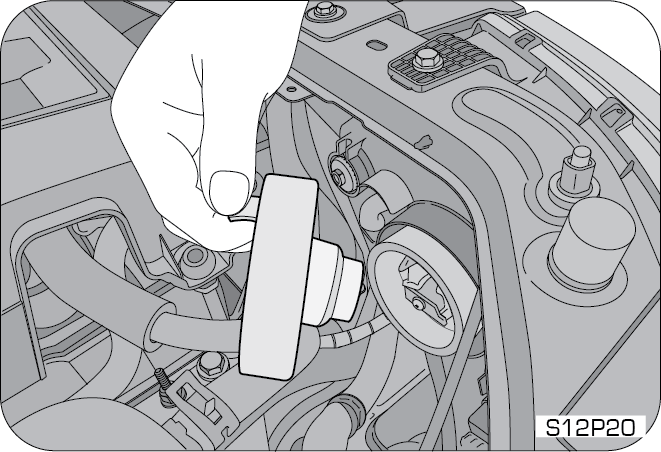
- Detach the bulb assembly from the head lamp by unlocking the wire clamp
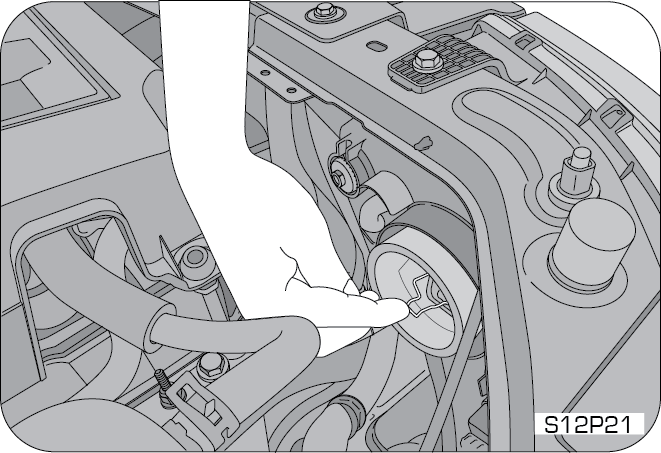
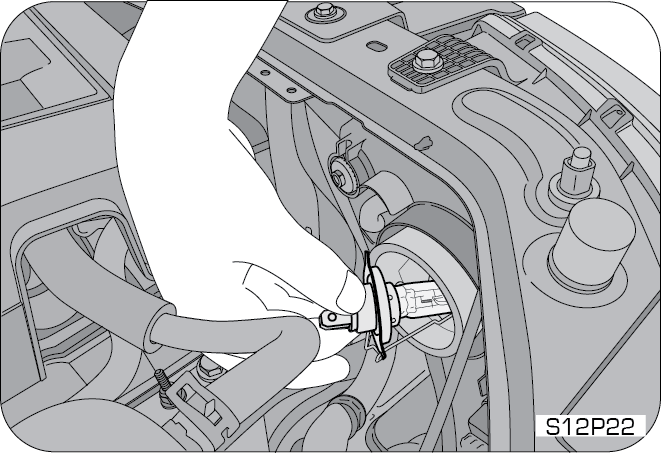
- Insert the new bulb (of the same wattage), and follow the reverse procedure to assemble the bulb assembly in the headlight assembly
- Clamp the bulb assembly by wire clamp properly
Do not touch the new bulb with your fingers. Oil contamination will severely shorten bulb life. If the bulb comes in contact with any oily surface, clean the bulb with rubbing alcohol.
To avoid burning yourself, do not replace the light bulbs when they are hot. Halogen bulbs have pressurized gas inside and are to be handled with special care. Mishandling it may cause the bulb to burst or shatter. Hold the bulb with its metal/plastic holder/base and do not touch the glass part with bare hands.
Using bulbs with units of higher output capacity/wattage is illegal and may damage your vehicle’s electrical system.
Replacement bulbs must meet the specification of originally fitted bulbs.
13.14 Scheduled Maintenance
The scheduled maintenance jobs listed in the ‘Scheduled Maintenance Chart’ are those required to be carried out at regular predetermined intervals.
To make sure that your vehicle runs efficiently all the time, follow the maintenance schedule. The service interval for the scheduled maintenance is determined by the odometer reading. Take your vehicle to an Authorized Mahindra Service Station only. Trained technicians and genuine Mahindra parts at Mahindra Authorized service stations are best for your vehicle. They will perform all the scheduled maintenance jobs reliably and economically. Inadequate, incomplete and insufficient servicing may result in problems.
The owner should retain records/documents that proper maintenance has been performed as prescribed.
13.15 Maintenance Schedule Chart
| Description | Inspect/Replace Interval | Free Services | Paid Services | ||||||||||
|---|---|---|---|---|---|---|---|---|---|---|---|---|---|
| 3000 | 10000 | 20000 | 30000 | 40000 | 50000 | 60000 | 70000 | 80000 | 90000 | 100000 | |||
Engine |
|||||||||||||
| Engine Oil 1 | First 3000, 10000 kms, then every 10000 kms | R | R | R | R | R | R | R | R | R | R | R | |
| Engine Oil Filter | First 3000, 10000 kms, then every 10000 kms | R | R | R | R | R | R | R | R | R | R | R | |
| Auto Tensioner & Drive Belts | Replace Every 100000 kms | I | I | R | |||||||||
| Spark Plugs (Only for Petrol & Bi-Fuel) | Replace every 40000 kms | R | R | ||||||||||
| Coolant | First 60,000 then at every 80000 kms or 3 years whichever occur earlier |
I | I | I | R | I | I | ||||||
| Low Pressure Filter (CNG) | Replace every 20000 km | R | R | R | R | R | |||||||
| Filler receptacle O-ring(CNG) | Replace every 60000 km | R | |||||||||||
| Cylinder leak testing and certification (CNG) | Every 3 years from the date of initial testing by government approved testing agency | ||||||||||||
| Air, Fuel and Exhaust | |||||||||||||
| Air filter element | Replace every 30000 km at normal conditions. Under dusty operating conditions clean at 5000 km and replace at every 20,000 km |
C | C | C | R | C | C | R | C | C | R | C | |
| Fuel Filter Element (Petrol) | Replace every 20000 km | R | R | R | R | R | |||||||
| Fuel Filter Element (Diesel) | Replace every 30000 km | R | R | R | |||||||||
| Water in Fuel Filter (Diesel) | Drain as per interval or whenever indicator glows | C | C | C | C | C | C | C | C | ||||
Transaxle |
|||||||||||||
| Transaxle Oil | Replace at 10000 km, 100000 km then every 100000 km or 3 years whichever earlier | R | R | ||||||||||
Axles, Wheels and Tires |
|||||||||||||
| Driveshaft and boots | Inspect every service | I | I | I | I | I | I | I | I | I | I | ||
| Tire Rotation | Inspect every 10000 km | I | I | I | I | I | I | I | I | I | I | ||
Brakes |
|||||||||||||
| Brake & Clutch Fluid - Level & Leak Check | Replace Every 40000 km or 2 years whichever occur earlier | I | I | R | I | R | I | ||||||
| Brake Pads/Calipers | Inspect every 10000 km | I | I | I | I | I | I | I | I | I | I | ||
| Brake Drum and Lining | Inspect every 20000 kms | I | I | I | I | I | |||||||
| Parking Brake Operations | Adjust at 3000, 10000km ,then every 20000 km | A | A | A | A | A | A | ||||||
Suspension |
|||||||||||||
| Suspension Bushes | Inspect at every 20000 kms | I | I | I | I | I | |||||||
| Suspension Arms & Links | Inspect at every 20000 kms | I | I | I | I | I | |||||||
Steering |
|||||||||||||
| Steering Gear rack linkage and boots | Inspect every service | I | I | I | I | I | I | I | I | I | I | I | |
| Wheel Alignment | At every 40000 kms. If abnormal tyre wear is noticed, shorter intervals recommended | ||||||||||||
Electricals |
|||||||||||||
| Battery Electrolyte Level | Inspect every service | I | I | I | I | I | I | I | I | I | I | I | |
| Battery Electrolyte Specific Gravity | Inspect every alternate service | I | I | I | I | I | I | ||||||
| All Lamps, Horns, Wipers and Washers | Inspect every service | I | I | I | I | I | I | I | I | I | I | I | |
| Head Lamp Aiming | Inspect at 3000 km | I | |||||||||||
| HVAC | |||||||||||||
| Paper Filters | Replace every 10000 kms | R | R | R | R | R | R | R | R | R | R | ||
| Mesh Filter | Inspect every service | C | C | C | C | C | C | C | C | C | C | C | |
Final Inspection |
|||||||||||||
| Tyre Pressure | Inspect at 3000, 10000, then every 10000 kms | I | I | I | I | I | I | I | I | I | I | I | |
| Under Chassis Bolts for Tightness | Inspect at 3000, 20000, then every 20000 kms | I | I | I | I | I | I | ||||||
| Exhaust Pipe Mountings and Damage/Leaks | Inspect at 3000, 20000, then every 20000 kms | I | I | I | I | I | I | ||||||
| Road Test - if any complaints reported | Inspect every service | I | I | I | I | I | I | I | I | I | I | I | |
| A = Adjust as Necessary; I = Inspect & correct. Replace if worn out or faulty ; R = Replace ; C = Clean ; | |||||||||||||
| *On chargeable basis; | |||||||||||||
| 1- For Petrol engine, if the vehicle operates in dusty environment, high humid and predominant city drive condition oil change at every 5000 km or 1 year whichever earlier | |||||||||||||